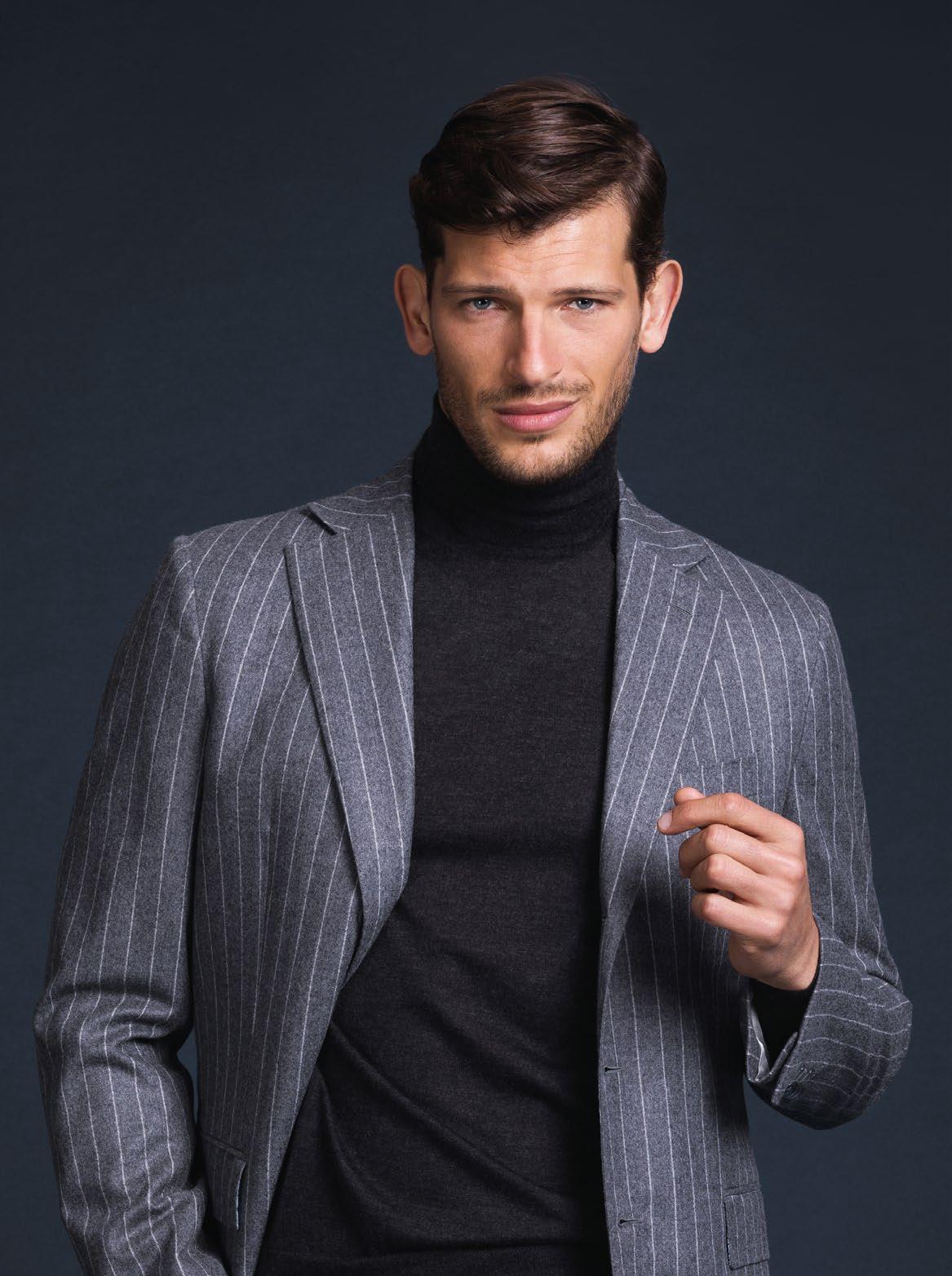



100 International Brands


 Jewels by Gil Zohar Art
Jewels by Gil Zohar Art








 Jewels by Gil Zohar Art
Jewels by Gil Zohar Art

The search for a new paradigm - inclusive, fair, capable of considering people in their entirety and accompanying them towards a new harmony with nature and the outside world - is now a central theme in the philosophy and communication of fashion houses and luxury creatives. This holistic approach to production regards all segments - from jewellery to fashion and watchmaking, from interior design to packaging. More and more often, the valuable product is perceived by consumers, especially the younger ones, as “beautiful and well made”, therefore worthy of purchase, if respectful not only of aesthetic standards but also of the environment and society; but it is even more desirable if it is the product of a corporate heritage or of complex and innovative projects and therefore narrator of a surprising and original story, to be preserved over time - it is no coincidence that collecting is experiencing a moment of great vitality. As always, goldsmiths have reacted promptly to these signals, focusing on innovation, technology and design, ready, in the coming months, to face all the challenges of an increasingly global, interconnected and engaging market.
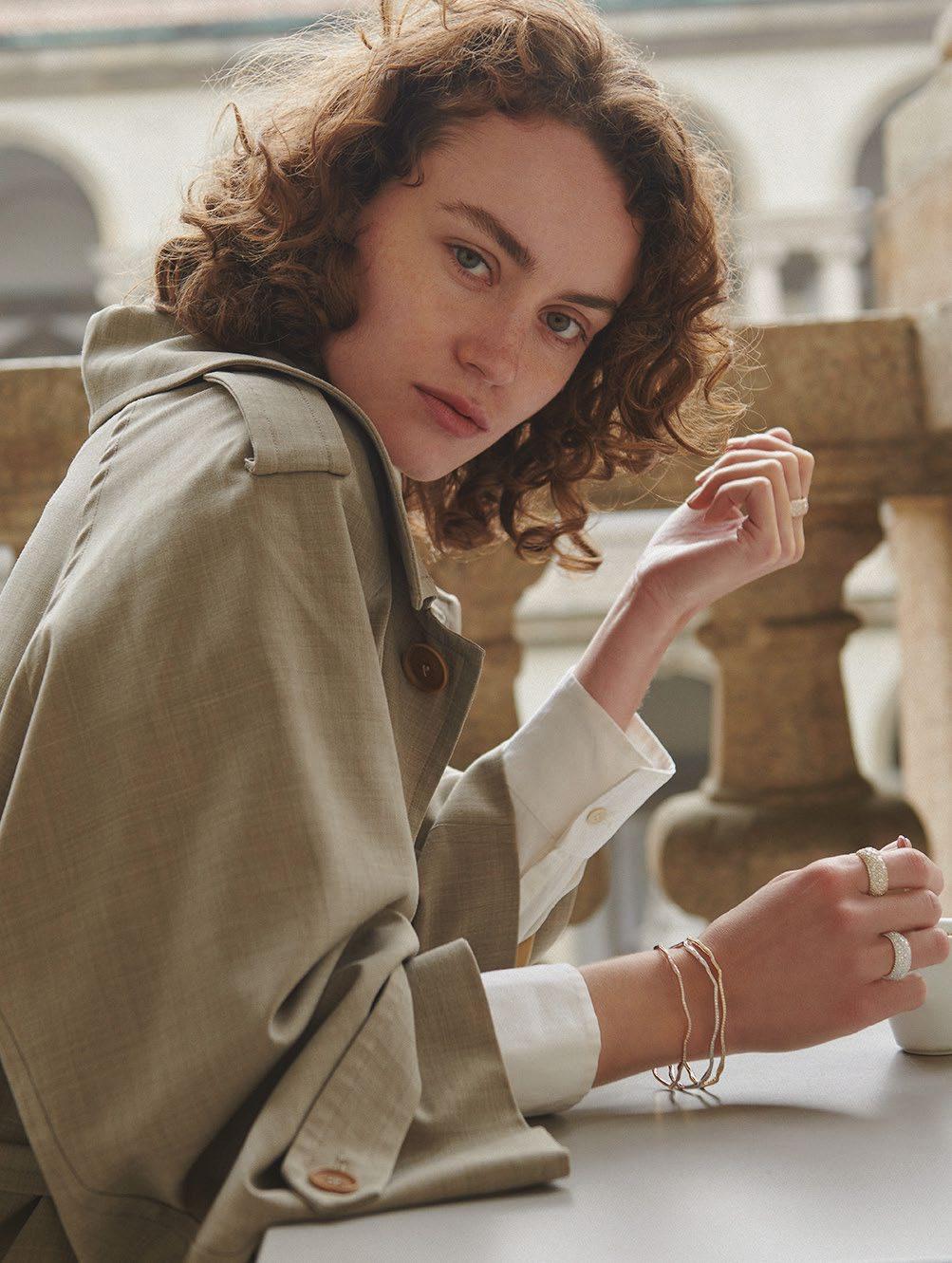
04 | Dec22
EDITOR-IN-CHIEF Vincenzo Carbone
EDITORIAL DIRECTOR
Domenico Festa
domenico.festa@huesersmagazine.com
EDITORIAL COORDINATOR
Antonella Garello
antonella.garello@huesersmagazine.com
ART DIRECTOR
Fabrizio Majerna
CONTRIBUTORS
Claudia Carletti, Rosa Chiesa, Riccardo Ferrato, Luigi Gaballo, Ivan Genasi, Davide Passoni, Samantha Primati, Asia Redolfi, Chiara Sini, Chiara Vitulo, Donatella Zappieri
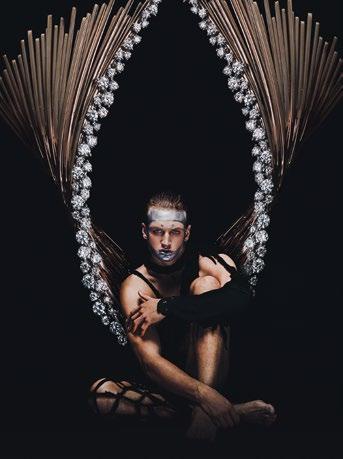
NAVA COMUNICAZIONE
Via Lattanzio, 15 - 20137 Milano - Italy
CONTACTS
editorialstaff@huesersmagazine.com
HUESERS IS PUBLISHED BY
PRODES ITALIA SRL
Via Sansovino, 6 - 20133 Milano - Italy +39 02.36580208 info@huesersmagazine.com
ADVERTISING adv@huesersmagazine.com
Italy
Barbara Pedone
barbara@prodesitalia.com - +39 3286345142
Other Countries
Karen Tamayo
karen@prodesitalia.com - +39 3517466115
PRINTED BY
Denona doo
Getaldićeva 1 - 10 000 Zagreb - Croatia
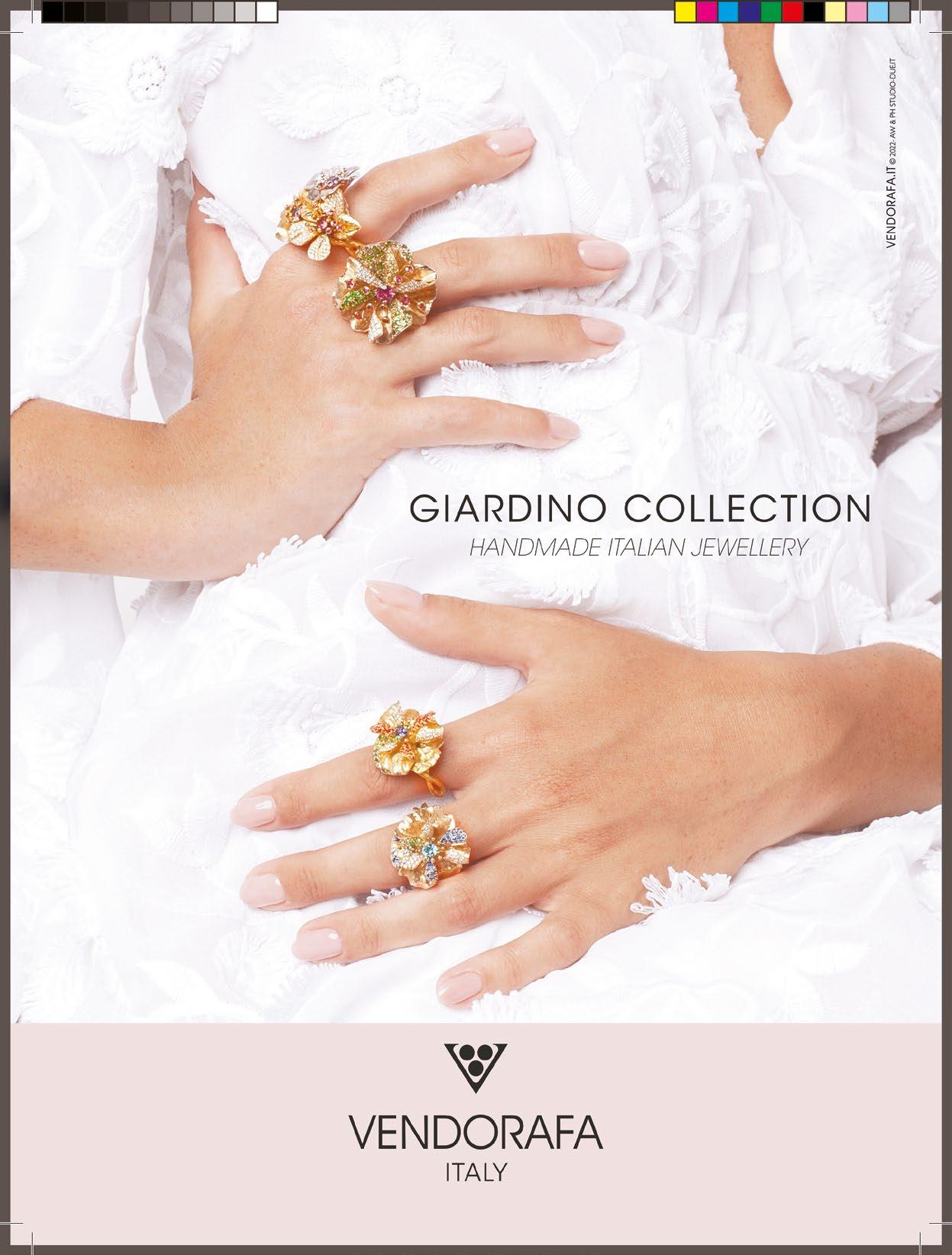
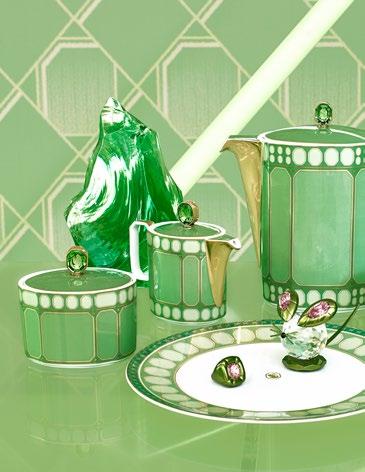

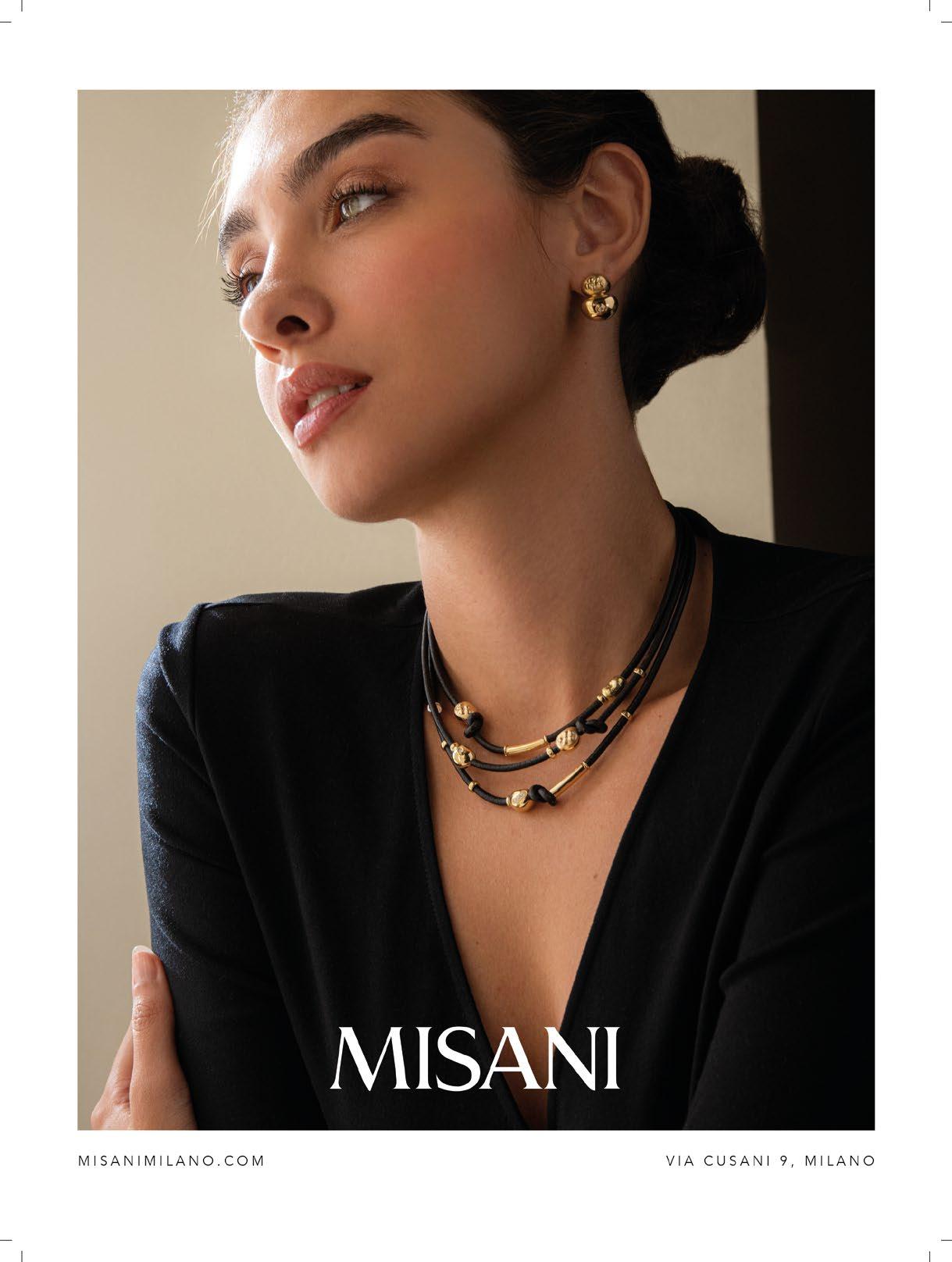


Via Scrimiari 26/A 37100 Verona - Italia - petronilla.eu - info@petronilla.eu
petronilla.eu

A conversation with Valérie Messika, the queen of disruptive diamonds
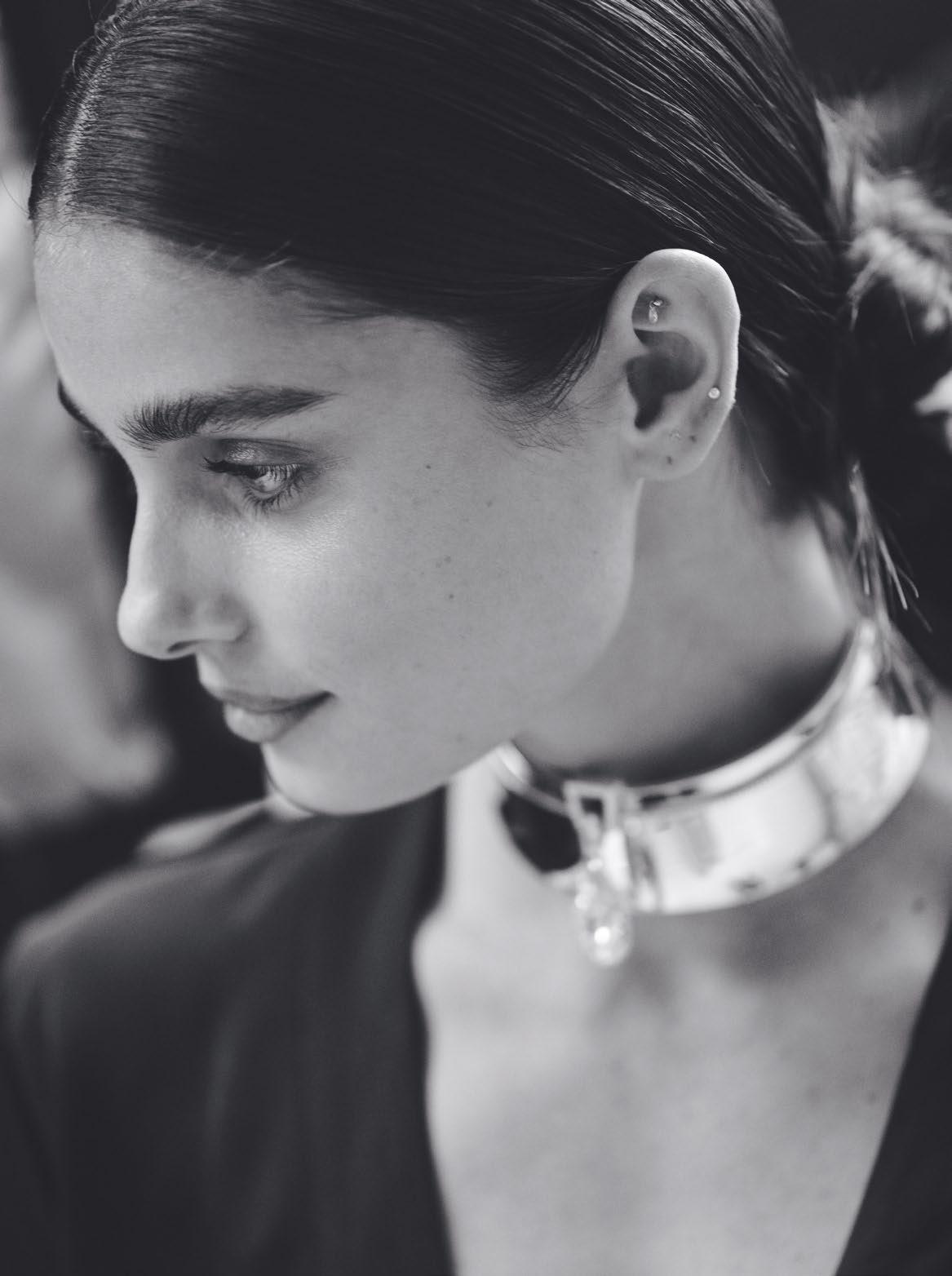

“Diamonds are my roots and my background, when I decided to launch my own jewelry brand I thought to diamonds with an everyday wearability and not only for the most important moments of a couple. I wanted something fresh, audacious and easy to wear”.

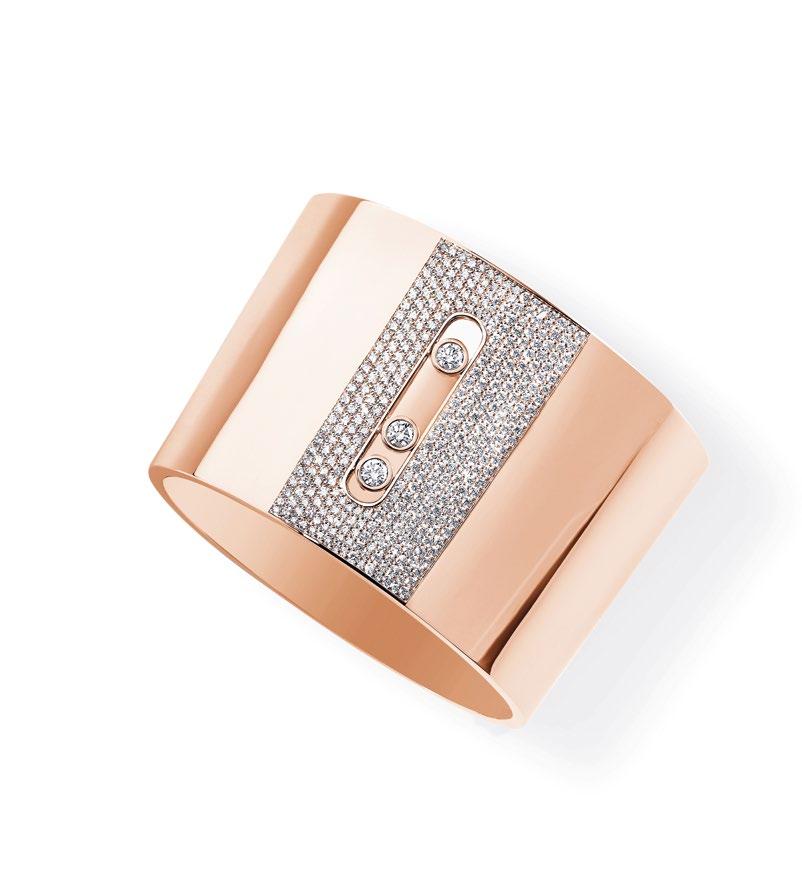

Since the launch of her eponymous jewelry brand, Valérie Messika - founder and artistic director - has stayed true to this initial statement and her motto “breaking the codes of traditional design in order to freely create”, based on her contemporary and avant-garde style, is carried out thanks to the ability to design and manufacture diamond jewelry. Her promise is: “keep up with diamond as a unique stone“, a wager she nurtures in every new launch she brings to market.
Valérie Messika, daughter of the diamond dealer André Messika, started her brand in 2005 and since the beginning, her wish was to give codes of freedom to diamond jewelry, breaking the conventionality of traditional designs such as rivière or solitaire, hence innovating with brio, technical skills and modernity without compromising the manufacturing quality and excellence. Her first collection “Move” is characterized by three moving round diamonds set on gold, available in three different colors, yellow, rose or white. Since its launch, this collection has
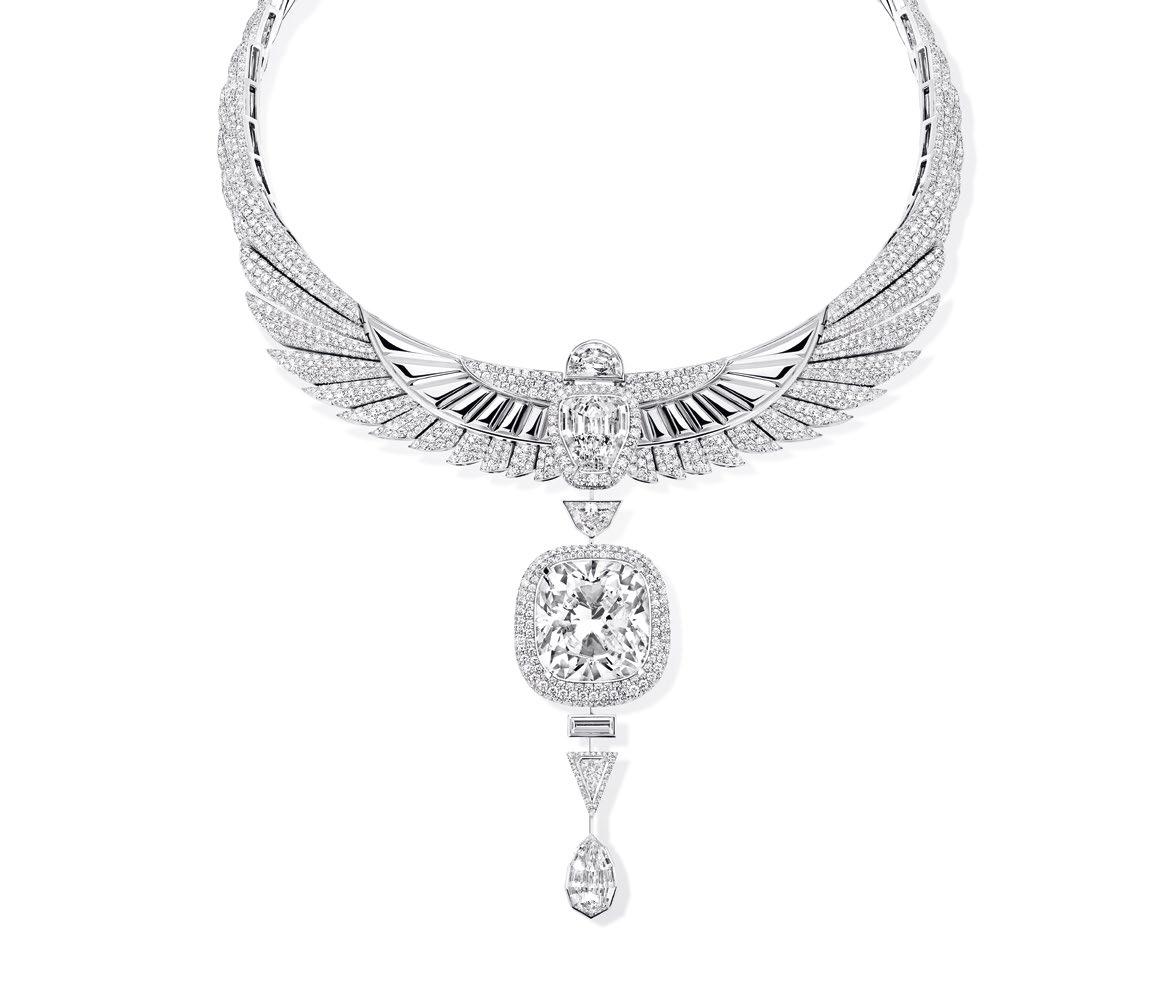
become a best seller for its modernity as well as sophisticated and exceptional technique. In 2016 Valérie launches also Move titanium for men, available in natural titanium, burnished or black.
The Move lines have become nowadays so iconic that one piece is sold every twenty minutes. Our first question to Valérie relates to the Move collection and further understanding of the overall inspiration. “I founded Messika in 2005 with this desire to desacralize the diamond and make it easier to wear on a daily basis. In my first iconic Move collection, the diamond is in perpetual motion as it sways with the movements in its gold cage. This collection was inspired by a childhood memory of mine: my father used to bring home incredible diamonds, he used to let the diamonds slip through his fingers. The motif of the three moving diamonds is deeply rooted in me and is very close to my heart. I like the fact that my designs are like ‘second skin’ jewelry, like tattoos. It is important to me to wear jewelry that is comfortable, that is paired with the
body and adapts to your movements. I create elegant and innovative diamond pieces for everyday wear like ear cuffs, double rings... The jewels I design appeal because they have a fine, high-end, precious and delicate side, associated with this casual aspect which desacralizes the diamond. There is a real contrast. This is what makes the difference at Messika: having brought modernity and breaking the codes in a traditional and ancestral profession - that explains the singularity of my brand.”
The Move collection is paired with the more audacious and rock and roll Glam’Azone with a very wide range of styles, from double rings in black diamonds and cuffs in pavé. Nowadays the total number of collections has reached 15, a strong assortment which endorses Valérie’s creative visions. Many international celebrities are today among her clients such as Beyoncé, Sienna Miller, Margot Robbie, Cara Delevingne, Kristen Stewart, Kate Winslet, Charlize Theron, Alicia Vikander and Kendall Jenner, just to name a few.
In 2022, Valérie Messika went a step further in
combining the deep black of onyx with rose gold, proving an unprecedented proposal. The designer underlines her desire to illustrate the subtle duality that cohabits within. She states: “While onyx is an intense stone, a symbol of strength and self-confidence, rose gold is soft, seductive, and romantic. I designed these new jewels, thinking of today’s women, who are no longer afraid to assert themselves on a daily basis, while at the same time maintaining their femininity”. During our interview, we had the chance to further get to know her universe and the way she started and plans ahead on her next steps and challenges. “I place my passion at the center of all my creations. Instinctively, each diamond inspires me to wear it or to draw it, the emotion comes from the setting that I imagine when I see the stone. The shapes, patterns and techniques prevail, they are chosen only to highlight the uniqueness of the diamond, its quality, its cut, its purity and its nuances. I like all diamond cuts, I wouldn’t say I prefer one over another. I follow my instincts and I

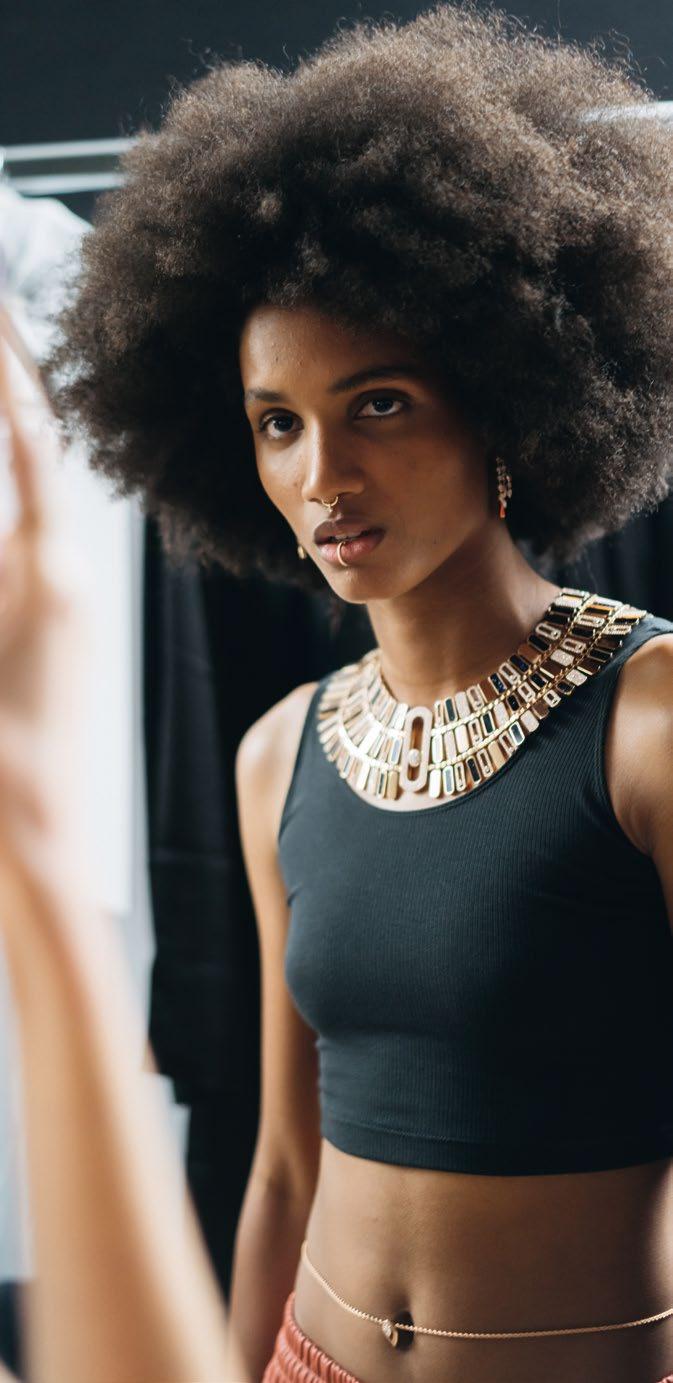
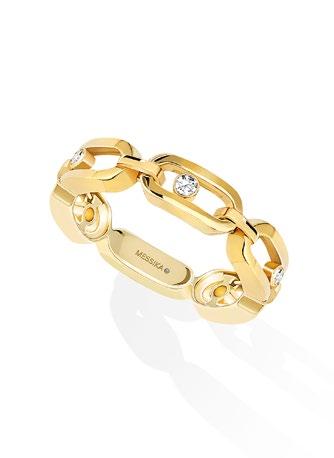
am always inspired by the shape of the stone. Everything starts from the rough diamond in which I will imagine the piece, never the other way around”.
In 2012, Messika decided to move a further step ahead and launched for the first time her High Jewelry collection, produced in her Parisian atelier. This additional creation led her to the opening of a 180 square meter rooftop where she nowadays manages the full manufacturing expertise for high jewelry collections. Under Valérie’s precise and accurate supervision the whole team works in unison to create every year 40 to 50 one of a kind pieces of High Jewelry. Very recently, she opened a new store in Dubai to also celebrate her ten years in the region and for the opening event the famous tower Burj Khalifa was illuminated by the brand name as well as some iconic jewelry images.

In less than 10 years, Messika - with a team of 115 people and a production of more than 6000 jewelry pieces a year - has become one of the most innovative and modern brands of diamond jewelry in the world. Furthermore, she is the only woman in France to run an independent jewelry Maison, a real pioneer in this industry who dared to create a disruptive way to conceive diamond jewelry. Her fashion shows are also disruptive, the latest one, which took place in the heart of Paris, in an industrial location, was extremely innovative, with a mystical reference to ancient Egypt, with jewelry for the mouth, ethereal

pieces which move with the body gestures as well as eye catching colors and transformable pieces. In the front row most of Messika’s dear friends - Naomi Campbell, Gigi Hadid, Emily Ratajkowski, Nina Dobrev, Carla Bruni, Elsa Hosk, Anna Dello Russo, Taylor Hill, Jasmine Tookes, Enjy Kiwan, Maya Diabe and many of them also got on the catwalk. A fashion show which combined in a very unexpected way Adidas street wear with high jewelry pieces once again as a testimony that our queen of disruptive diamonds wishes to break the codes while continuing to surprise us with her creations and performances.
“The idea of having my models wearing Adidas clothes was obviously not to encourage women to wear high jewelry at the gym, but to show that jewelry can be ‘cool’, to be worn as a fashion accessory to enhance an outfit, to be in connection with the spirit of the time. This second show was for me a new way to break the codes and change the idea that people have of High Jewelry. I’m always looking to make things different by breaking the codes. I have always loved to approach the jewelry universe in unexpected ways and I think I succeeded in this challenge and surprised everyone by combining my high jewelry collection with Adidas clothes”.
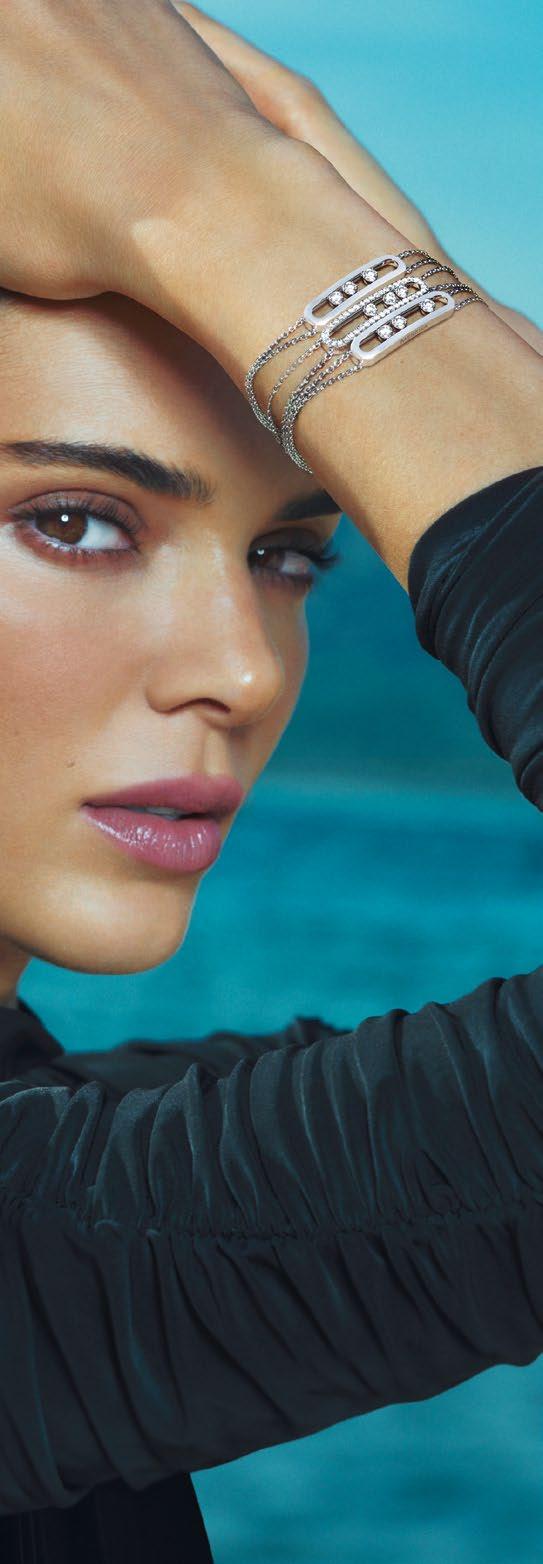





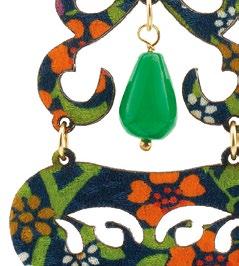
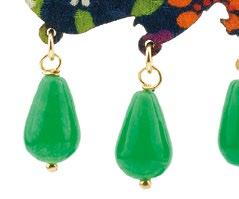
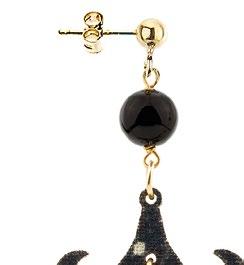
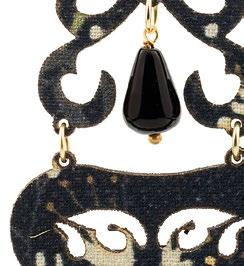
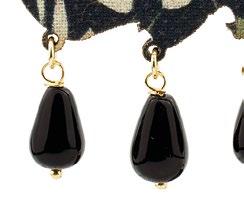


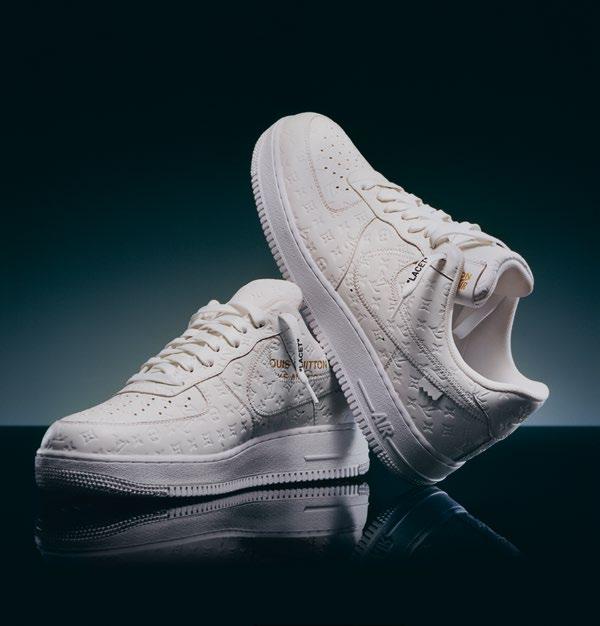
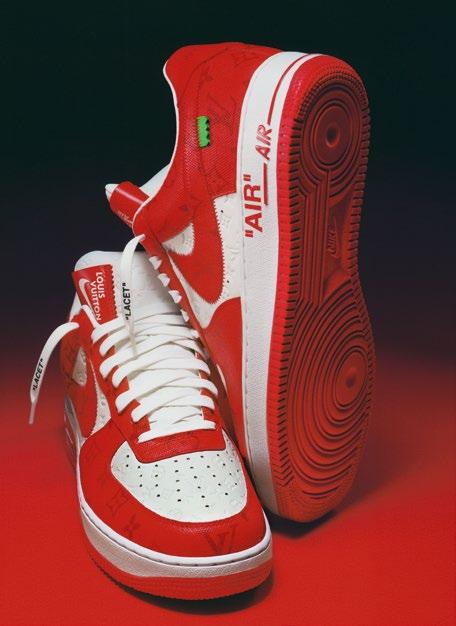
They are original specimens with a pedigree, and, most of the time, they hide unique and untold stories between the seams and under the linings.Virgil Abloh for Louis Vuitton Virgil Abloh for Louis Vuitton
Kept inside safety vaults and armoured cabinets, managed by highly sophisticated devices for controlling temperature and humidity, they are not unique and unrepeatable works of art from the past but historical creations by the most famous couturiers. They are the sacred heritage of the most celebrated fashion houses. Still, their soul is not meant to stay locked in an ivory tower. Jean Baudrillard argued that «what goes out of fashion enters costume. What disappears in costume resurrects in fashion», and this is precisely the point. We live in the era of costume renaissance as a trending phenomenon. Proof of this is the success of Vault, Gucci’s online space to buy refurbished and personalised archival items. Bags and accessories aspire to return to life
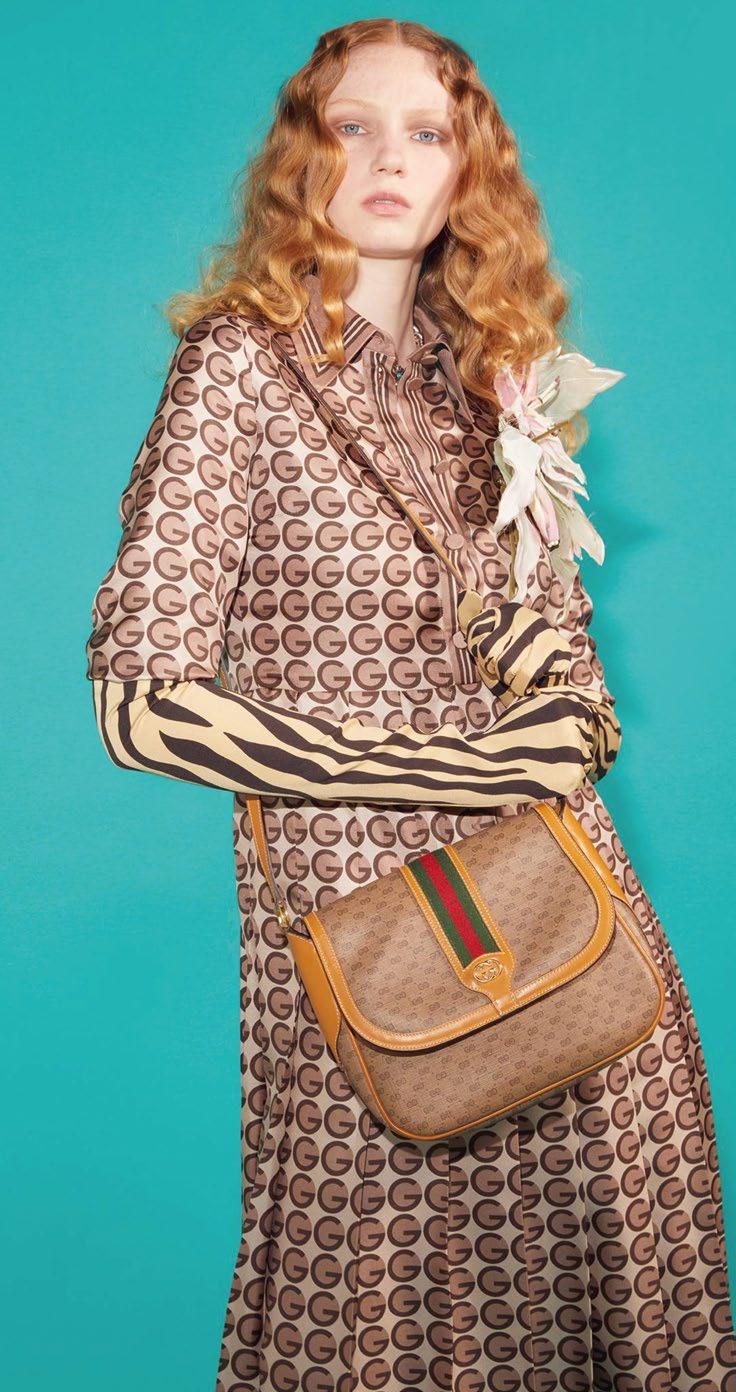

attracted by a new audience eager to collect them but, even more, to wear them. They have now gained significant importance in luxury goods auctions, too. Hermès and Chanel, Fendi, Chloé and Dior, but also Nike pieces in vintage or Ltd versions, are now highly sought-after. Especially if there is a story behind the object. Increasingly often, these purchases are made by a young, Millennial and, above all, Asian audience. And auction houses are selling lots for staggering sums. In 2017, Christie’s in Hong Kong offered a Himalaya Birkin 30 with an estimated retail value of € 194,000 and sold it for € 383,000, beating the world record for a bag sold at auction. The 2010 crocodile Tote bag that Karl Lagerfeld always carried with him was less expensive than that; not a particularly iconic model, but of great emotional value, it sold for 94,500 euros. The designer would have been happy, not so much for the dizzying amount assigned to his
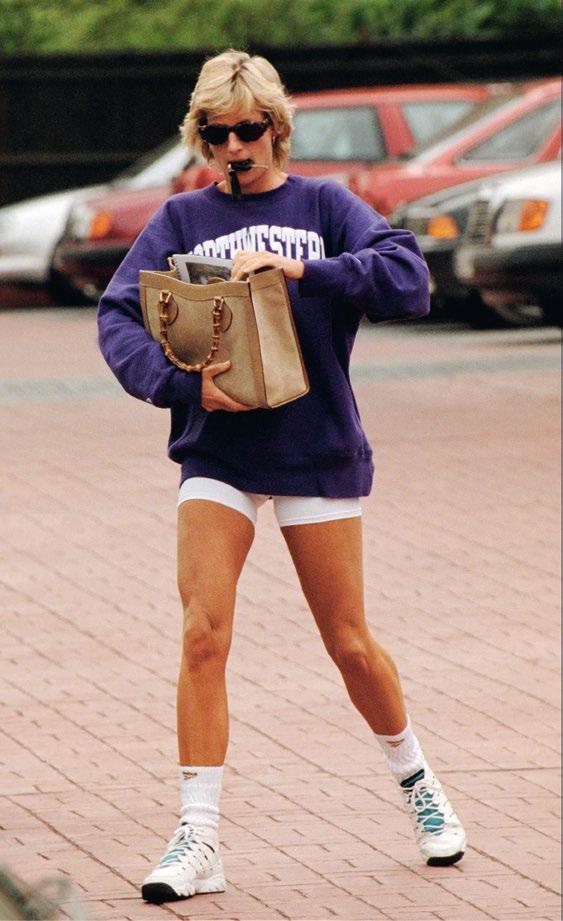
object, but because his bag has found life in other hands. He believed people should not become slaves to objects but use them instead. Reusing today becomes more virtuous than ever, imbued with sustainability but also with romanticism because of the stories told by everyday accessories. And there is more to it. The time factor of consumption in this macrotrend, the result of globalisation, is redefined. The distance is shortened between the intention of the creator, who aspires to make beautiful, durable and authentic objects, and the consumer’s to use his wardrobe for a short time.


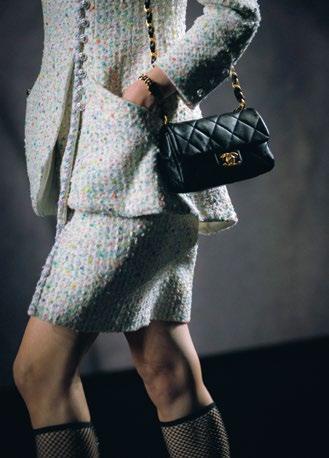
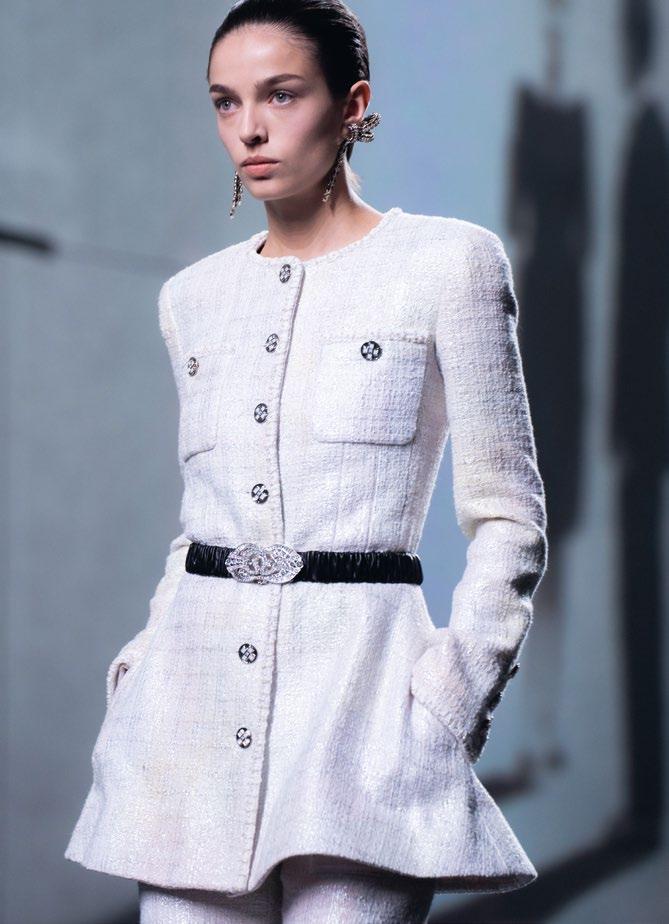
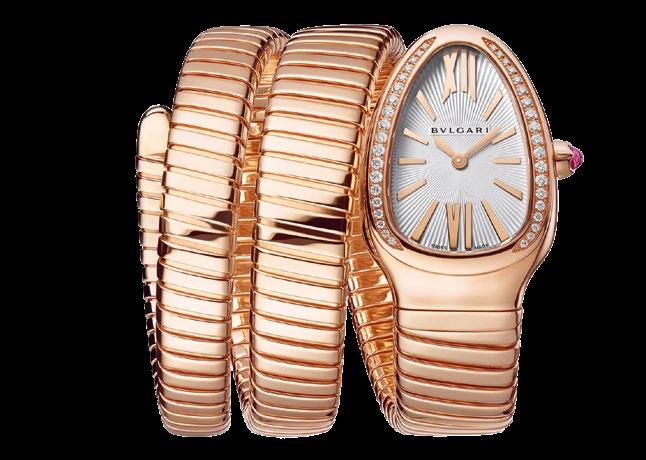 Bulgari
Chanel
Bulgari
Chanel

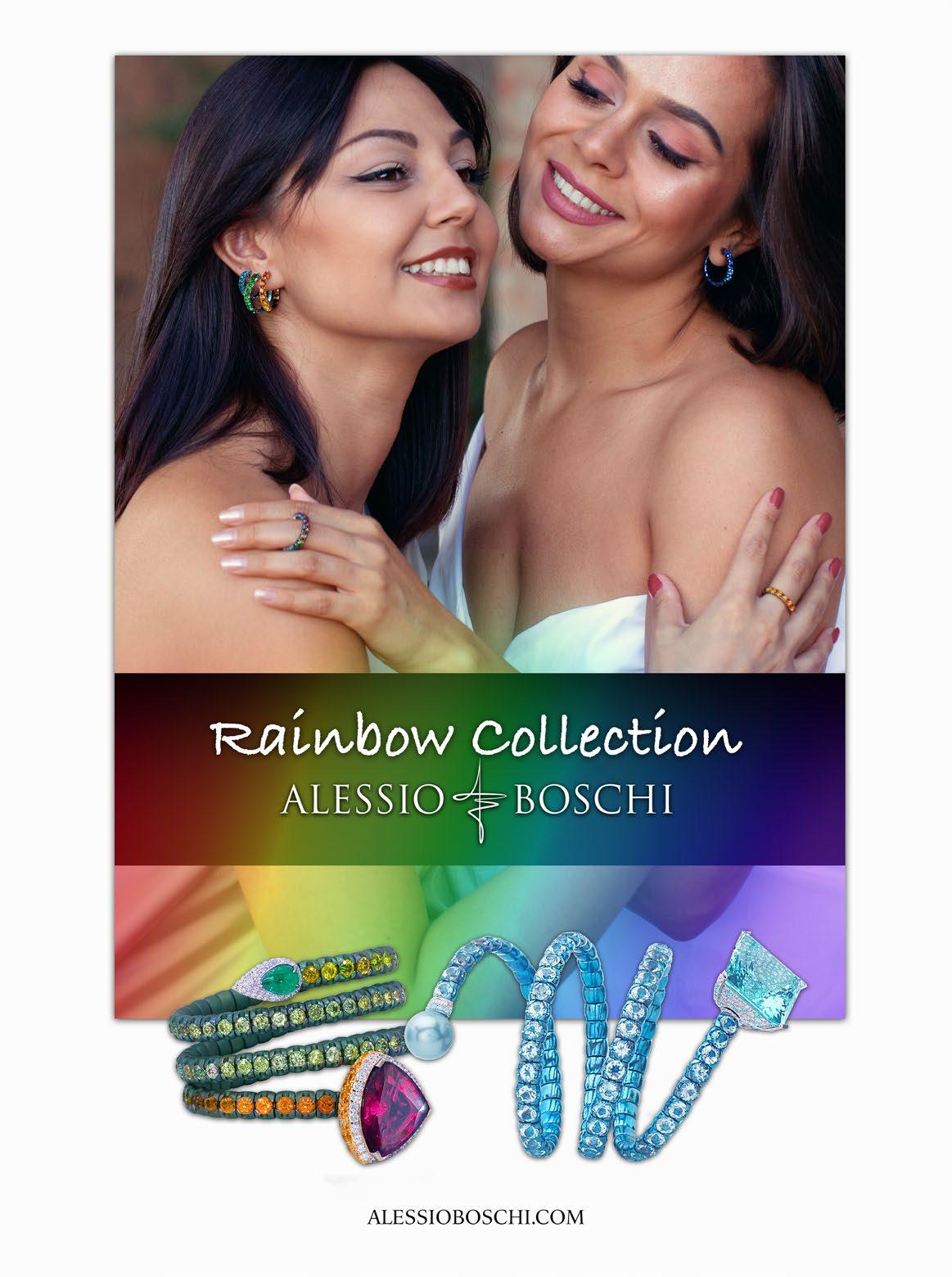
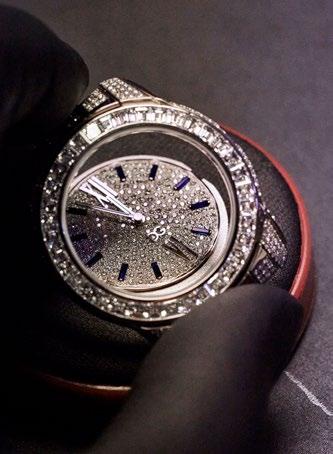 by Donatella Zappieri
by Donatella Zappieri
Dolce&Gabbana Alta Gioielleria masterpieces were presented a few weeks ago in the wonderful setting of Legnano atelier, where most of the Italian house jewelry collections are manufactured, on the occasion of ApritiModa 2022. A universe of creativity, a celebration of beauty, art and craftsmanship leading to the invention of new forms, hence preserving Italy’s renowned tradition of fine jewelry making. A High Jewelry collection where goldsmiths, engravers, sculptors, setters and chiselers skills are magnificently put together as if every creation concealed within itself a precious secret which only those fortunate enough to possess it will have the privilege of cherishing and passing down to their loved ones. Uniqueness is the guiding thread of Dolce&Gabbana Alta Gioielleria masterpieces, unique as the dream
that each of these extraordinary creations inspires, perpetuating the supreme refinement of a unique work of art and this thanks to the fact that each precious piece is born of a vision, a dream brought to life by the rarest gems, the most splendid diamonds and the fine workmanship that shapes them into their finished form. The latest collection is named Siracusa as an homage to Sicily, the country of origin of Domenico Dolce, one of the two designers. This region, with its ancient history full of art and traditions, still is one of the designers’ most important source of inspiration and many of their creations are reminiscent of some iconic shapes and colors as well as its past history. Ancient coins are then integrated into necklace and earrings designs as well as meticulous nature inspired motifs become the refined setting for rare gem stones. The delicate selection of rare gems as well as a special detailed attention to color combination and palettes enhances the refinement of this latest collection which once again surprised us for its avant-garde flair hence extremely rooted into the high jewelry savoir faire codes.
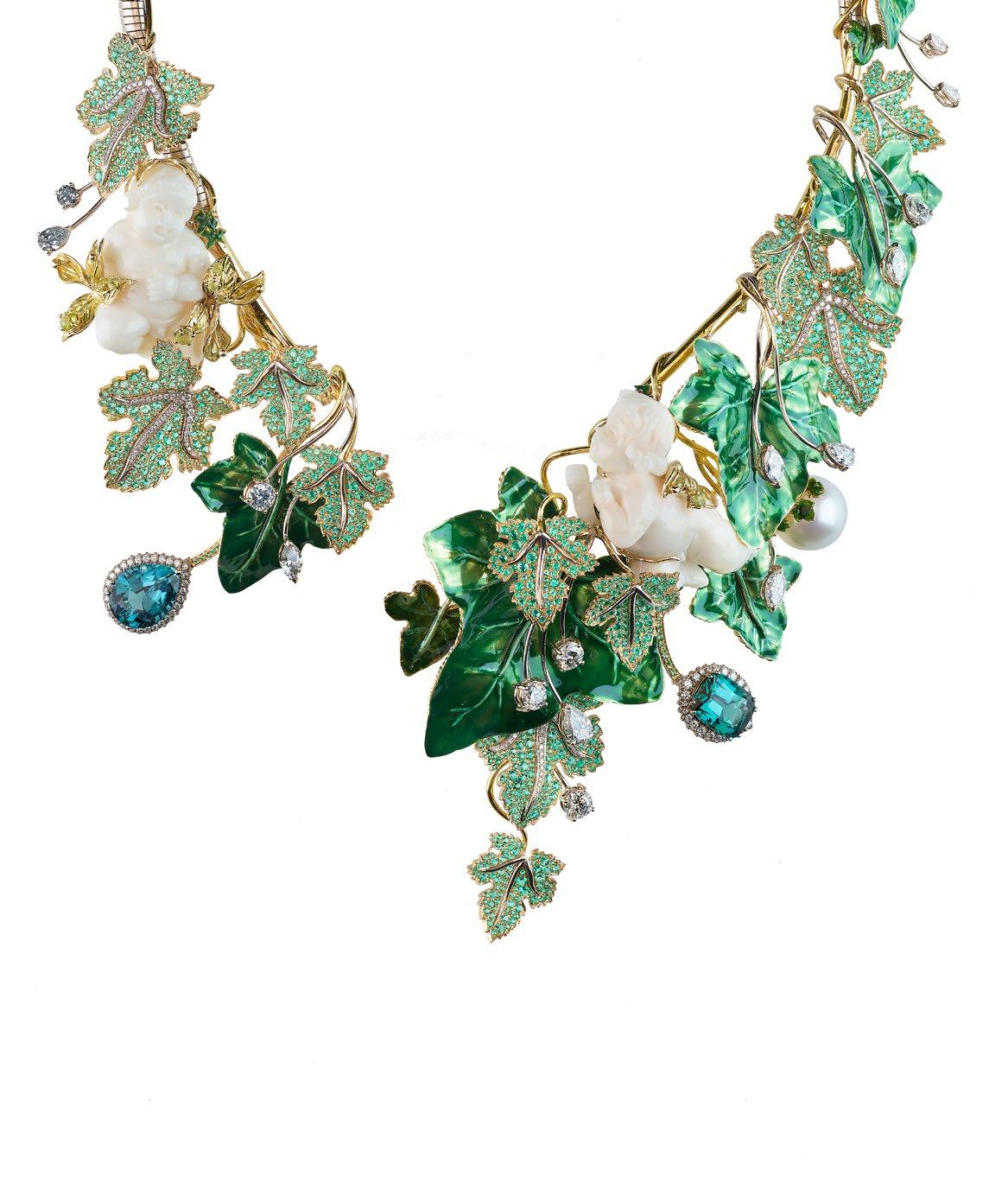


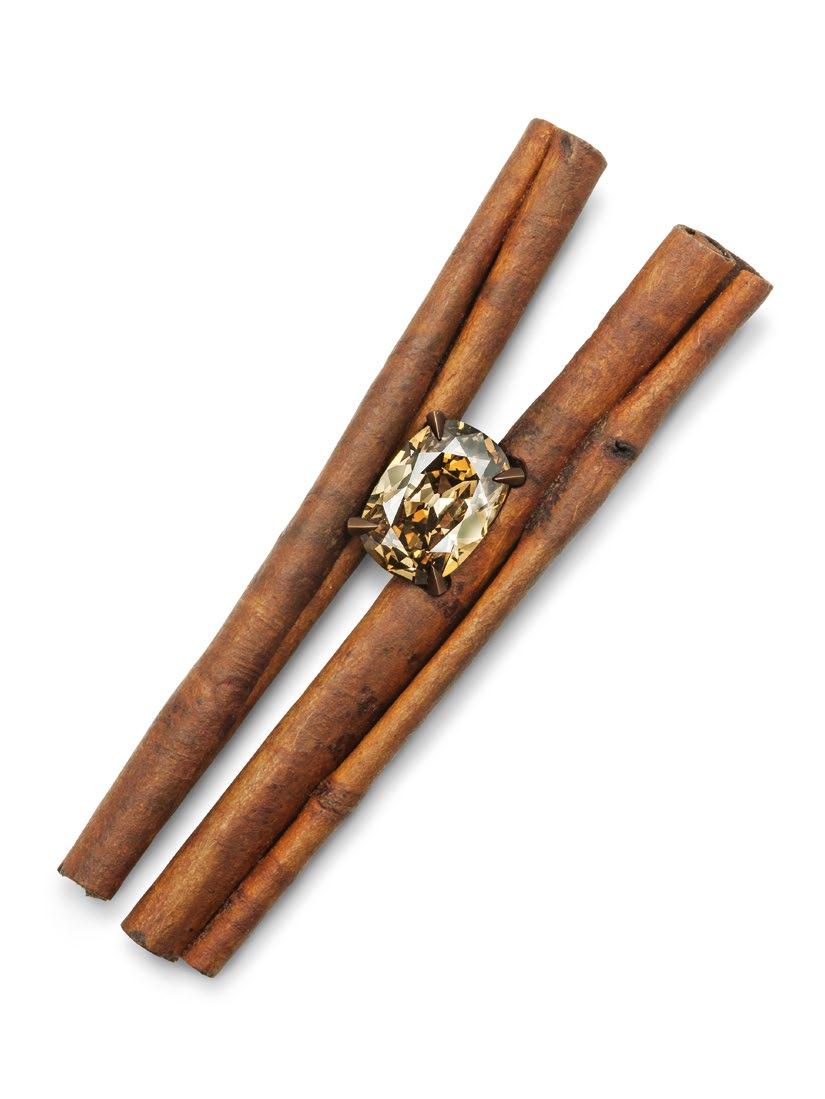
The new collection of high jewellery from the
For connoisseurs and lovers of jewellery, the German jewellery brand Hemmerle is a real institution: every single piece is unique and recognisable, with its own undisputed personality, and is conceived and made entirely by hand as a work of art, often the result of hundreds of hours of work. Curiosity and freedom from established preconceptions, superstructures and methods allow the Hemmerle family - today in the fourth generation with Christian Hemmerle and his Egyptian wife, Yasmin, flanked by his parents Sylveli and Stefan - to move at ease, creatively speaking, in time and space, inspired every time by ancient civilizations as well as contemporary art, their heritage (the company was founded in 1893 as a producer of orders and medals, among other things also for the Royal House of Bavaria), modern architecture or ancient goldsmith techniques. Since the 1970s, “humble” and unorthodox materials such as steel or aluminium have been boldly paired with precious stones or decorative elements of immense value, creating projects that are both innovative and that interpret the most refined goldsmith tradition. The project of the new collection, Infused Jewels, was conceived four years ago. It is based around the idea of creating a bespoke herbal tea blend that would

draw attention to the healing power of herbs, a subject dear to Germany - where homeopathy was not born by chance - and in particular to Munich, which, from the beginning, has been an important growth centre for this discipline (in actual fact, a few years ago Bavaria pioneered a homeopathy department within its Ministry of Health). The pandemic helped to focus on the project: “Covid - explains Christian Hemmerle - forced us to focus on a renewed, more conscious sense of community and to reflect on the concept of well-being itself, collective and individual, as well as on the need to savour every moment of our lives”.
The pillar of the project is tea, which in every age and in every part of the world has always been the preeminent figure of a ritual that refers to the concepts of hospitality, togetherness, and precisely a strong link with nature and its herbs with their healing and relaxing powers. “The tea blend being the central axis of the project, we started by studying a plethora of botanical books and visiting botanical gardens, creating a culture of herbs and flavours - recalls Yasmin Hemmerle - Fundamental in this phase was the collaboration with Romana Auth of Kräutergarten München, the first ecologically certified herb house in Munich”. Once the 13 ingredients were selected - including cinnamon,
rose petals, lavender, orange blossom - each of them was transformed into a jewel that is its perfect reproduction, and each piece in turn is the result of a unique blend of unconventional materials, in perfect Hemmerle style: diamonds, precious and coloured stones, gold, anodised aluminium, bronze, porcelain, silver... The collection was deliberately restricted to 10 pairs of earrings and three brooches, as Yasmin explains: “The specific designs came together as natural outcomes surrounding the research of the real-life scale and physicality of each plant and herb. Our aim was not to honour and reflect the naturalistic perspective of each and hence we didn’t want to use creative interpretation in forming those into larger creations such as a necklace or a bracelet and instead using our creativity to innovate within each jewel into bringing together the materials to life in a sort of Trompe-l’œil style but with metals and precious stones”. Each piece of jewellery is a piece of skill and has required talent, imagination and exceptional craftsmanship: but among them there is one that has more than others, putting the legendary audacity of the brand to the test
- the Cinnamon Brooch, as Christian Hemmerle recounts: “The initial idea was to recreate a bronze cinnamon stick but during the designing the project was completely changed because the natural beauty of real cinnamon bark prevailed, which became the star of the brooch, combined with minimal use of bronze and white gold and a beautiful Fancy Deep Brown-Yellow diamond. It took months of testing with real cinnamon before arriving at a result that guaranteed aesthetic perfection, natural simplicity and stability!” The brooch therefore exudes the beneficial smell of the spice: just like the Lavender earrings - in aluminium, bronze, white gold and tanzanite - which can be opened to be filled with fragrant lavender flowers. Another piece destined to form part of Hemmerle’s history is the Orange Blossom brooch: it is the first jewel in the brand’s hundred-plus years not made entirely in-house: its beautiful porcelain stamen topped with a pair of natural golden pearls were actually made by the renowned Bavarian manufacturer, Nymphenburg: the same House to which Hemmerle has commissioned bespoke porcelain tea-caddies,



each dedicated to one of the herbs that gave life to the project and to the jewels, with herbs rendered in relief and reproduced in every detail. “We then set upon the challenging task of deciding how we are to commemorate the project which after many stimulating ideas, led us on deciding to commission a modernday fairy tale that would be illustrated and published in a book. The pairing of enjoying tea whilst immersing oneself in the universe of a book soon became the right context with which we wanted to express the key messages of the Infused Jewels project” explains Yasmin. Thus was born the crowning element of the project, The Herb Garden, a modern-day fairy tale written by Greta Bellamacina and illustrated by Rosanna Tasker that makes readers of all ages reflect on the healing power of nature and the ability of the individual to improve their community, with a holistic and respectful approach to everything around us.
“It was very important for us - conclude Yasmin and Christian - to anchor the project with a meaningful context that was both close to our heart and true to our identity and which would also resonate with a wider audience. From East to West, spanning countless cultures, tea carries a ubiquitous, ritualistic significance, evoking a reflective moment for rejuvenation and sparking a spirit of conviviality and togetherness, all elements which are fundamental in the messages imbued into the project and the Hemmerle ethos”.

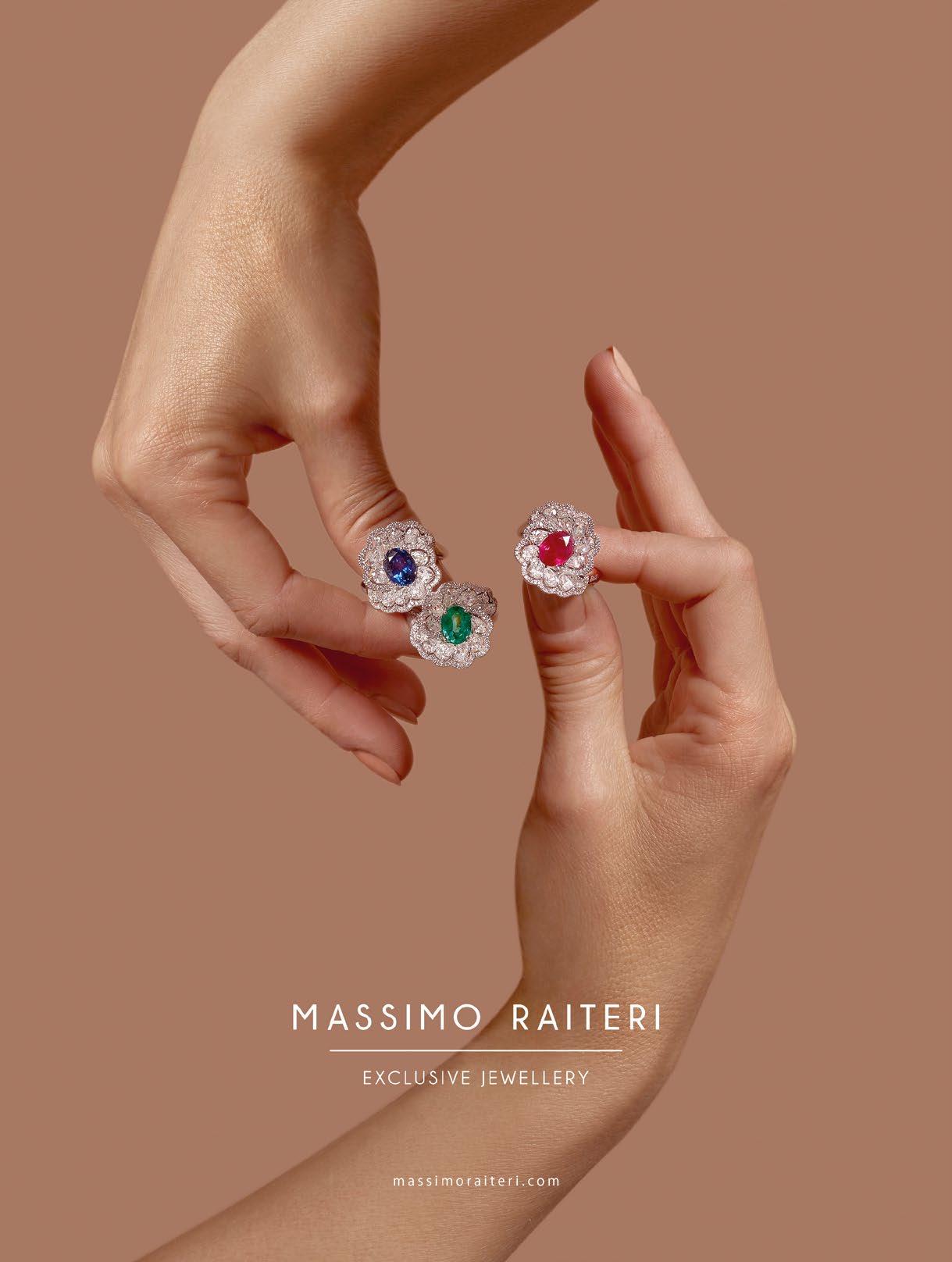
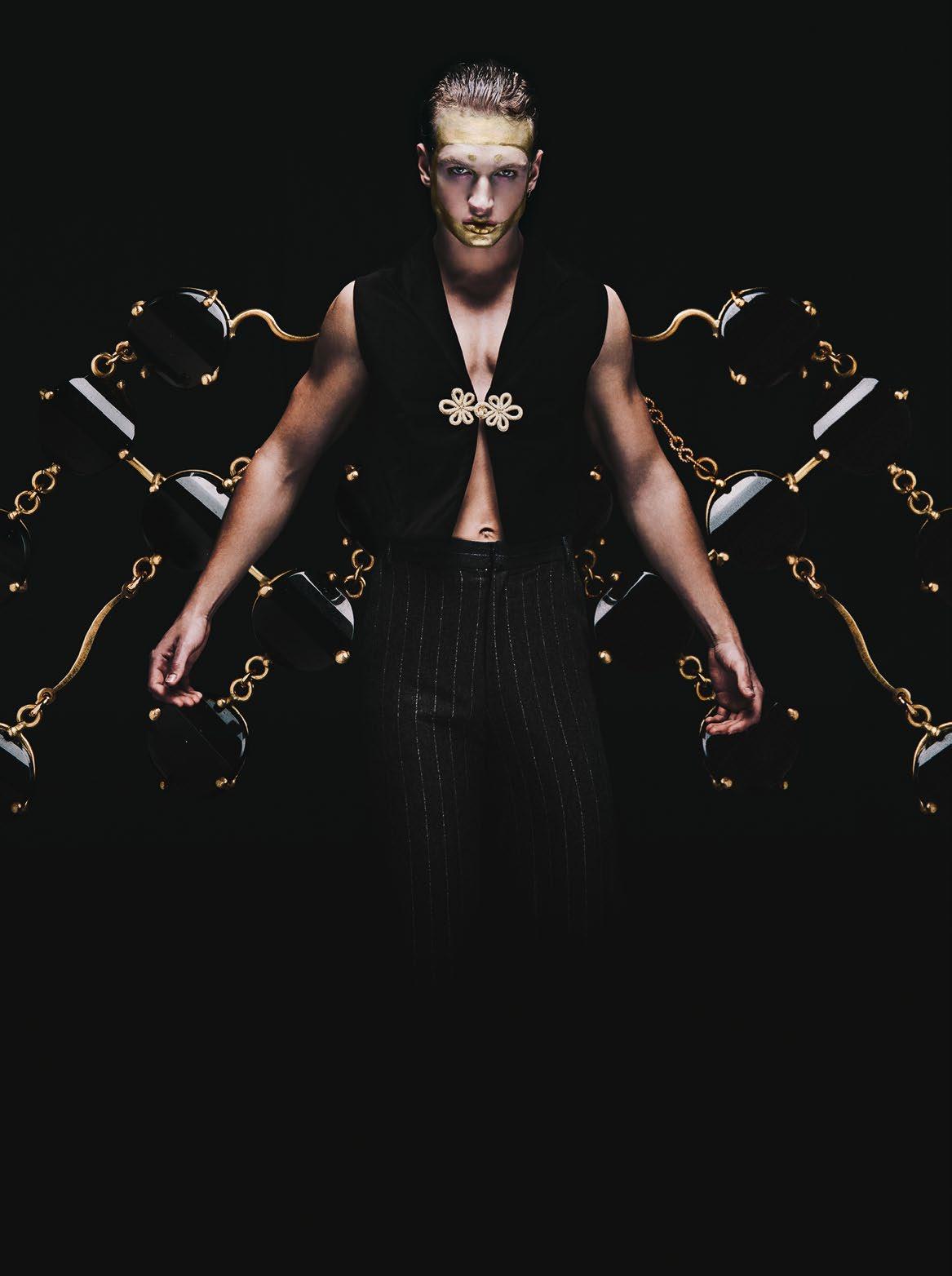 by Domenico Festa
by Domenico Festa

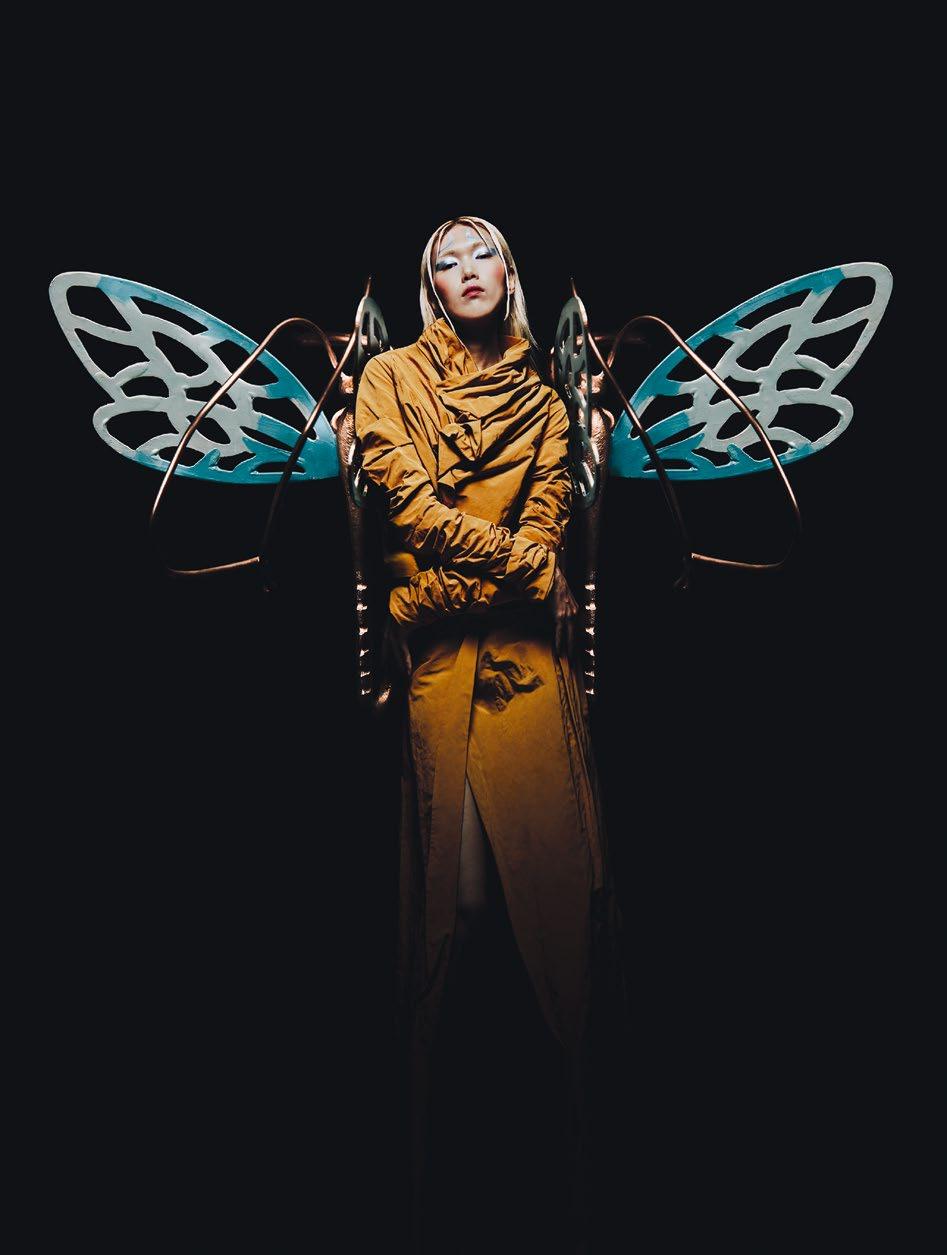 Opening page: earrings in yellow gold with black onyx from the Naomi collection. LUCEDEIMIEIOCCHI JEWELS. Vest: GIGLIO TIGRATO. Trousers: 9.8 INCH. This page: Falene bracelet in silver and enamel. FUTUROREMOTO. Total look: ROMEO GIGLI.
Opening page: earrings in yellow gold with black onyx from the Naomi collection. LUCEDEIMIEIOCCHI JEWELS. Vest: GIGLIO TIGRATO. Trousers: 9.8 INCH. This page: Falene bracelet in silver and enamel. FUTUROREMOTO. Total look: ROMEO GIGLI.
 Edera collection, yellow gold earrings with natural diamonds and natural shading off yellow and orange sapphires. ORO TREND. Leather trousers: 9.8 INCH.
Edera collection, yellow gold earrings with natural diamonds and natural shading off yellow and orange sapphires. ORO TREND. Leather trousers: 9.8 INCH.
 Ring in anodized titanium with diamonds and rubies. Titanium collection. GIOVANNI FERRARIS. Jumpsuit: GIANFRANCO MARRAUDINO.
Ring in anodized titanium with diamonds and rubies. Titanium collection. GIOVANNI FERRARIS. Jumpsuit: GIANFRANCO MARRAUDINO.
 Ring in anodized titanium with diamonds and green sapphires. Titanium collection. GIOVANNI FERRARIS.
Ring in anodized titanium with diamonds and green sapphires. Titanium collection. GIOVANNI FERRARIS.
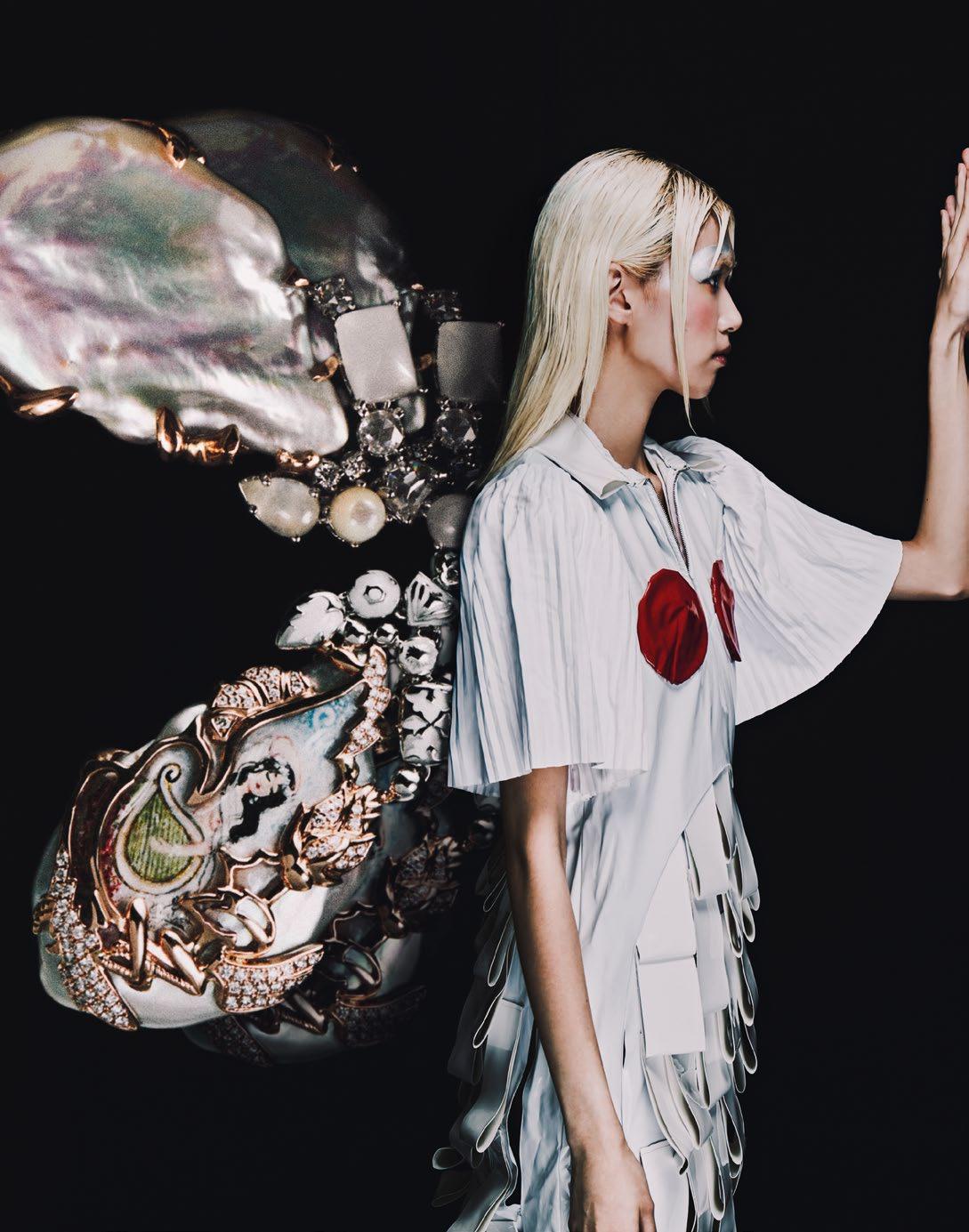
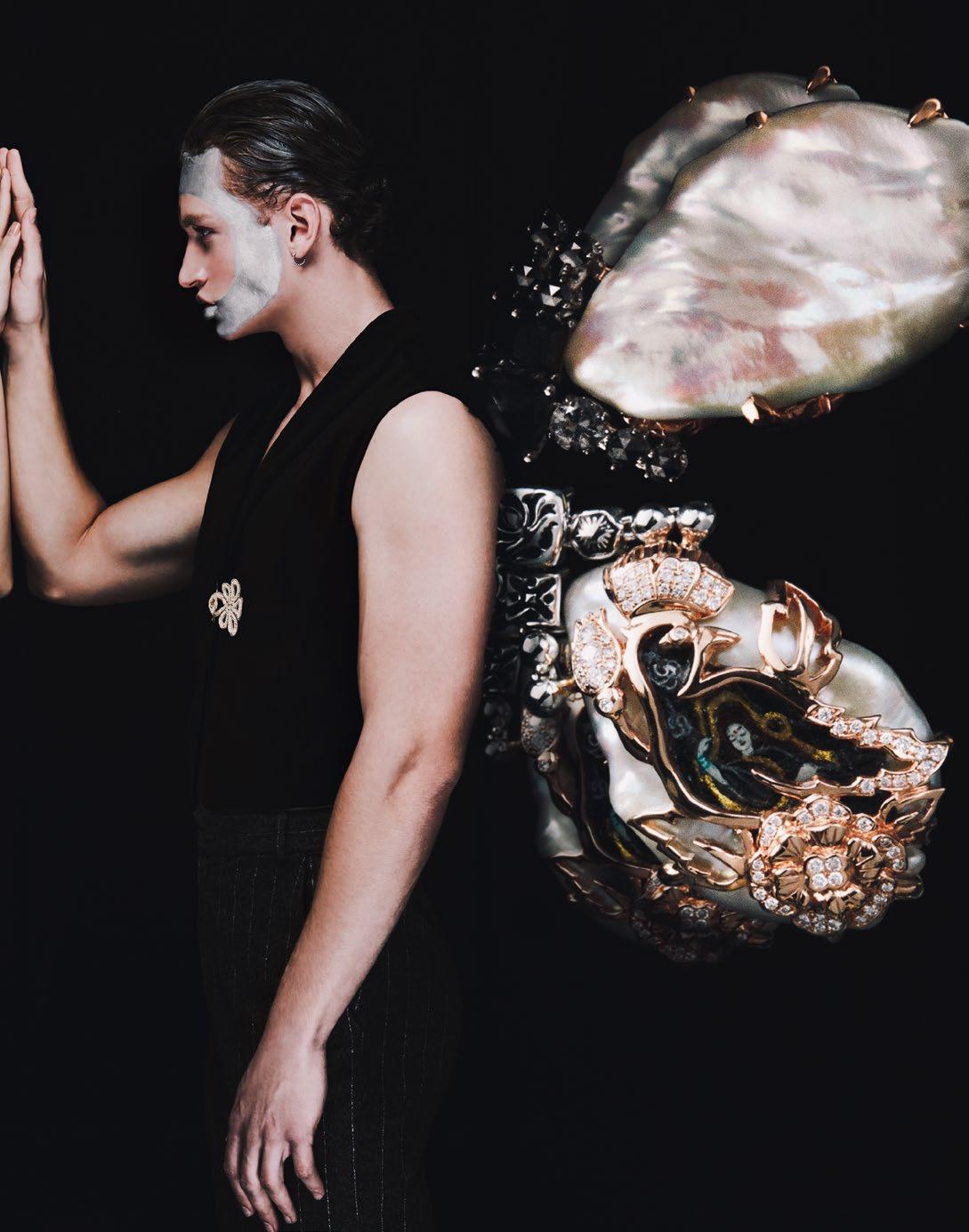 Earrings in white, rose and yellow gold with white and black diamonds, mixed stones, fresh water pearls. Harem Garden collection. ALESSIO BOSCHI.
Earrings in white, rose and yellow gold with white and black diamonds, mixed stones, fresh water pearls. Harem Garden collection. ALESSIO BOSCHI.
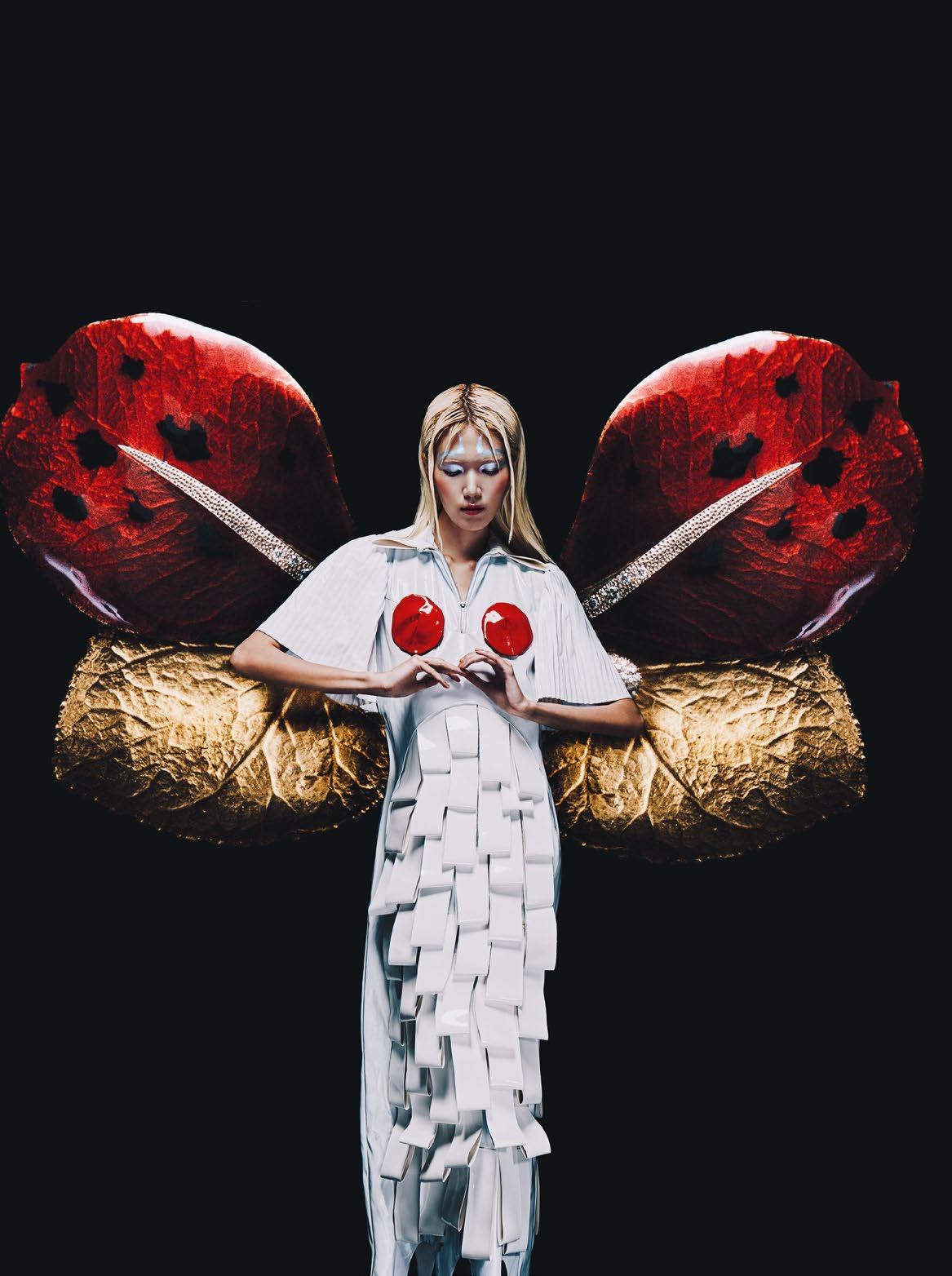 Foglia brooch: red enamel, yellow gold and round brilliant cut diamonds. Foglia brooch: yellow gold and round brilliant cut diamonds. Dress: ZHUOLIN HUANG.
Foglia brooch: red enamel, yellow gold and round brilliant cut diamonds. Foglia brooch: yellow gold and round brilliant cut diamonds. Dress: ZHUOLIN HUANG.
 Giardino long earrings, hammered and polished yellow gold and round brilliant cut diamonds. VENDORAFA LOMBARDI. Corset: LUXOR’S.
Giardino long earrings, hammered and polished yellow gold and round brilliant cut diamonds. VENDORAFA LOMBARDI. Corset: LUXOR’S.
Rays of Sun collection, white and rose gold earrings with white diamonds. PALMIERO. Dress:
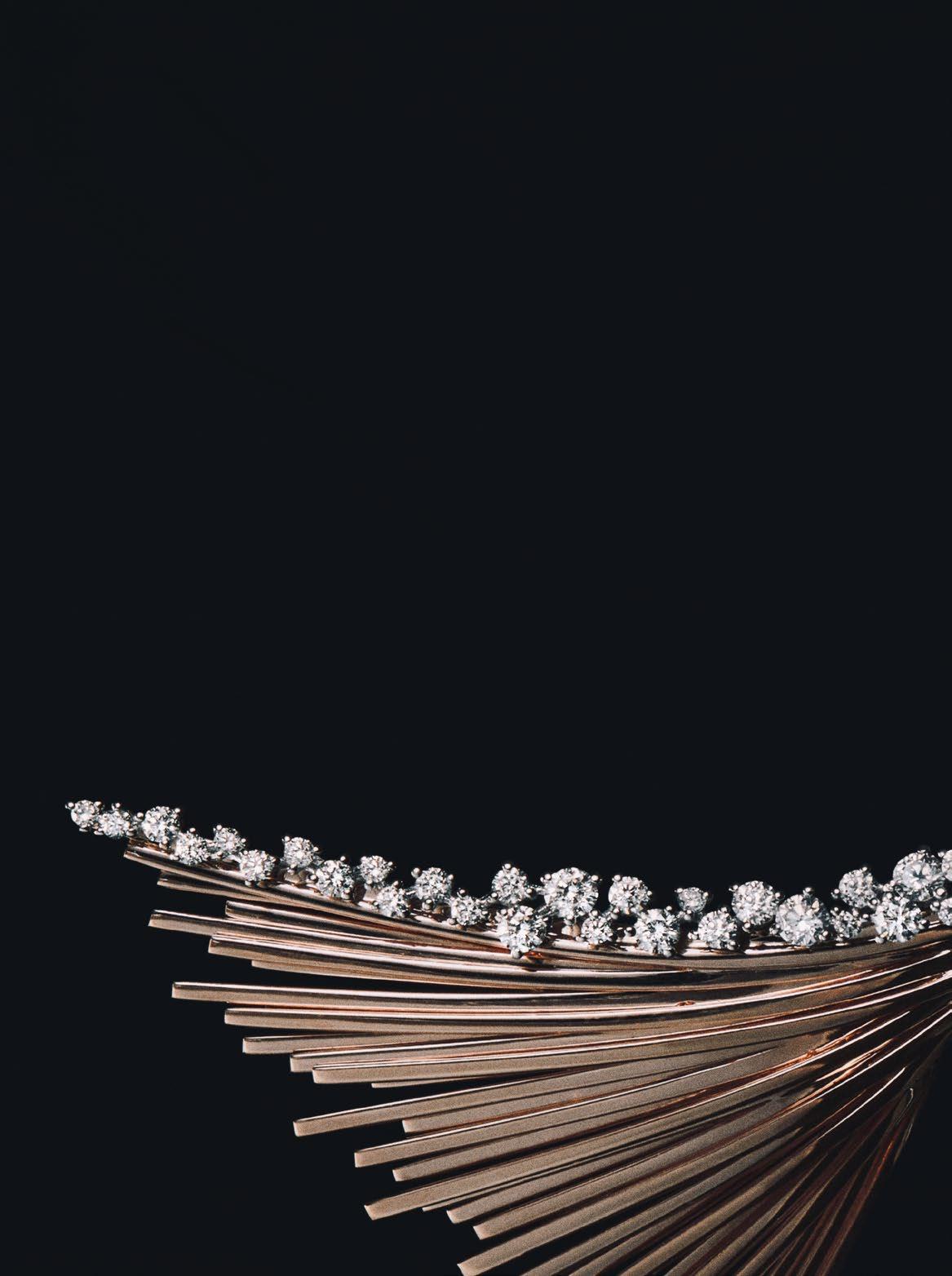 LUXOR’S.
LUXOR’S.
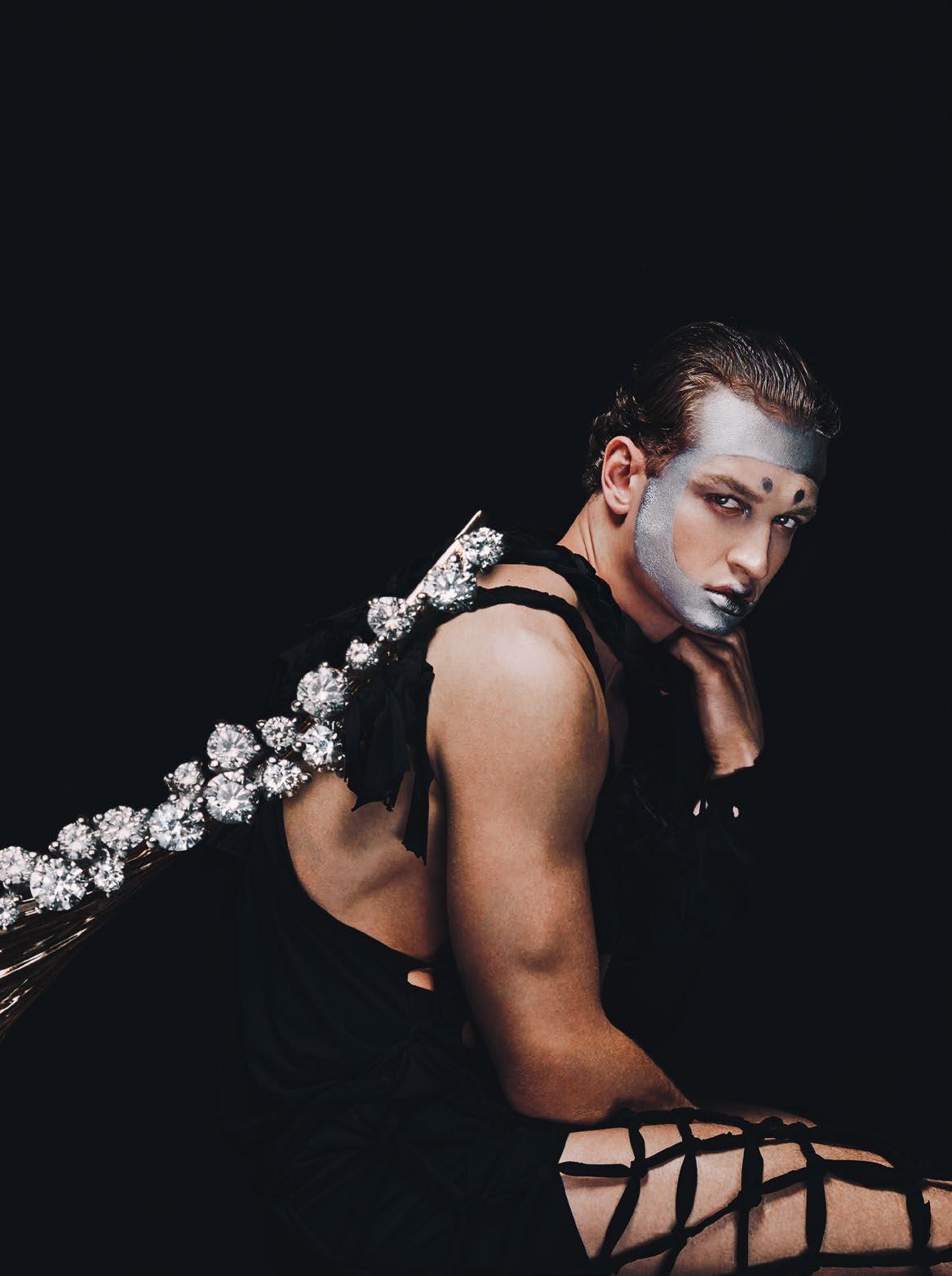
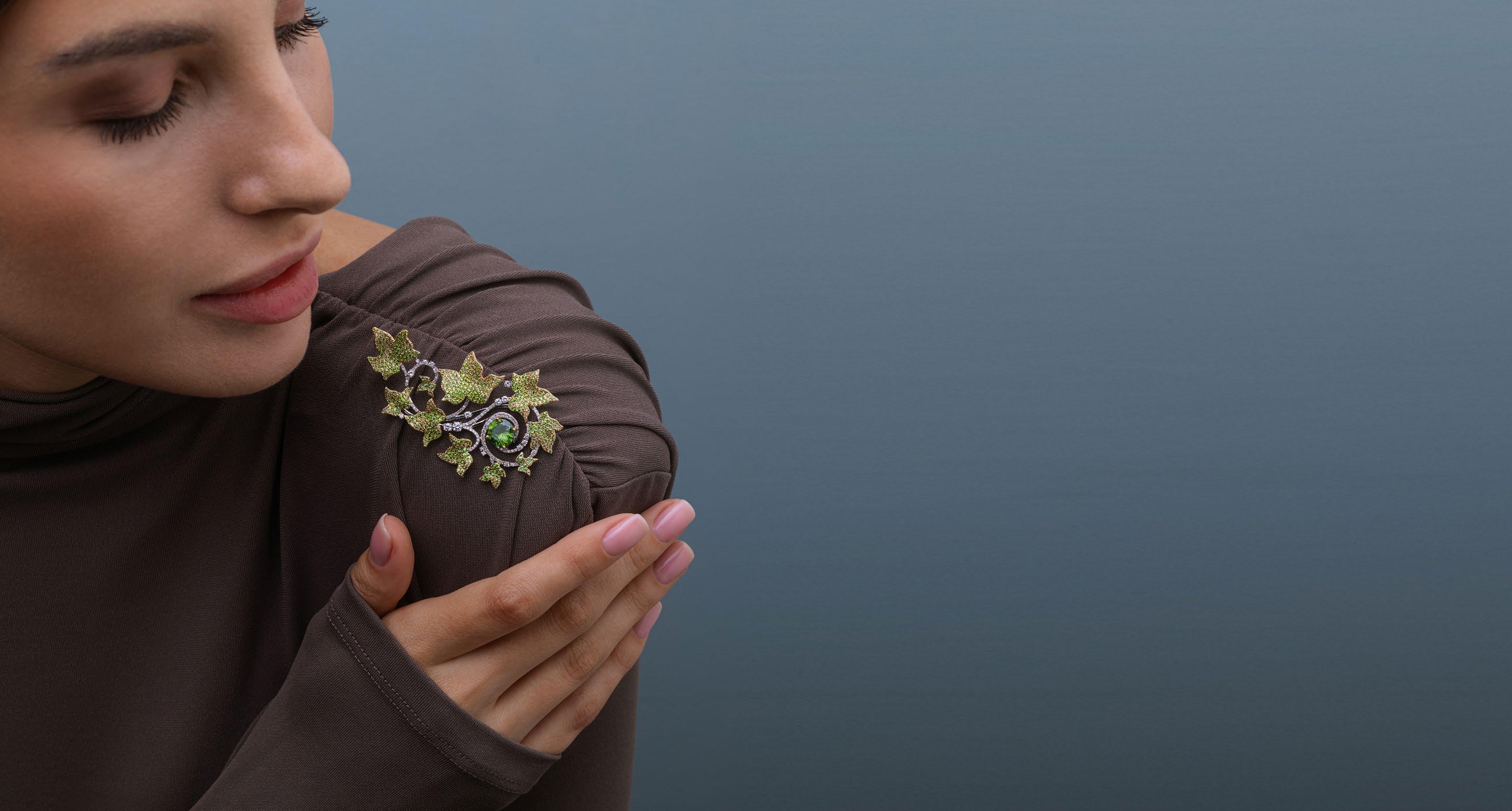 @Izmestiev Diamonds_Japanese Garden Brooch
@Izmestiev Diamonds_Japanese Garden Brooch

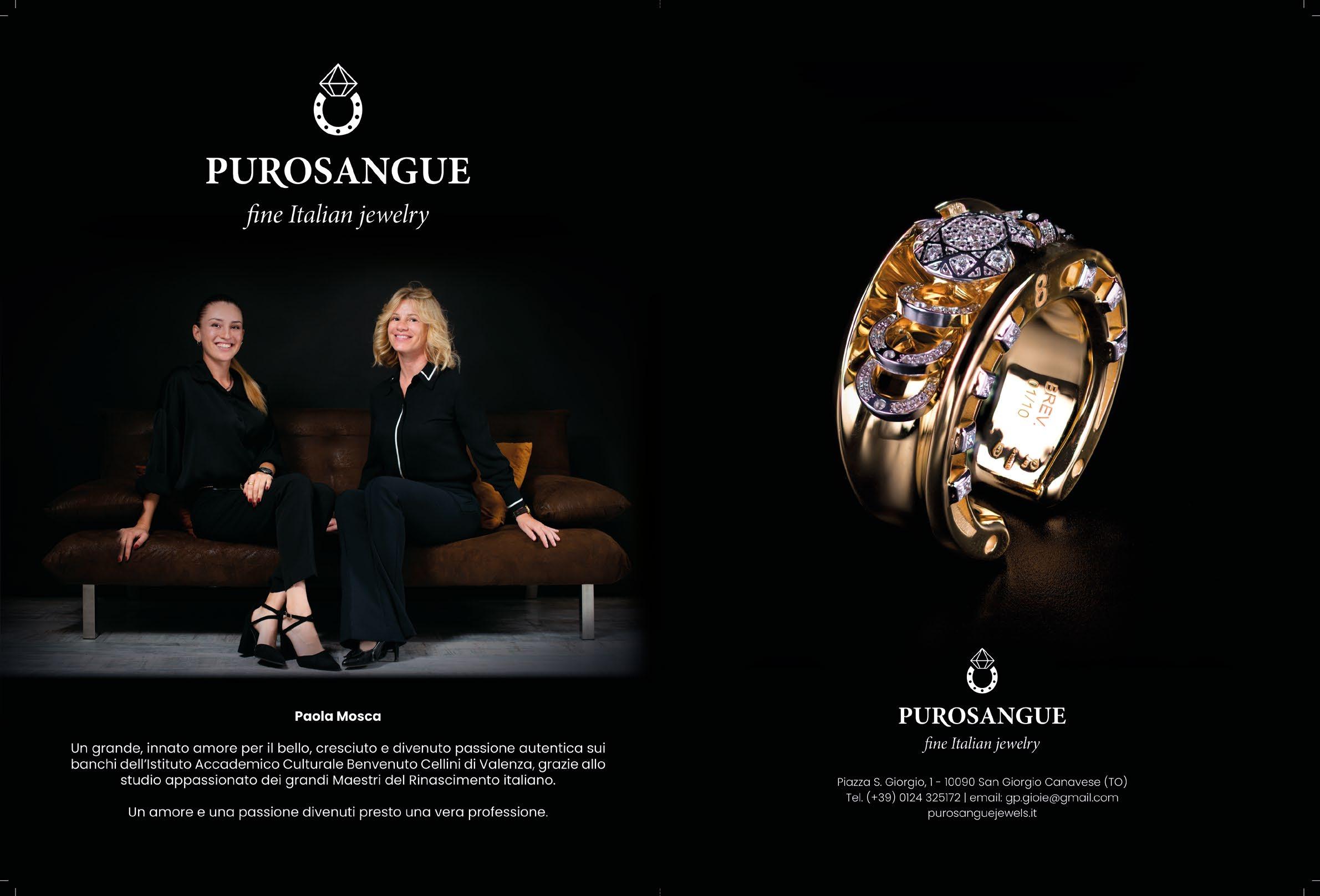

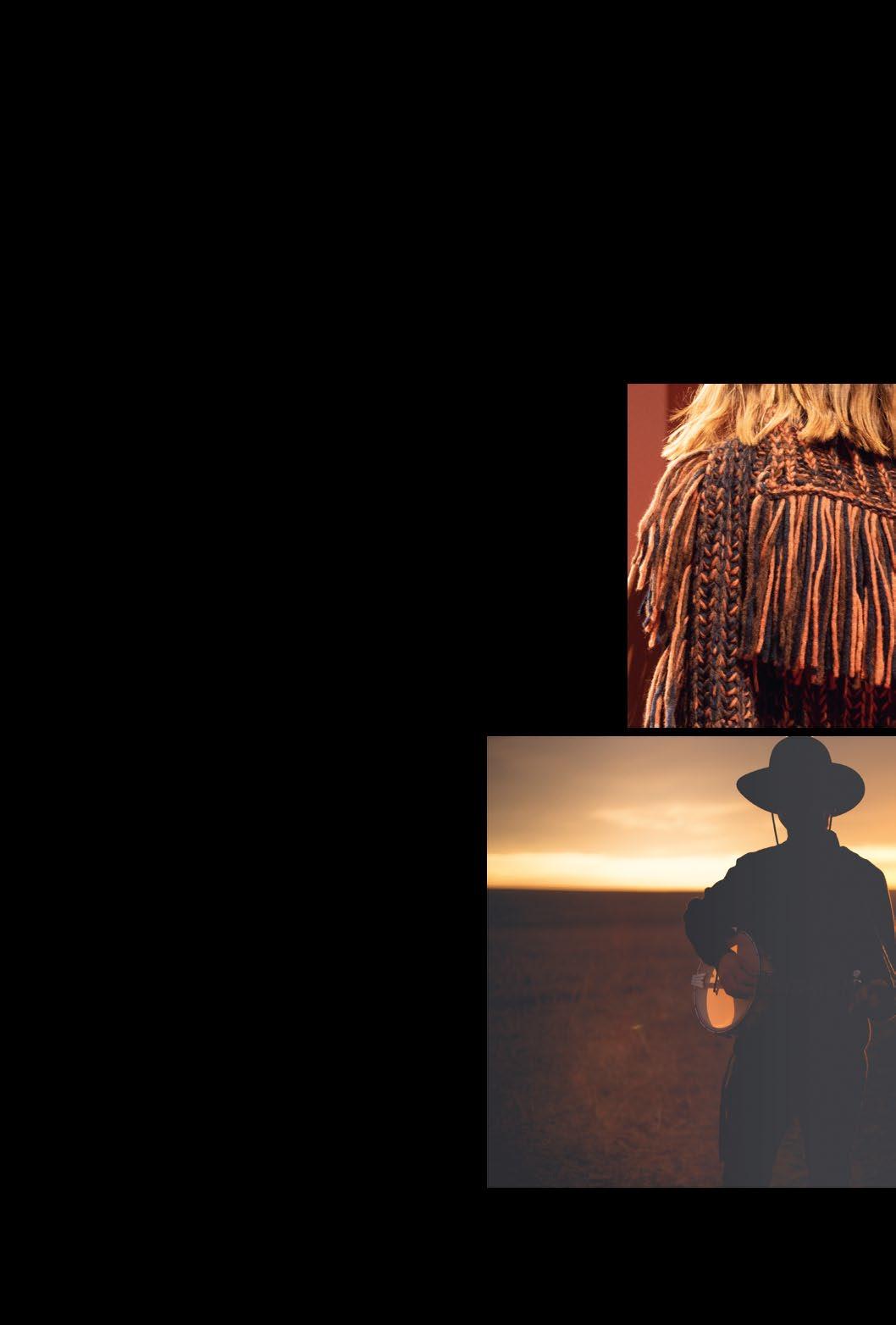
 by Samantha Primati
by Samantha Primati
A bit hippie and bohemian. Timeless charm that leads to journeys around the world breathing life into an enduring style that transcends fashion. Always striking the balance between past and future.
LUISA SPAGNOLI TOD’S
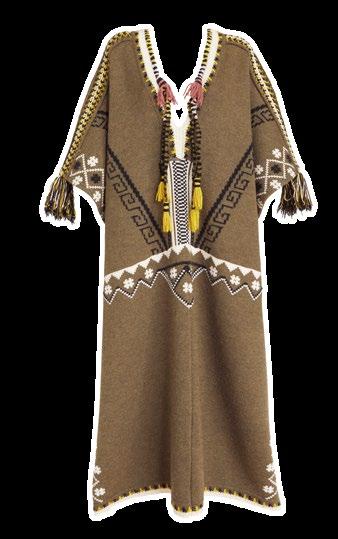


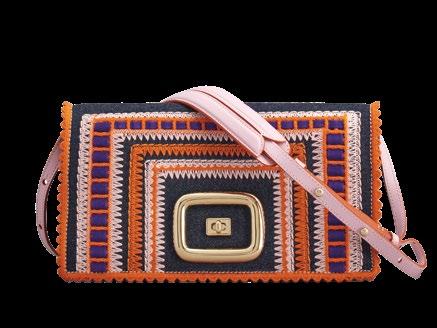 LUISA SPAGNOLI
LUISA SPAGNOLI
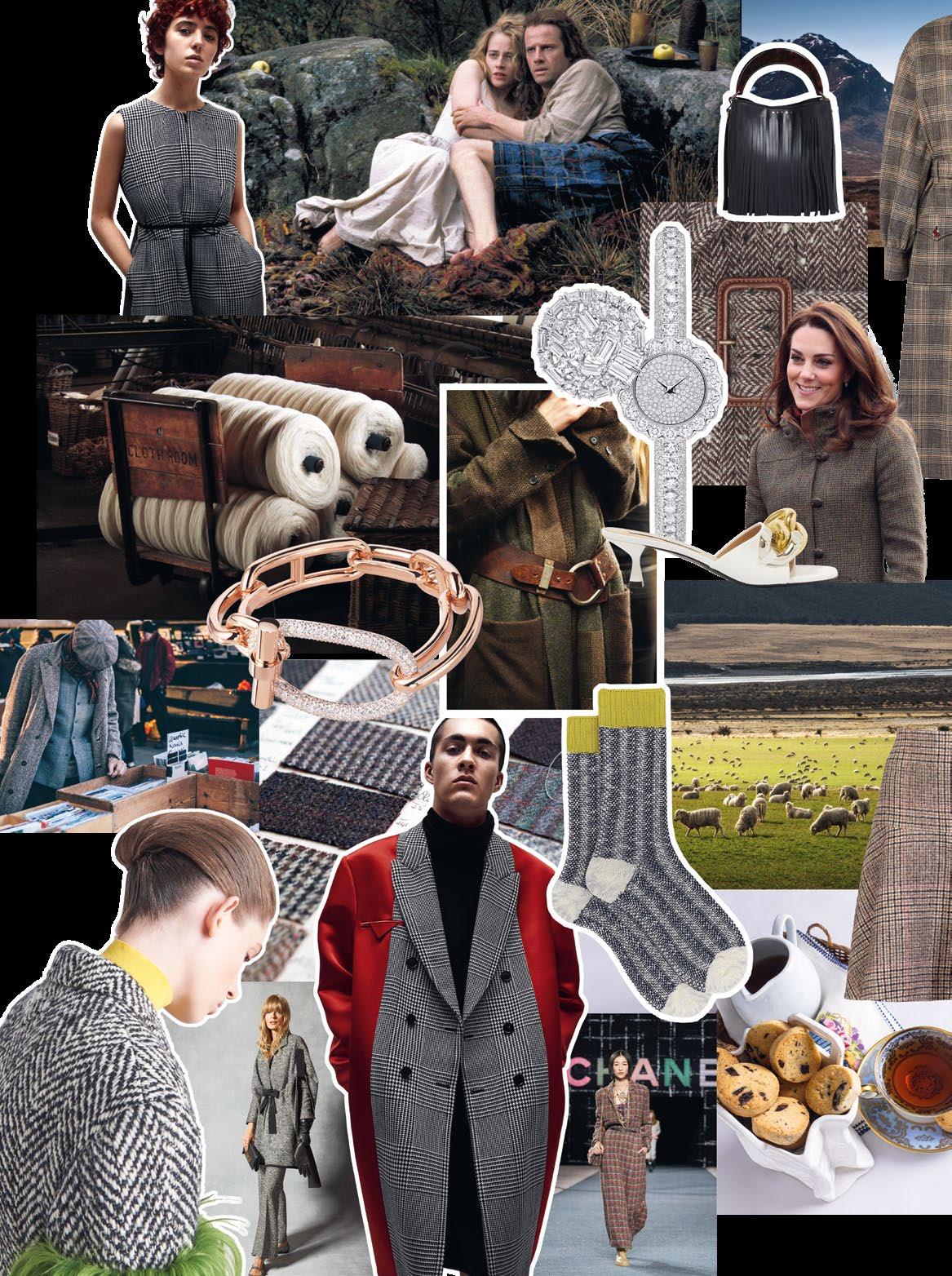 ASPESI
ASPESI
HERMÈS
CHANEL
MARNI
MARNI
PRADA
GALLO
BRUNELLO CUCINELLI
CAROLINA HERRERA
DIOR
ASPESI
ASPESI
HERMÈS
CHANEL
MARNI
MARNI
PRADA
GALLO
BRUNELLO CUCINELLI
CAROLINA HERRERA
DIOR
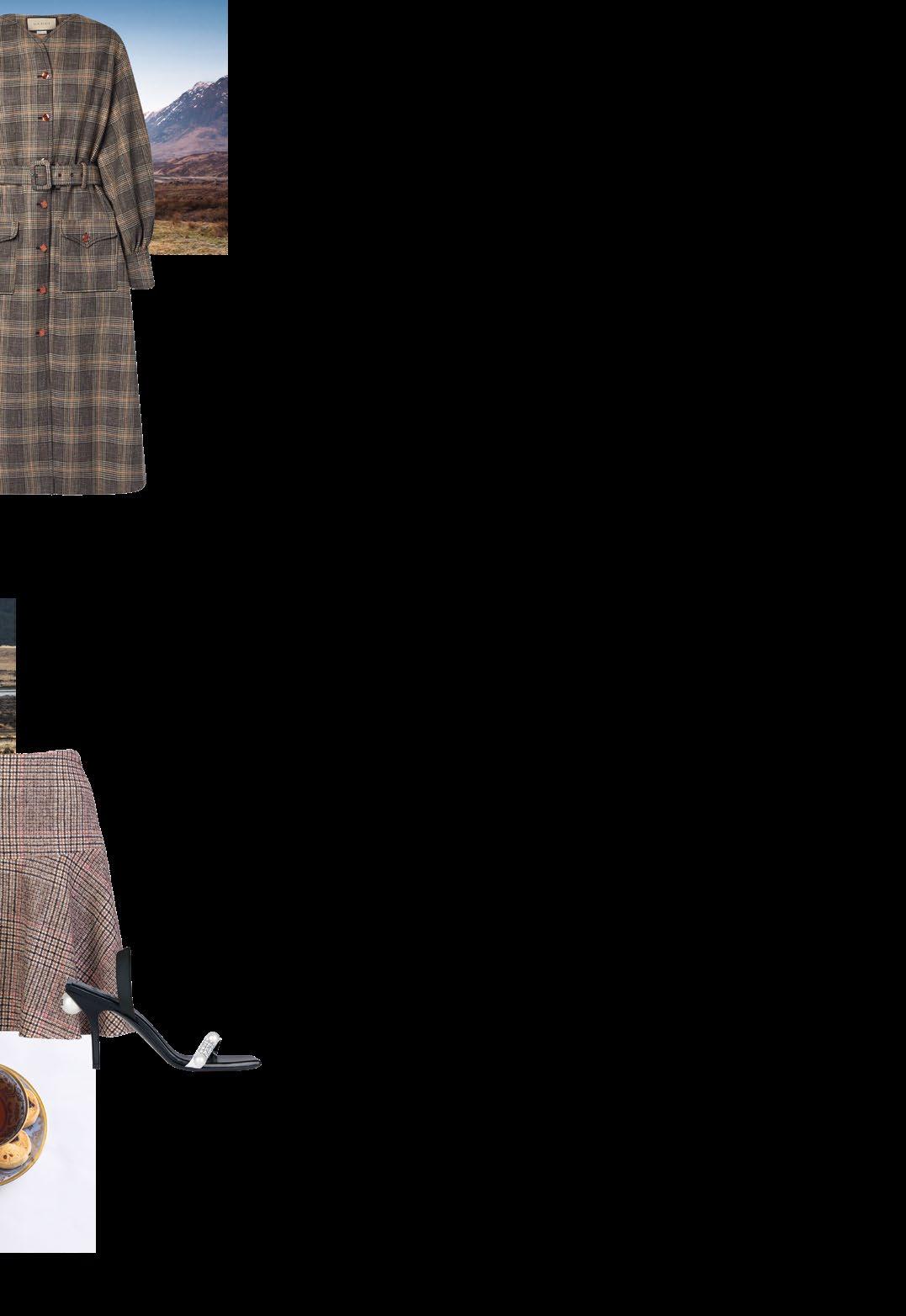 by Samantha Primati
by Samantha Primati
A rough fabric with a gentle soul. Oversized pied de poule coats, bold checked jackets and diamond cascades on elegant jewellery. Tweed once again takes the spotlight on damp, foggy winter days warmed by the aristocratic fabric par excellence.
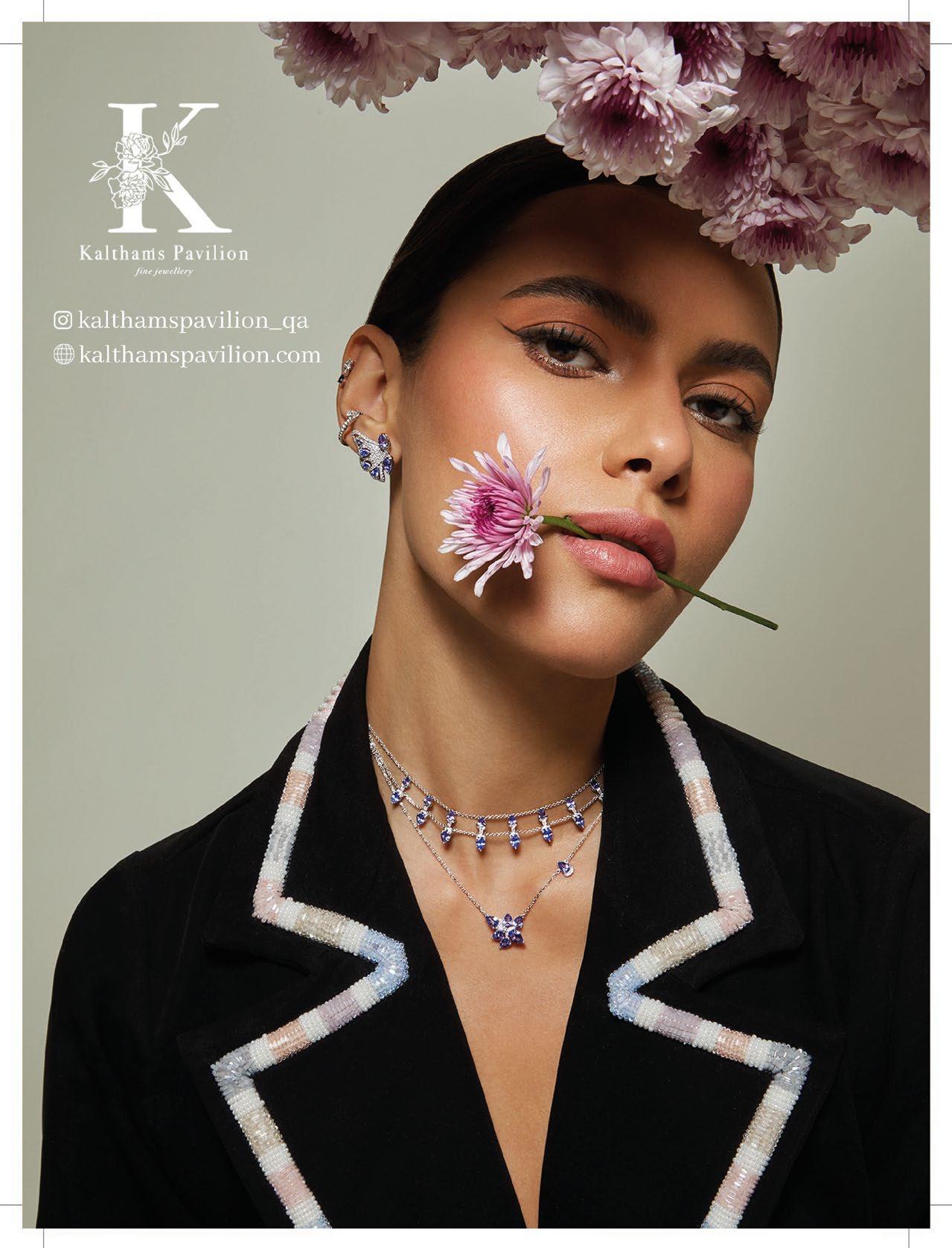
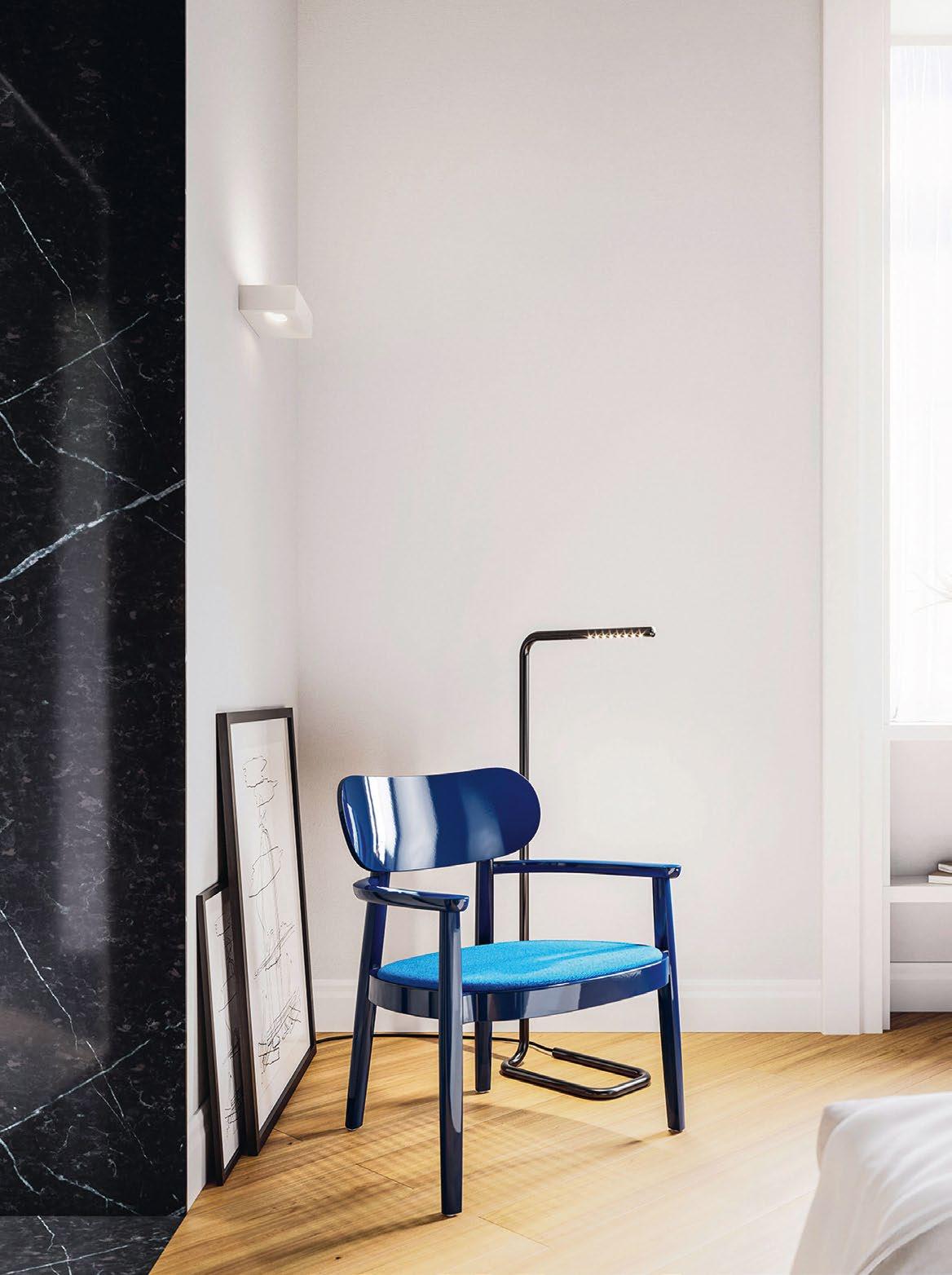
Certainly among the most internationally well-known, recognisable and imitated, Thonet bentwood furniture, with more than 50 million pieces sold to date, is seen as the first designer furniture.

There are many factors to Thonet’s success and it’s still interesting to retrace some milestones to understand the precursory effect of a system, that of design, precociously intuited by Thonet.
It all began in 1819 from the workshop opened in Boppard on the Rhine by a cabinetmaker, Michael Thonet whose interest focused on experimenting with innovative techniques for bending wood. Although some bent plywood designs already date back to around 1830, the first turning point was the Thonet family moving to Vienna to fulfill the wishes of Prince von Metternich. Here Michael Thonet worked with the architect Peter Hubert Desvignes to create furniture for the Palais Liechtenstein and contributed to furnishing Schwarzenberg Palace and the Café Daum. Such eminent backing coupled with participation at important fairs of the time opened the door for Thonet to the new ruling class, the bourgeoisie, eager to build an identity also through a style that truly represented the new era.
It was only in 1856, after having re-founded the company together with his children, that bent solid wood would be a success, with the creation of chair no. 14. Made of bent beech and with the seat padded with Vienna straw, chair no. 14 marked the transition to mass production and the start of industrial production. The wood bending process involves
A simple style, devoid of historical references and superfluous decorations, fascinates the masses and also some “connoisseurs”, from Adolf Loos to Le Corbusier.
steaming which saturates the fibres (by means of treatment in an oven) and softens the lignin contained in the wood, making the cellulose more elastic. It was a revolutionary system also because after the bending process the dried wood retains its original strength. By not relying on expensive expert cabinetmakers, Thonet invented a system, in an industrial way using moulds, that was a cheap process achieving beautiful results that won over the general public. In a period when eclectic revivals were all the rage, chair no. 14 with the round seat ring and the backrest no longer attached but screwed, offered a style free from any historical reference, a measured simplicity that fits harmoniously in any environment, home and social, proof being a purist such as Le Corbusier placing it in his Pavilion of the Esprit Nouveau in 1925. Without doubt, the chair’s success also centred on the insightfulness to have distribution supported by a sales network that stretched not only across Europe, but also reached the United States from 1873 with offices in New York and Chicago.
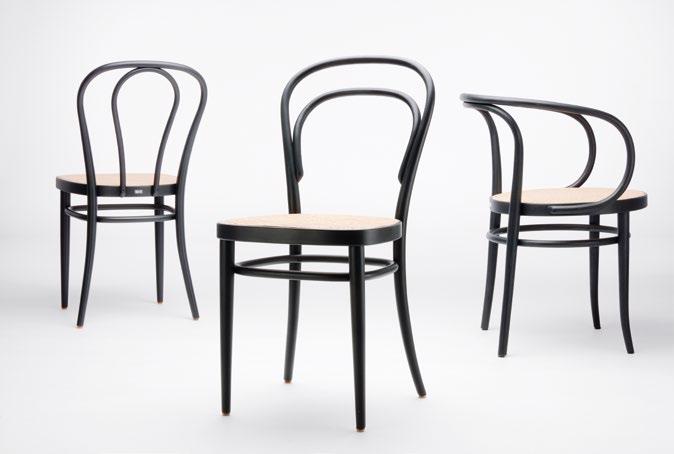
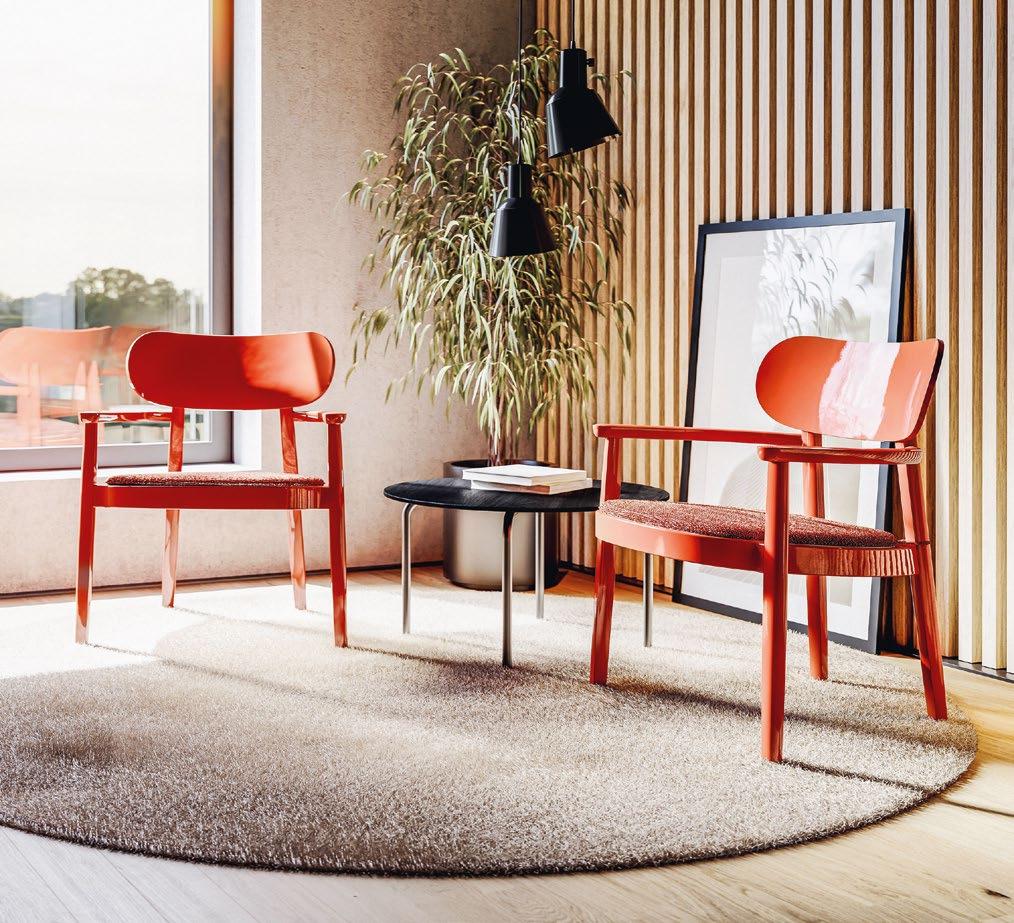

Another crucial factor to its success was that the chair could be disassembled; it was only made of 6 pieces, no longer assembled with glue but just with the help of screws. The impact both in terms of interchangeability but, above all, in terms of space saving, which also meant easier transport, was considerable: a box of one cubic metre could hold up to 36 disassembled chairs. The internationalisation linked to the huge spread of chair no. 14 was only the first step towards the production of other bentwood success stories written by well-known architects of the Wiener Werkstätte, such as Adolf Loos, Otto Wagner, Josef Hoffmann and Koloman Moser. In 1912 Thonet saw a record 2 million items sold worldwide and from then the product range expanded too. The company changed material but not style in the 1930s, with the introduction of innovative tubular steel, the main material of some modern masterpieces designed by famous architects. Iconic tubular pieces include the first models of cantilever chairs that, thanks to Mart Stam, Marcel Breuer and Ludwig Mies van der Rohe,
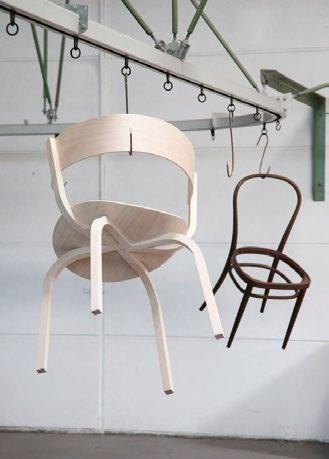
innovated not only the materials but also the type of chair. In northern Hessen (Germany) the last Frankenberg/Eder factory, built in 1889, becomes the headquarters of the company where today, in keeping with tradition and craftsmanship, both classic Thonet bentwood and tubular steel chairs, as well as the current collections, the result of collaboration with national and international designers and the creativity of the internal Design Team, are produced. Currently led by Brian Boyd – Chief Executive Officer – and Norbert Ruf on the creative side, the company relies on the active participation (as partners and collaborators) of the fifth and sixth generation descendants of Michael Thonet.
In addition to the famous coffee house chair no. 14, designed by Michael Thonet in 1859 and today revisited with model 214, for 150 years considered an evergreen classic also thanks to its aesthetic linearity that makes it versatile and suitable to be used alongside every style, there are other models without armrests, with an open back or backrest (215) available
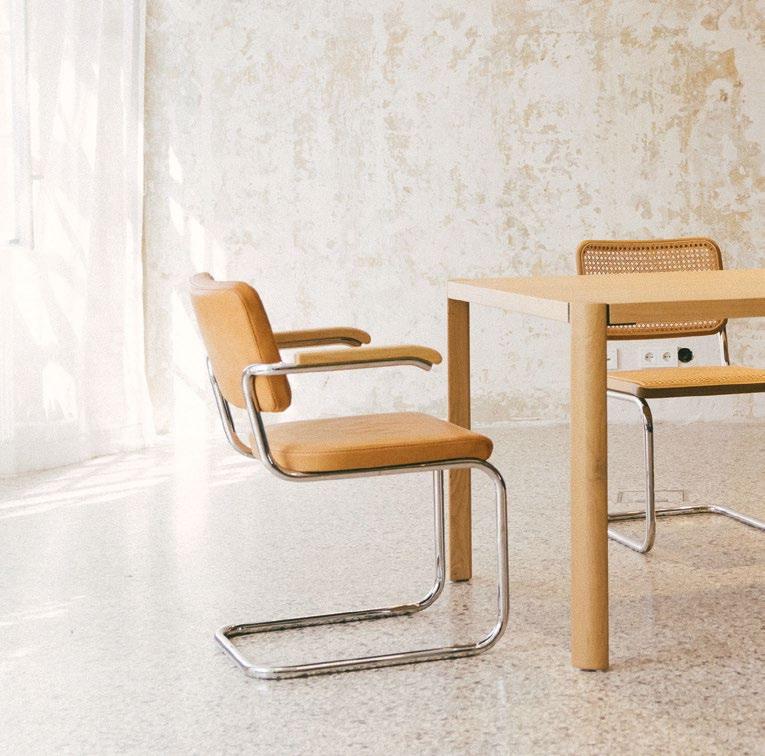
in different leather or fabric upholstery. Recent creations include model 119, a lounge chair by Sebastian Herkner (2021) that, following on from the successful cheerful 118 collection, uses traditional Thonet materials, from bentwood to braided Indian cane, with simple shapes offering even more comfort with the new padded version presented during Orgatec 2022. BritishAmerican designers Sam Hecht and Kim Colin (Industrial Facility) have crafted a line of chairs belonging to the 220 collection (also presented at Orgatec 2022) that gives a new twist to the technology of bent plywood, evoking a key aspect of Thonet’s heritage. Stackable, lightweight and ergonomic chairs with bent armrests that showcase once again Thonet’s importance and relevance today. Not only chairs but also other items of furniture such as table 1140, designed by Aisslinger, which interprets the idea of functionality, formal simplicity and the discerning nature typical of the company. “We wanted to come up with a table that worked in multiple scenarios (...). We wanted a sturdy table on which we could dance without bulky supports” explains the designer, a light yet strong table that, thanks to minimal use of materials and opting for FSC certified wood – the legs are in solid oak and the top is in real wood veneered blockboard –meets the eco-sustainability credentials required. One of the special features that helps make Thonet’s products stand out, not only dedicated to interiors, is Thonet All Seasons - a collection suitable for any time of the year, designed by the Thonet Design team led by Miriam Püttner. The collection recalls the classic models in tubular steel from the Bauhaus period, such as the cantilever chairs S 33 and S 34 by Mart Stam, the coffee tables B 9, the lounge chair S 35 by Marcel Breuer and the cantilever chair S 533 by Ludwig Mies van der Rohe, reinterpreting them with upholstery in bright colours, adapting them to an outdoor as well as indoor use. A contemporary company aware of the importance of heritage, now part of the international collective imaginary, in 1989 it opened in Frankenberg/Eder the Thonet Museum that houses historical examples, from the first bentwood furniture to Liberty-style furniture, from tubular steel furniture from the Bauhaus period to post-war furniture.

and Rosenthal launch Signum, a homeware, crystal living collection
 by Donatella Zappieri
by Donatella Zappieri
This is how Giovanna Battaglia Engelbert, Swarovski Creative Director, describes the recently launched crystal living collection which she developed together with the porcelain experts from Rosenthal. Each piece is thoughtfully made to highlight moments of joy, while simultaneously showcasing the heritage and craftsmanship of the two innovative brands.
Swarovski is a place where magic and science meet. Founded in 1895 in Austria, the company today designs, manufactures and sells the world’s highest quality crystal, gemstones, Swarovski Created diamonds and zirconia, jewelry and accessories, as well as crystal objects and home accessories.
Rosenthal, the long established porcelain company, was founded in 1879 and since then raises the bar for aesthetics and individuality. Their products stand out with exceptional form, function, quality and craftsmanship never ceasing to combine innovation with creativity.

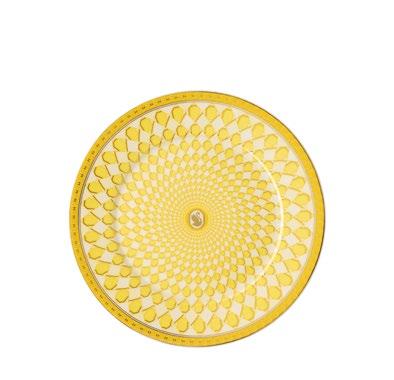
With this collection, Swarovski introduces its brand pattern for the very first time. A translation of the brand’s mesmerizing and recurrent motif, the octagon. Inspired by the 19th century Austrian art movement, by its modern approach towards art and craftsmanship, the collection is joyful yet sophisticated with a retro futuristic vibe. The Swarovski x Rosenthal SIGNUM collection is a richly detailed honor of brand heritage.
Just as the octagon, the Swarovski brand colors of blue, green, yellow, and pink are captured in graphic designs edged with hand-painted golden accents - another detail that links to Swarovski heritage and craftsmanship in designing and creating jewelry. The stylish swan-engraved cut-crystal lids are the center of attraction and add an extra dose of luxury to an already enchanting range, so do the center stamps - a gold Swarovski Swan. From forms to printing to the application of delicate and hand painted décor details, each element is a representation of Rosenthal craftsmanship and expertise. Including tea sets, espresso sets, and full dining services, the complete collection is available in verdant green, and is designed to stand alone or be customized with selected pieces in the other color ways. Offering a pleasurable opportunity to curate your own tablescape, individual pieces can be combined to radiate a sense of diverse contemporary cool.
With a touch of art and alchemy, the Swarovski x Rosenthal SIGNUM collection honors l’art de la table - the pleasure of setting a table - with a fresh approach to modern living.
“With this collection we offer a new way of embellishing your life. Just like we are adorning ourselves with jewelry, we get the joy of decorating our lives through whimsical yet elegant collections”.
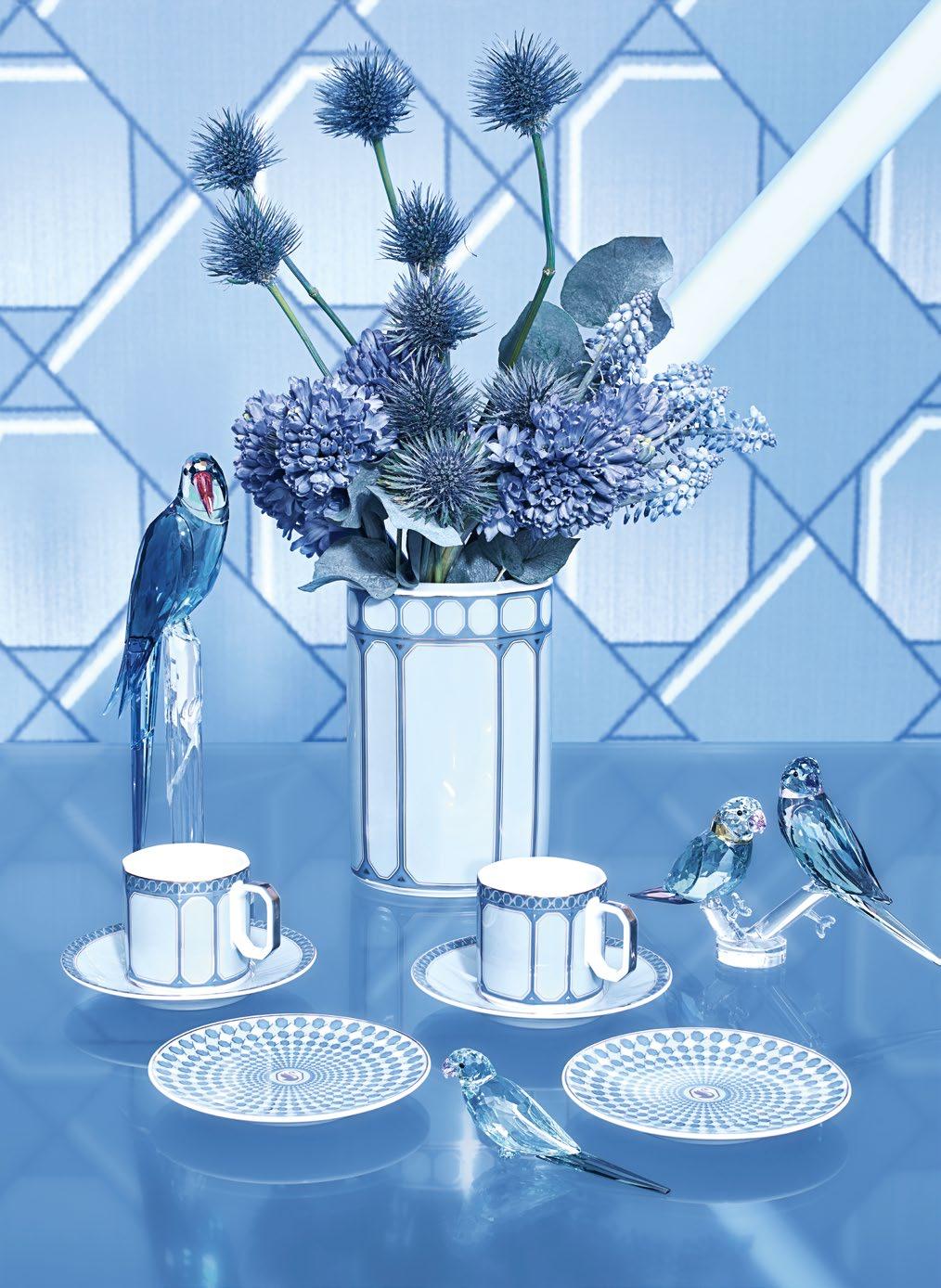
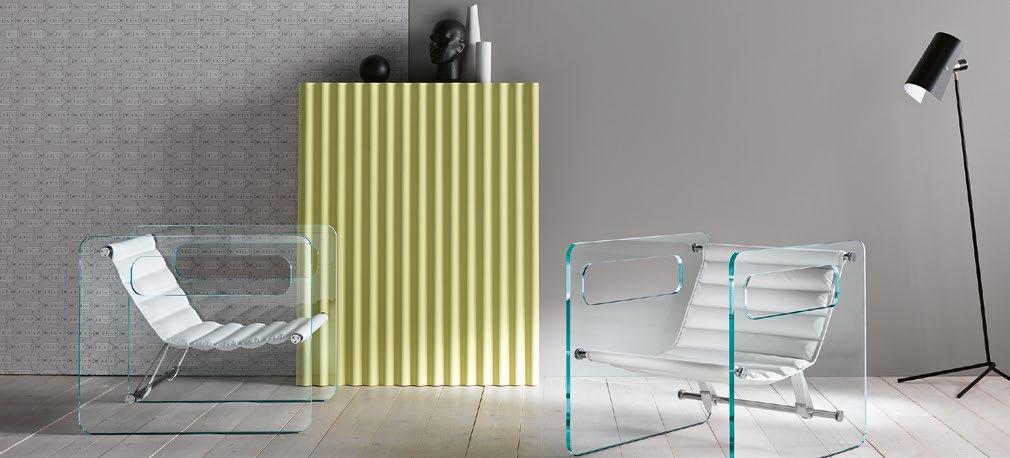
On the occasion of the International Year of Glass declared by the UN General Assembly, and in particular in conjunction with the second edition of The Italian Glass Weeks, the new multidisciplinary space TDH – Tricolore Design Hub (new operational headquarters of the PR & Press Office Ghénos Communication agency) in Milan, hosted a meeting with some protagonists of industrial, artisanal and artistic glass. The staging with glass objects has been completed by a series of videos that reveal the “secrets” of making glass.
Tonelli DesignThe Venetian “conterie” (beads) are small glass pearls, obtained from the cut of a long and very thin perforated cane, with various colours, normally used for the creation of necklaces and embroidery. So particular as to be used in ancient times in some countries as a currency of exchange, they are now widespread everywhere and represent an important page of the industrial history of glass: they were produced in Murano by 14 companies that joined, in 1898, in the Venetian Society for the Conterie Industry. Today they are back to embroidering furnishing accessories such as tables and cabinet doors by a Treviso designer who has devised a new application of precious glass beads. andreaburana.com
The new technique of welding flat glass plates, introduced by Tonelli in the 1980s, allowed the creativity of important design names, from Isao Hosoe to the well-known DDL group (De Pas, D’Urbino and Lomazzi), to express itself using glass beyond its usual possibilities. This gives rise to original glass seats, tables and bookcases that, thanks to a structural adhesive, maintain transparency in the welded parts, giving greater resistance to glass, especially in the joint. With increasingly refined processes, and very high quality standards, Tonelli proposes a contemporary vision of living that, starting from glass, one of the noblest and oldest materials in history, today expands to include new ones such as stones, wood and metals. The artistic direction of Massimo Castagna since 2020 ensures the expansion of the catalogue that is enriched with new products and new materials. tonellidesign.it
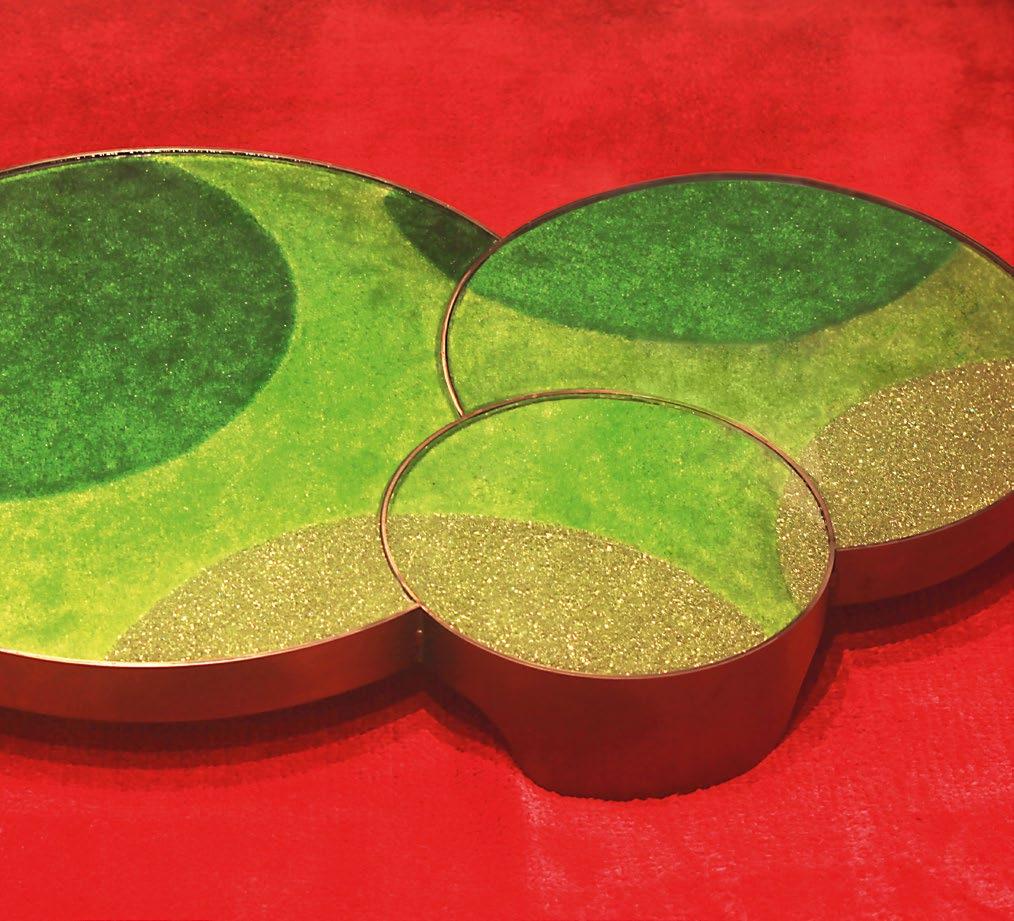
Borosilicate glass objects - a glass particularly resistant to temperature changes, neutral, normally used for scientific instruments – are those proposed by Blueside Emotional Design. The brand was created by the Perugia based company Steroglass, which in addition to the glass blowing has gained a long experience in the processing of borosilicate glass in the technical-scientific field, applying it, with the new project, to design tableware and accessories for contemporary living. Blueside Emotional Design, which makes use of established professionals, young architects and designers inside and outside the company, offers minimal and refined objects with the intention of “exciting” with design as evidenced by the pieces signed by Simone Micheli. blueside-design.com



Riccardo Contini has always breathed and experienced art and beauty: he grew up between Venice and Cortina d’Ampezzo in a context of travels, artists and masters of culture, in a family of traders and great art lovers, owners of important galleries, although his approach to art has always been personal and creative. After his classical studies, he graduated in Fashion Design at Istituto Marangoni in Milan, where he rediscovered a passion for Native Americans, who fascinated him as a child (when, contrary to mainstream storytelling, he always sided with the “Indians”!). “At university, I again stumbled upon the Native American world because of a research assignment. I immersed myself in their wonderful spiritual world, where I found a message of light and universal peace, far from the impositions and the self-referential system of religions or dogmas”.
Native Americans’ vision relies on mutual respect and love of the planet and nature in all its forms. In the face of creation, humans are no different from a tree, an animal or a stone because they are all part of creation and participate in it. This vision inspired Riccardo Contini to create his first jewellery collection, Es: “In Freud’s psychoanalytic theory, the Es (or id) represents the voice of nature in humans, its most spontaneous and primordial part, the primary piece. With my creative approach, I try to move this piece from an analytical vision to a holistic one, recognising that everything is connected, that we are all children to the same Mother, with links in a chain larger than us. In addition, this first collection of mine also owes its name to a book, Il giardino dell’Es by Tiziano Lera, a great “Zen architect”, as I like to call him, who always integrates nature into his architecture”. Everything is connected

Riccardo Contini presented Es, his first jewellery collection, in Venice. The theme is the spirituality of Nature and of the natives of the Earth, ancestral bearers of true wisdom and knowledge.
and consistent even in his collection, designed in every detail without ever losing sight of the designer’s holistic vision. These are 19 unique pieces (a non-random number: in numerology, 1 is the number of creation, independence and personality; 9 is a spiritual number, which among other things contains the concept of the beginning and the end), each in a limited edition of seven copies. Contini designs them and personally follows them in all stages of production, entrusted, between Valenza to Milan, to the hands of expert craftsmen: gold is engraved, ruled, burned with a torch, and it is like seeing the work of nature, which eats the elements, erodes them while giving them new life in an endless cycle. “This first collection of mine features an arrow as protagonist, which ideally combines time and matter and fixes fragments of it: the bark of a tree, a ray of light... I created this jewellery at the end of a challenging time for me, and I came out of it with a new awareness, new gratitude towards life and the search for an ideal of beauty. Beauty is the first reason we love art; beauty makes us feel good, and through
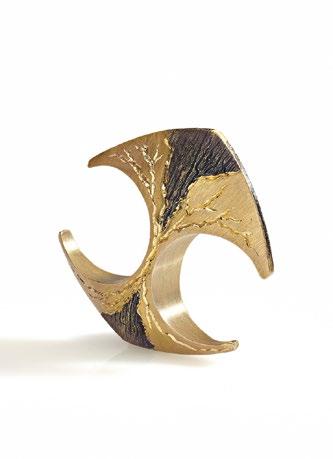

beauty, we must send a message of peace, light, harmony, and respect even when things may not go as we would like them to”. All the jewellery in this collection is consistently and exclusively made of Fairtrade-certified gold. This ethical choice gives miners decent working conditions and a better price for the extracted metal, with beneficial effects on local communities. It also has a minimal environmental impact: the machines use water for internal recycling, ground waters are preserved thanks to minimal use of chemicals, and post-mining sites are reforested. “For me, using ethical gold is a real challenge: because of gold, native cultures have often been exterminated and ‘deculturised’ around the planet. I use it to convey a completely different message, always with an innovative perspective, in fact I’m experimenting with new alloys and colours”. Packaging is also rightfully part of Contini’s ethical puzzle: beautiful containers made of terracotta by Mrs Sow Paik, owner of the 8940km brand in Carrara, a Korean artisan he met through Park Eun Sun, a great artist covered by his family’s galleries; his jewellery is immersed in raw cork shavings inside. The whole takes up the concept of natural erosion with an innovative aesthetics; the boxes, also unique pieces, are so beautiful that they turn into reusable objects. The exhibition “Volteggiando, tra Tempo e Materia” was hosted in the Contini galleries in Venice and Cortina and was also very popular for the unique set-up that involved all the senses. In the rooms, 600 kg of raw cork interspersed with fossil wood pillars over 200 million years old created a primordial path leading to the jewellery cases in recycled wood, which underwent a particular process to make it look like etched metal. The rooms resounded with native songs, flutes and drums. At the same time, visitors were greeted by a refined, wholly natural and crueltyfree fragrance created by Alps, a new project by Mavive, the prestigious perfumery group including The Merchant of Venice and other big brands in the perfume industry.
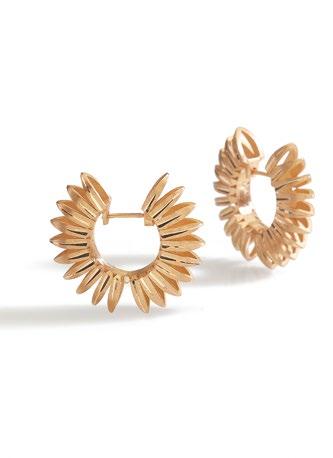
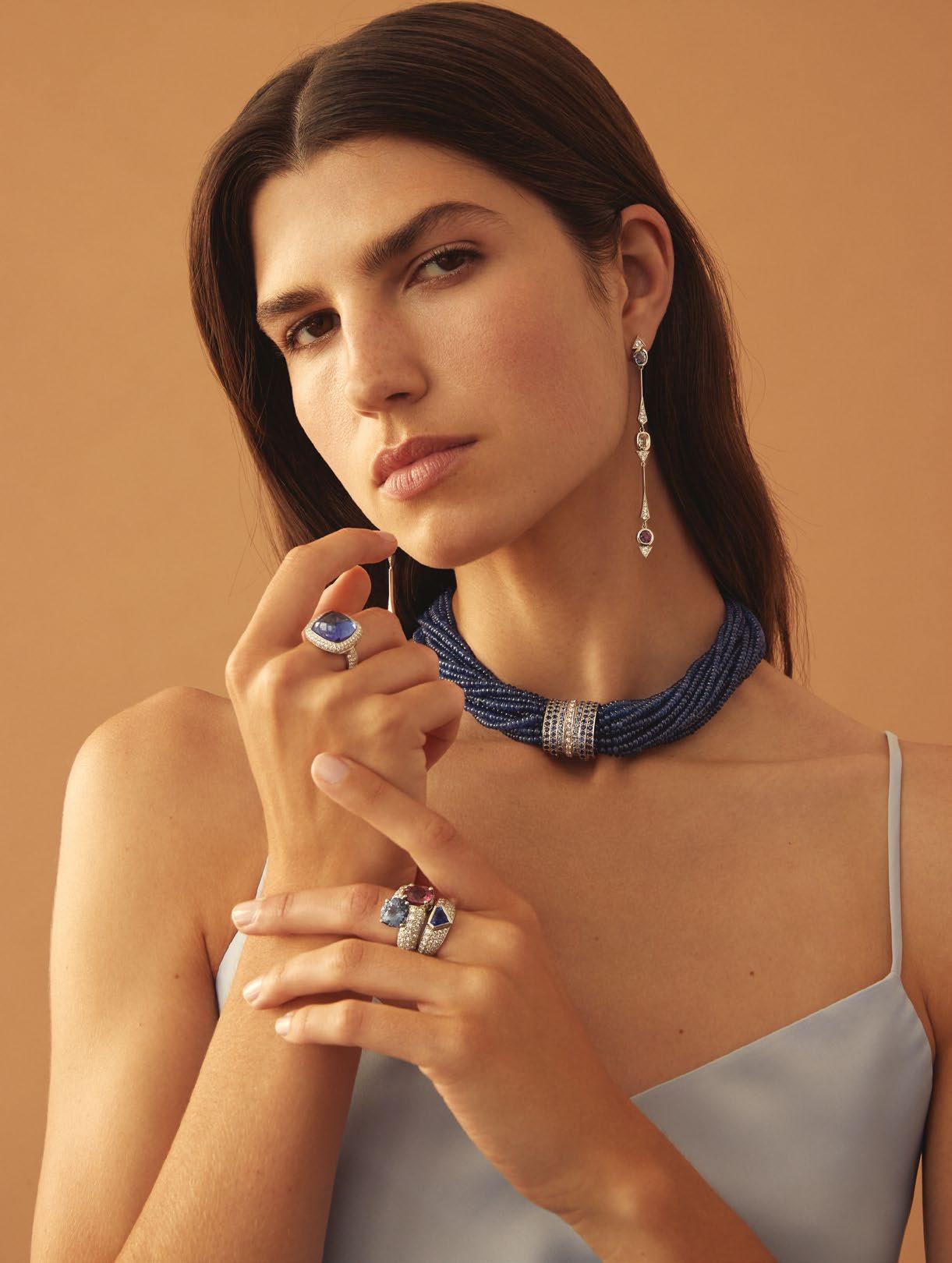
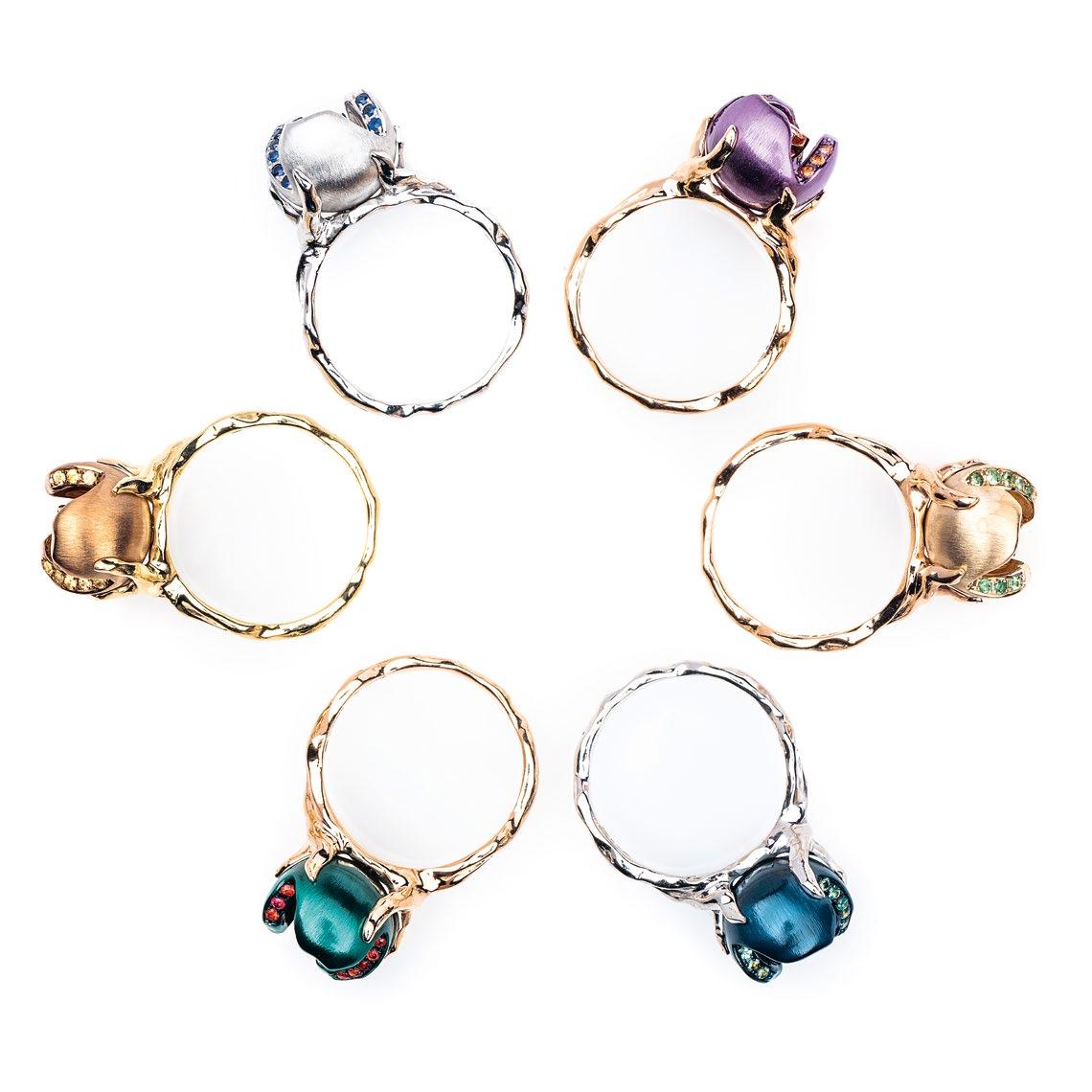

They are inspired by Christian Felber’s Economy for Common Good and Luigino Bruni’s civil economy, collaborate with city cultural associations and voluntary groups, and use traceable and ethically certified raw materials. The Giversos genuinely believe in a different way of doing business, more equitable and sustainable, as Marco explains, at the helm of the family jewellery with his brother Lucaalongside their parents, who continue to make a fundamental contribution. «Giverso has its roots in the early decades of the twentieth century in Condove, a village in Val di Susa, where my great-grandfather used to repair and sell watches. Then the family moved the business to Turin by opening a shop, where my parents specialised in high jewellery and introduced great international brands. But about twenty years ago, we completely changed course. We started designing and making everything we sell in-house. At that point, as we tried to respond to today’s social and environmental issues, ethics became the north star of our business. Our jewellery aims to send out a message of peace, cooperation and respect». In a nutshell, those who buy a Giverso jewel buy an artisanal product. All the gold used is ethical - recycled and refined inhouse, or Fairmined certified. The diamonds come with a unique “ethical passport”, that of Canadian mines that ensure the highest respect for the environment and workers, while the rubies come from Greenland: they are also fully traceable and respectful of social and environmental integrity. Giverso is one of the few companies worldwide to combine
capim dourado, a protected vegetable fibre from Brazil, with gold. It is a resource for indigenous Brazilian women who harvest and process it, and for the environment because it only grows spontaneously (it does not cause deforestation as it cannot be cultivated). «We like craftsmanship, manual skills, unique pieces, and we believe in ethics. We have also started a collaboration with the Renken association in Turin, supporting a reforestation project in Senegal. Through them, we also purchase ebony woods cut by Senegalese artisans, which we then refine and combine with ethical gold and semiprecious stones. This way we ask people to use their art and then add ours to theirs: we cooperate and don’t exploit. Another economy is possible; we are in a network with various associations and voluntary groups and aim to reconcile profits and the common good to become real game changers”.

A Giverso piece can result from the request of a customer, with whom the family works and interacts until the final creation is complete, or from a cultural project. “Every year - Marco continues - we create twelve collections based on a cultural project that acts as a common thread. For example, in 2022, our theme was the ‘revolutionary power of women’. We focused on three extraordinary women who, in various ways, have revolutionised the mindset of their time and, consequently, ours. The great challenge was translating Rita Atria’s transgression, Artemisia Gentileschi’s courage and Hypatia’s freedom into something precious and physical like jewellery”.
The 2023 project, presented in November,
Ethics and solidarity are the cornerstones of Giverso, a Turin-based jewellery company that develops its collections based on a different cultural project every year.
focuses on the Cosmos, or the language Giverso identified as typical of the cosmos, the planet earth and the human body. This language expresses itself with shapes, colours and lights: “For example - Marco concluded - there is a very colourful nebula in the shape of a butterfly in the cosmos. The connection with planet earth is clear: ‘a butterfly’. We translated this language, this butterfly, into designer rings and earrings with gorgeous and modern cuts. It has nothing to do with a didactic representation. In our Comete collection, the celestial element is the comet, with its distinctive train. The earth element is a waterfall of dew, represented by drop-shaped diamonds in our jewellery. Customer feedback is more than positive: if a piece of jewellery is based on values and messages, it will convey a perceived meaning that rarely leaves people indifferent”.
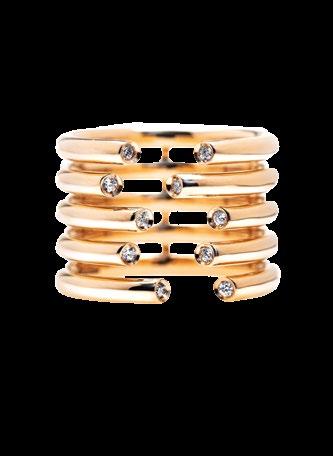
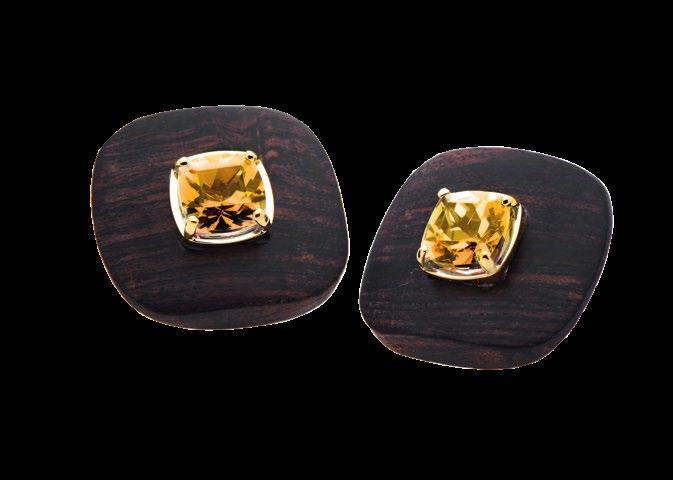
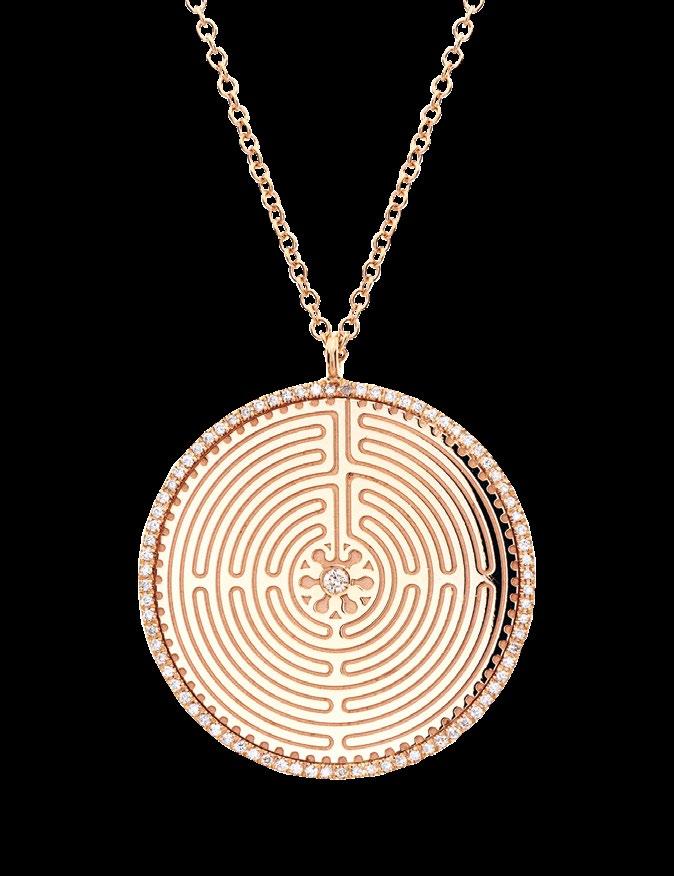
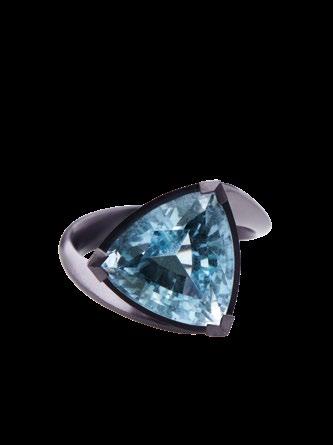
Giovanni Raspini bought and restored an ancient stately building - the former home of Andrea Sansovino - in Monte San Savino, in the heart of the Val di Chiana, where he decided to place the most beautiful things he created throughout his 50-year career.
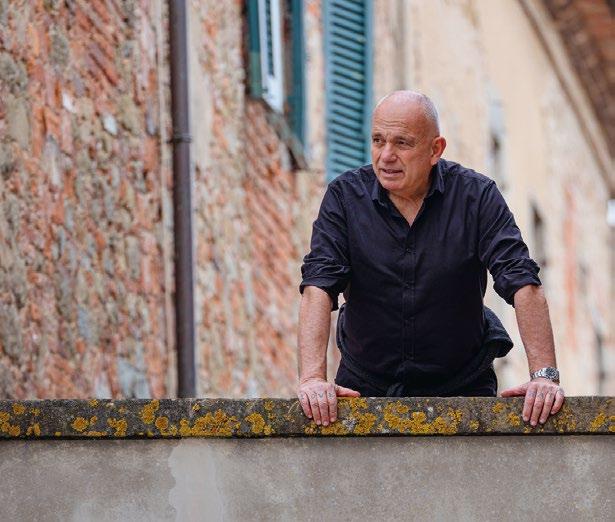
Giovanni Raspini has finally “found a home” in the heart of the Val di Chiana in Arezzo - and precisely in the centre of Monte San Savino, a stone’s throw from the Palazzo Comunale and the famous Cassero. As he explains, it is where he could settle down and exhibit the most beautiful things done in fifty years of his career for the benefit of friends, customers, journalists and visitors. One can imagine how long and obsessive it was to search for a place that could meet the expectations of this eclectic and curious artist - an architect who worked as a silversmith first and then a creator of beautiful silver jewellery, with a passion for antiques, collecting, art and sculpture. “I wanted to lay the foundations of a place that was simultaneously an atelier and a creative laboratory, an exhibition venue, a Renaissance workshop to meet, collaborate and forge new talents”. Giovanni Raspini fell in love with the building at first sight. He was ecstatic when he learned it was home to Andrea Sansovino, a great sculptor and architect of the early Renaissance, active and admired in Italy, Spain

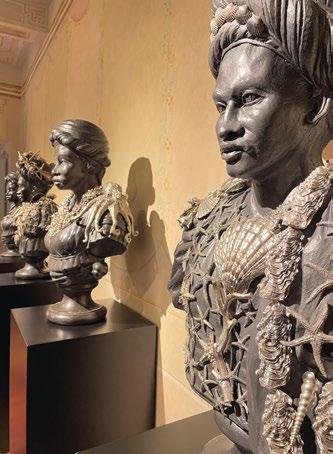
and Portugal. “So important - says Giovanni Raspini - that Vasari added his biography to his The Lives”. Largely conservative and respectful of the place and its history, the restoration works lasted over two years. Today the thirty environments - including rooms, frescoed halls and secret rooms, an internal courtyard, medieval cellars and two terraces - tell visitors an all-Italian story about history,art,beauty,taste and entrepreneurship. Outside, a pair of silver mice climbing along the grate of a window on the simple sixteenth-century façade seems to give visitors a hint of the unusual and beautiful things that await them inside. The interiors are also enlivened everywhere by silver mice peeking out of furniture, furnishings, books, and sculptures, looking curiously at the jewellery, objects and artefacts on display. Crossing the door, you enter a place of art and creativity in a class by itself, like the treasures it enshrines. Each room is a “room of wonders”, a world unto itself, a keeper of jewellery and artefacts, all unique pieces resulting from ultimate creative freedom, specific projects and multiple techniques and skills. We can find the ornaments created by Giovanni Raspini over the years for his exhibitions and very far from any commercial consideration - the Jewels from a Wunderkammer necklaces, the Vanitas Mundi skulls, the Nautilus jewellery inspired by the depths of the sea and Capitan Nemo’s adventure. But there are many surprising rooms inside the Silver Mice Palace: the King Kong suite, with its gorilla skulls and jewellery made from unexpected materials, the Room of Velvets, the Room of Drawings and the Cabinet de Curiosités, created in collaboration with

interior designer Andrei Dmitriev, and the Silver Mice Room. But what makes this atelier-laboratory even more unique and alive are the beautiful sculptures by Giovanni Raspini dotting all the rooms and the incredible chandeliers and monumental sculptures created in collaboration with the ninety-year-old local artisan Giovanni Fulgenzi.
“My studio in the building - Giovanni Raspini concludes - is a panoramic room, right up at the top, with a hulled ceiling embellished with floral friezes and pearl festoons. Going from this overworld down into the cellars, I look at the medieval vaults, capitals and Renaissance sandstone friezes of the Sculpture Workshop. Here, I feel the living presence and echo of Sansovino”.

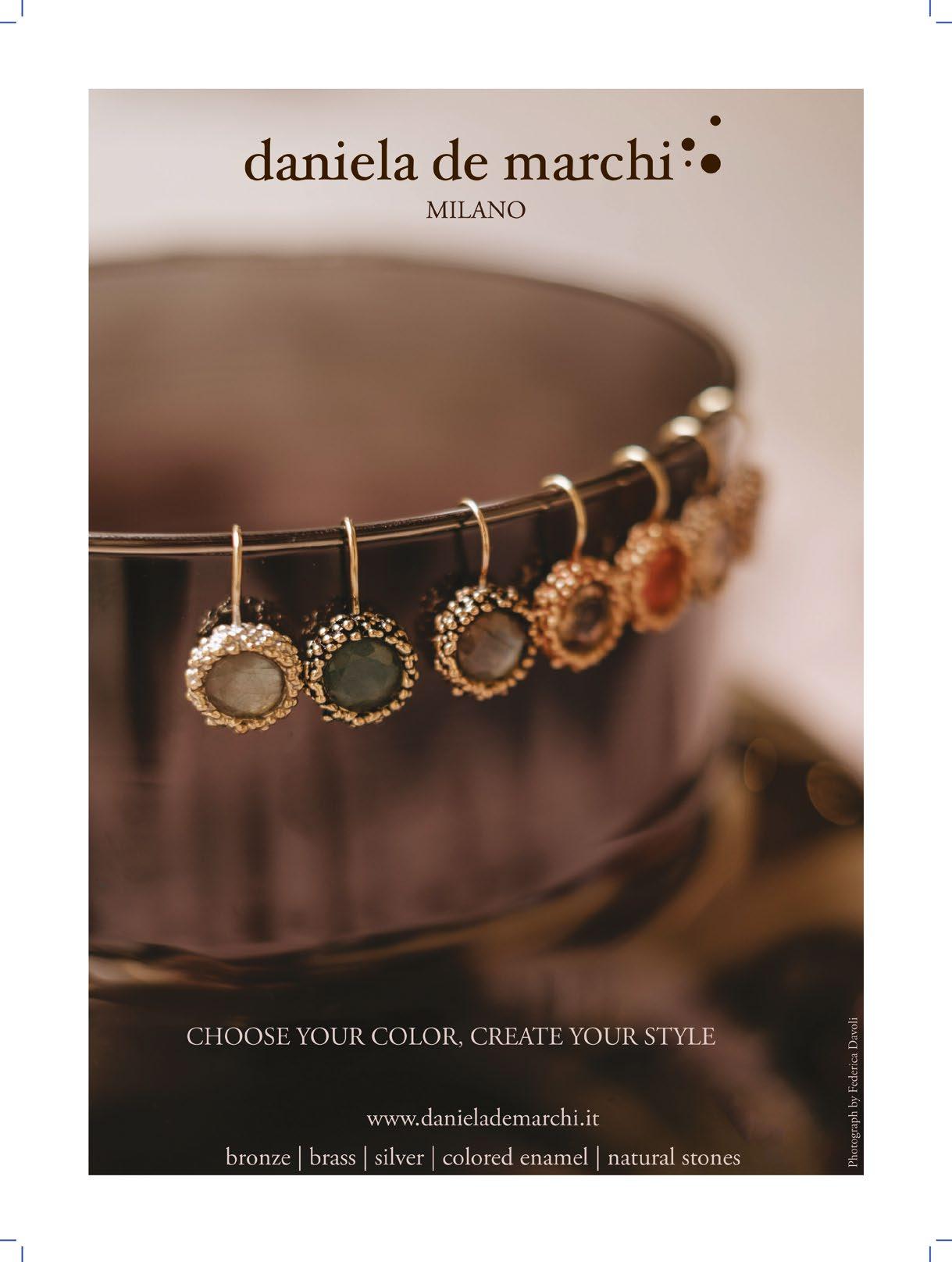 by Davide Passoni
by Davide Passoni
An explosion of colour, a shock for the Medusa Maison’s autumn-winter collection, emphasised by the oversized dimensions. Case: 44 mm.


The Luminor collection’s new GMT combines a time zone function with a power reserve indicator. For bold wrists. Case: 44 mm.

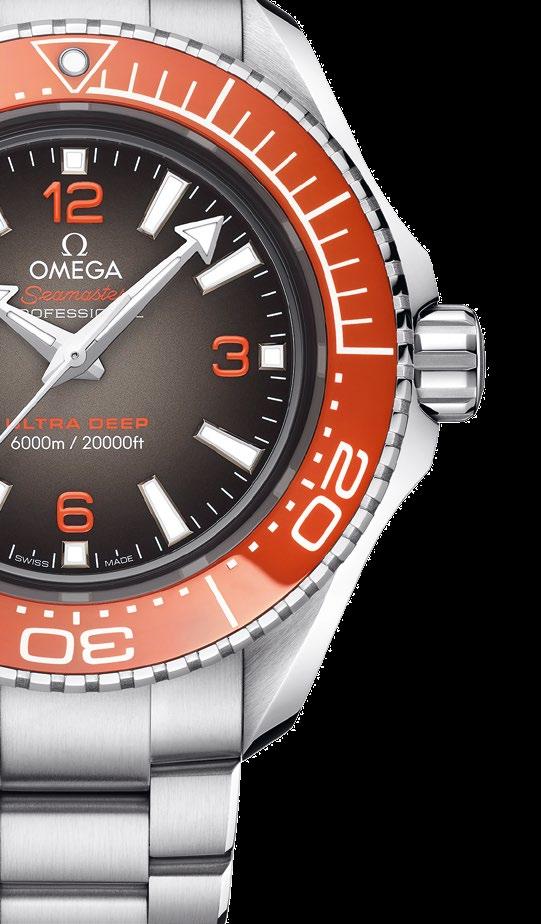
Increasingly oversized for her, and smaller and smaller for him: it’s the upsidedown world of watchesEberhard & Co. Scafograf MCMLIX 300 It comes in bright green, a colour that’s increasingly becoming a new black in watchmaking. A tough diver with a casual-chic soul. Case: 43 mm. Omega Seamaster Planet Ocean Ultra Deep Accompanying the modern woman is the reward for the watch that plunged to the bottom of the Mariana Trench. Case: 45.5 mm. Versace Icon Active Panerai Luminor BiTempo

The brand offers it in two sizes, a masculine one and the other one with a feminine twist. But who said they are not interchangeable?
Divers
Oris


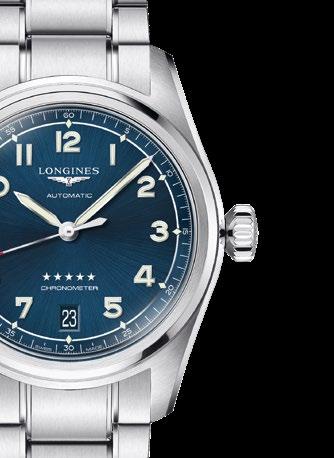
Sixty-Five Cotton Candy
Colourful and fun, it looks good around the wrist of a man with a strong personality who loves to play with life from time to time.
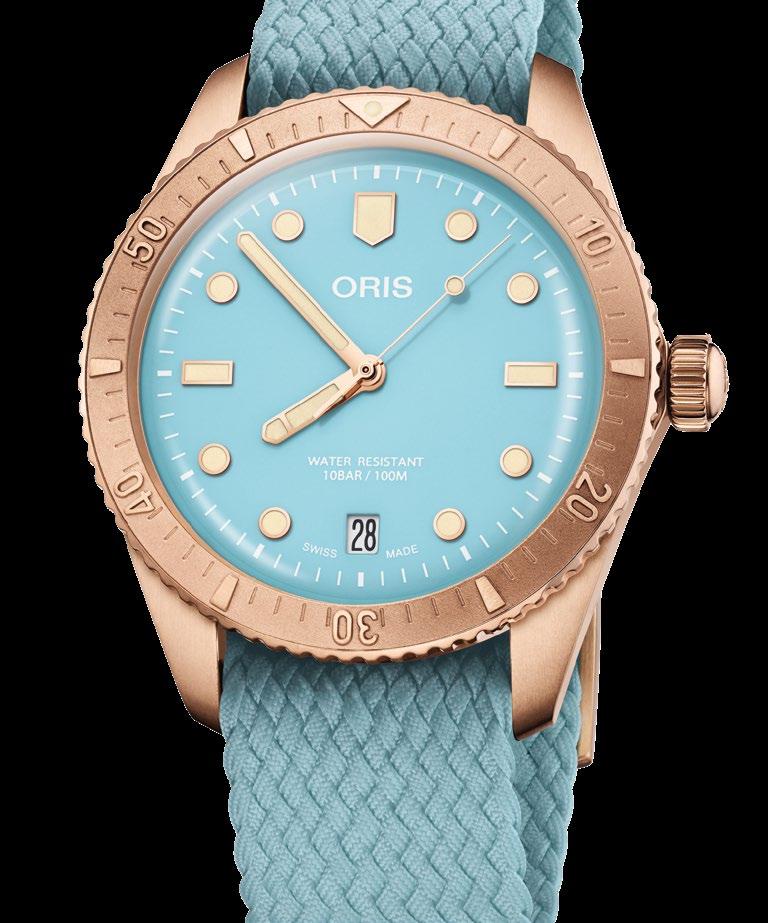 Longines Spirit
The popular Winged Hourglass aviator watch comes in a size that winks at the sky while fitting nicely around the wrist. Case: 37 mm.
Case: 38 mm.
Nomos Tangente Small, understated, with shapes inspired by Bauhaus principles. This timepiece from Saxony is a lesson in design. Case: 35 mm.
Bvlgari Bvlgari
Longines Spirit
The popular Winged Hourglass aviator watch comes in a size that winks at the sky while fitting nicely around the wrist. Case: 37 mm.
Case: 38 mm.
Nomos Tangente Small, understated, with shapes inspired by Bauhaus principles. This timepiece from Saxony is a lesson in design. Case: 35 mm.
Bvlgari Bvlgari
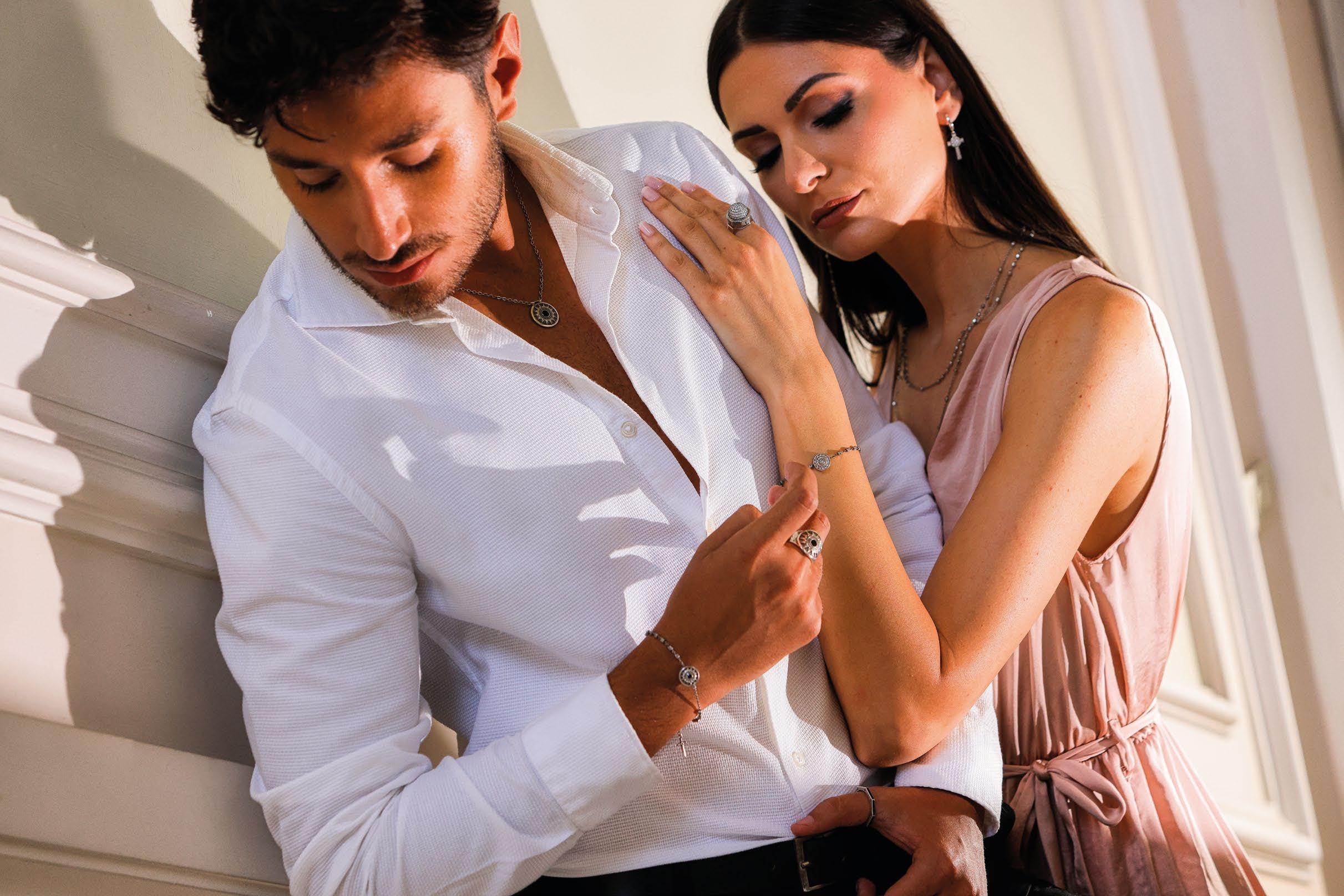

 by Davide Passoni
by Davide Passoni
“Collecting is the wrong word. I don’t collect, I love. I’ve never bought my watches to collect them, but to love them. Everything I’ve found, I’ve found because I was driven by the desire to possess and the pleasure of having, looking at, touching a watch. I never called myself a collector, but a lover. My relationship with watches is a love story that lasts a lifetime: I love them now just as much as the first encounter”.
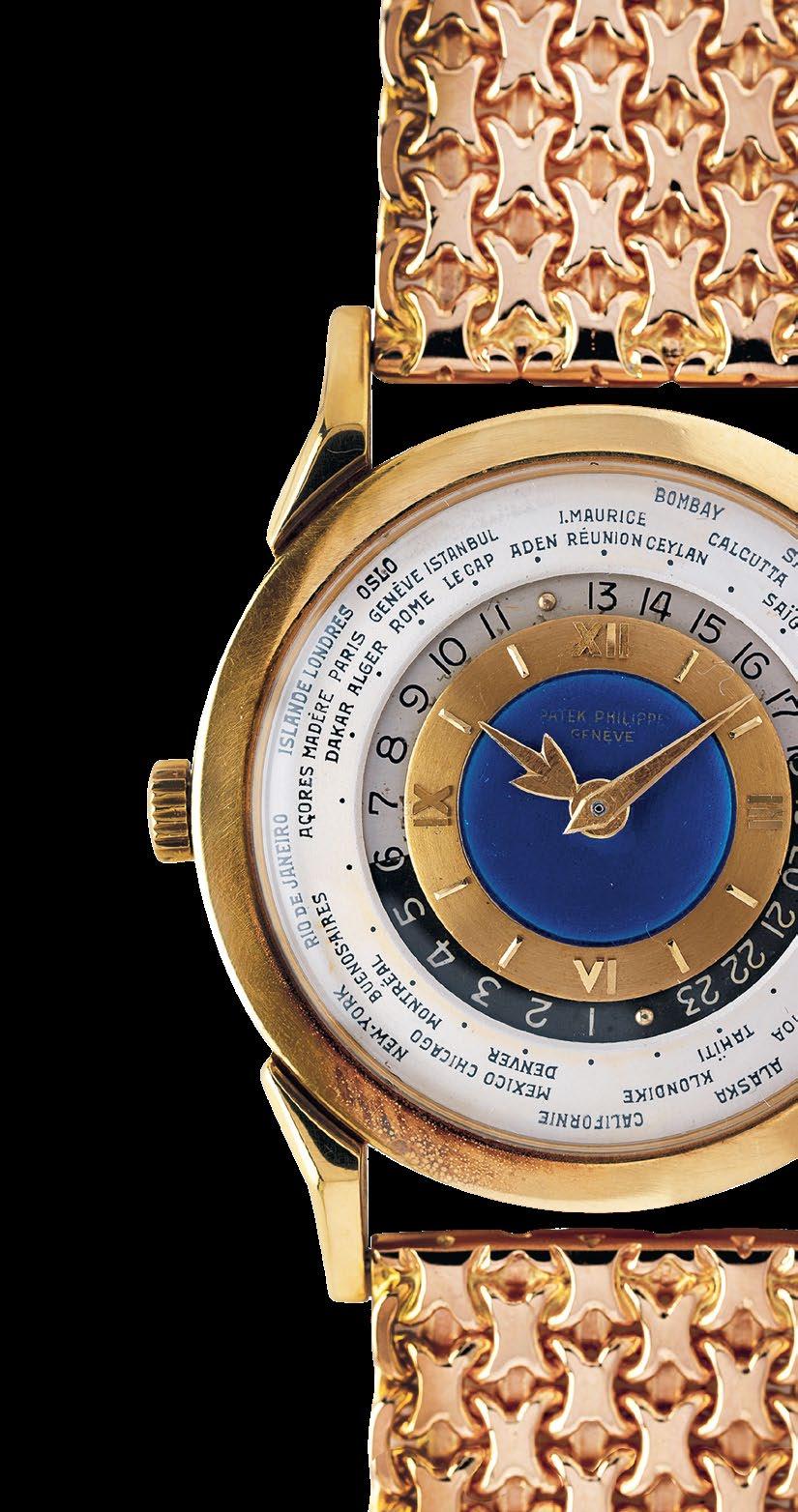
Sandro Fratini cannot be clearer in describing what it means for him to own a watch. He’s one of the world’s most important collectors, sorry... lovers, as well as great connoisseur of the subject. A former textile entrepreneur and now a hotelier, he has a vast collection, even if he has no idea how big it is or the total worth: “I’ve never counted the watches I own. I’d say around two thousand pieces but I don’t know the exact number or value: after all, love is priceless”. The word love is here once more. A love that, for Fratini, has early roots: “It struck me as a child, at my first communion, when I was given a watch by a relative, a mixed-metal Longines not worth that much. But its wheel train ignited a spark, just like love at first sight. It was the first encounter with a watch, which was followed by others mainly thanks to my grandmother who bought them for me: simple watches but for me beautiful, the most beautiful I had in my life”.
So, how long has this love lasted?
For about sixty years, during which there have been no ups and downs but only highs. At the beginning there was the enthusiasm to find the watches in an adventurous way and this gave me immense satisfaction. Then, with the advent of the Internet, the way of looking for them changed, fewer and fewer discoveries are made: nowadays there are rather rare.
Can you give an example of such “adventures”?
I was in Havana, I don’t remember the year, and
I had been told that a lady had a chronograph she wanted to sell; we didn’t know if it was gold, steel, what brand... nothing. The watch had belonged to her husband, shot under Fidel Castro’s regime; well, when I visited the lady, she got a biscuit tin and took out the timepiece: it was a Patek Philippe with round buttons in pink gold with pink dial. A genuine shock: I was so excited I gave her twice the asking price. I look back on that day with great pleasure, because it’s those moments that get the heart racing. That’s what I’m mainly referring to when I talk about love story.
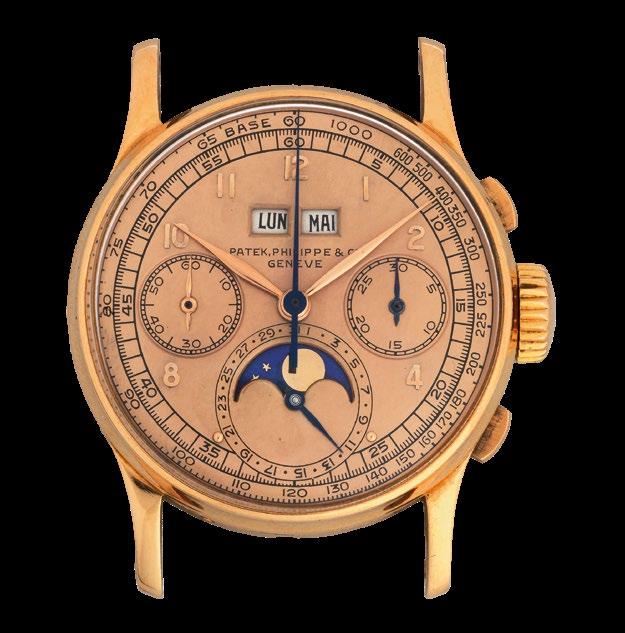
Who are your lovers?
I’ve always gone after what I liked, Rolex, Patek Philippe, Vacheron Constantin, Cartier, just to say the first names that come to mind. But also Eberhard, Ulysse Nardin, Universal Genève. These last few were actually just what I could afford and that I was trying to acquire at the start of my story, because I had to watch my spending; they were the hard core of what I was looking for, which I found at really affordable prices.
As with all relationships, have there been any painful break-ups?
Until a few years ago I’d never sold one of my watches, what I did was exchanging them; when I found one of the same model in better condition or with a more attractive dial, I exchanged it. Actually, though, I’ve been selling a few lately, mostly modern watches, from the ’70s onwards.
Is the love passed on?
Yes. My son Giulio also loves watches, especially modern ones.
Did being born and living in Tuscany, in Florence, a land of beauty and watchmaking tradition, give you an extra gear?
I have a strong bond with Tuscany. My family comes from Campi Bisenzio, I’m proud to call myself Tuscan. Everyone sees Switzerland as the home of watchmaking, but Italy has played its part too, as shown by historical evidence and references over the centuries. Some time ago my dear friend Ugo Pancani, professor of mechanical and electronic watchmaking, reminded me that the first literary quotation of a watch appears in the tenth canto of Paradise, in the Divine Comedy. And then, there is one of the world’s most beautiful antique clocks in the counter-façade of Florence Cathedral. Proof that Italians are not onlookers to the watchmakers. And, as far as I know, they are among the most important collectors.

Where in the world have you “been hunting”?
I’ve found them in New York, Miami, Rio de Janeiro, Caracas, Buenos Aires and every watch was a discovery. Often when I heard about a watch in one place, no one could tell me which model or reference; I was told “there is a Rolex”, but until I had it in my hands I did not know if it was a “Stelline” or a normal 6084. As it was with the Patek Philippe in Cuba. For me they had a unique value because I was compelled to take them for their beauty, for what they would give me at that moment, while holding them. I didn’t think that they would reach certain values, I did it out of love.
Is romance still alive when looking for a watch?

I want to think so, because so much would be lost were this romantic aspect of the object taken away: it’s what excites one the most as it’s the result of chance and many factors that lead one to discovering something unexpected. It’s the surprise that gives such tremendous pleasure and satisfaction when one’s hunt can be crowned with success.
What are you wearing today?
The first watch I bought with my own money, when I was eighteen and it cost me 400,000 lire. It’s a gold-plated Rolex with a rather eye-catching brown dial.
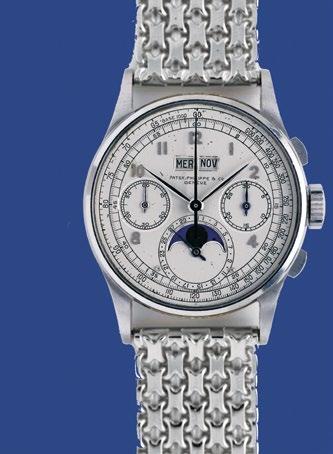

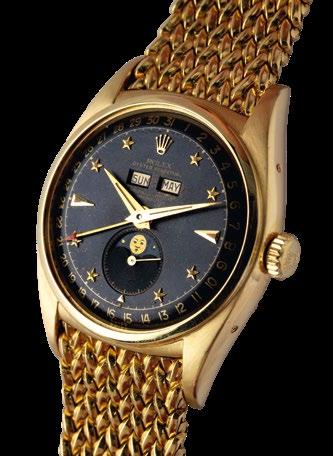

 by Donatella Zappieri
by Donatella Zappieri
A secure online platform and marketplace, The Jewelers Circle aims to help retailers and trade professionals enlarge their network for sourcing and comparing goods.

Launched in 2020, right in the middle of the pandemic, the Jewelers Circle is a secure, trustworthy global online platform and marketplace dedicated to providing dealers, retailers, and trade professionals a safe, yet intuitive, digital space where they can showcase, discover, and trade rare vintage & antique, designer jewelry, loose stones, pearls, watches, and other bespoke collectibles.
In an industry where shaking hands was the most important and confident way to sign your deal, being stuck at home required new ways to approach the business. It became necessary to find a virtual solution that would preserve the flow of information, and maintain the relationship between dealers and clients.
Developed for the trade by the trade, The Jewelers Circle aims to help its dealers reach new clients and to help retailers and other trade professionals enlarge their network for sourcing and comparing goods. Although traveling and tradeshows are slowly coming back, this platform enables transactions and connections 24/7 all throughout the year; therefore, acting as a complementing supplement to the physical trade shows. The platform utilizes proprietary technology designed with the direct input of the founders of the newly formed International Antique Jewelry Association (IAJA) to ensure easy navigation and an overall seamless experience. The Jewelers Circle platform is only open to trade professionals and designed to connect exhibitors and retailers and to expand the traditional wholesale business model to fit the needs of our new world.
Marianne Fisher, fifth-generation, owner and principal of Paul Fisher Jewelry, a family-operated business originating in Vienna, Austria, in 1850, is among the founding members of The Jewelers Circle and acts as the Managing Director. “Trade shows have long been a vital source in sustaining our industry” says Marianne “As members of the jewelry trade ourselves, we understand the significance of these events to our business, and, more than ever, the need to find new ways of connecting. Our platform follows the model of the traditional trade show, and takes it to the next level by offering tools available yearround right at the user’s fingertips”. Today, The Jewelers Circle has become the leading destination for professionals to source rare and exquisite jewelry and gems.
The core platform functions include:
• Browse thousands of listings with powerful filters and search capabilities;
• Receive custom alerts when desired items are newly listed;
• Connect with hundreds of top verified dealers from across the world;
• Post “calls” (messages) for specific products
to preferred dealers or the whole network;
• Strengthen online presence with a digital storefront;
• Create Shared Galleries to save products and to share as virtual memos with private clients through a secure link.
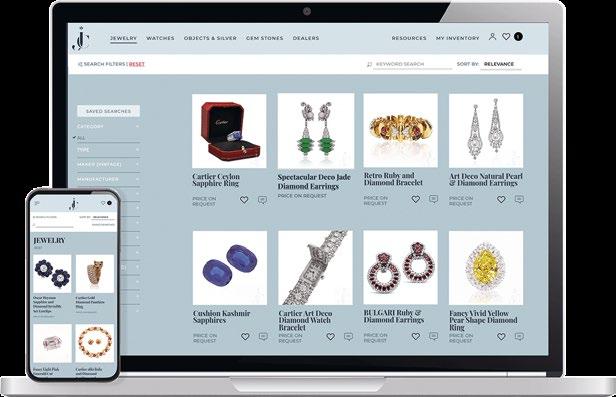
During pandemic, every 4-5 weeks, the platform was hosting a 4-day online trade show where retailers and trade professionals were invited to engage with exhibitors. Exhibitors were showcasing rare finds, new products and collections during these shows. Visitors could browse thousands of listings through powerful sorting filters and searches, and then save items to a personal product “watchlist”. Nowadays these virtual shows are not anymore on as business is back to shows and personal meetings.
To keep the platform secure and within the trade, potential subscribers must submit an application to access the site. Application approvals will be considered upon proof of business, identity, and
three trade references. Subscriptions are only available to trade professionals; the general public cannot subscribe, view, or access the platform. In order to further raise the bar of helping potential purchaser confidence, the Jewelers Circle has further developed into creating an independent expertise service in Paris, the “IAJA expertise”. Six eminent experts, including curators, archivists and former directors of the world’s greatest jewelry brands make up the force behind the IAJA Expertise which declare that a piece is original. The expert team is composed by Amanda Triossi, Annemarie V. Sandecki, Angela Hedges, Olivier Bachet, Bernhard Berger and Catherine Cariou. Marianne Fisher also adds that “We are committed to driving innovation and serving the needs of the global jewelry industry. The Jewelers Circle looks forward to launching additional platform features, more relationship driving opportunities, and relevant education in the near future”.
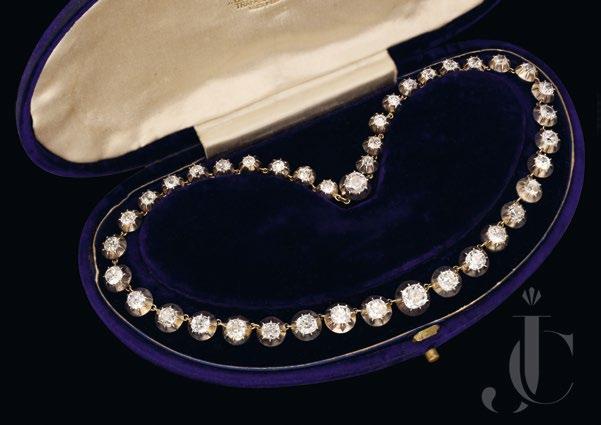

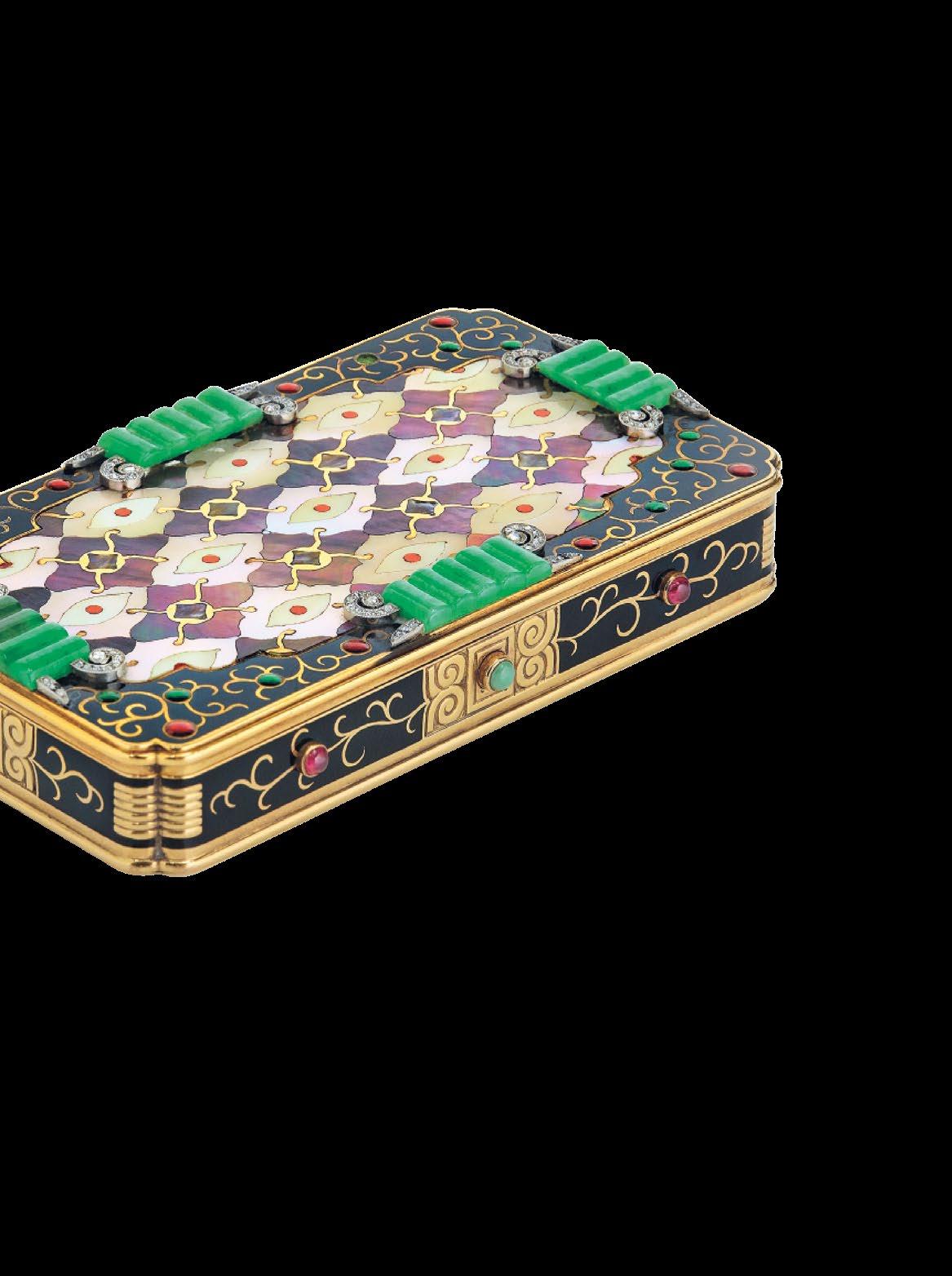
 by Claudia Carletti
by Claudia Carletti
The expression ‘Art Deco’ evokes images of tasseltrimmed flapper dresses and hedonistic Great Gatsby-styled parties synonymous with the glamour of the 1920s and 1930s. However, Art Deco can be defined as an all-embracing design movement rather than a specific period, which questioned traditional Victorian and Edwardian conventions in favour of something projected into the future.
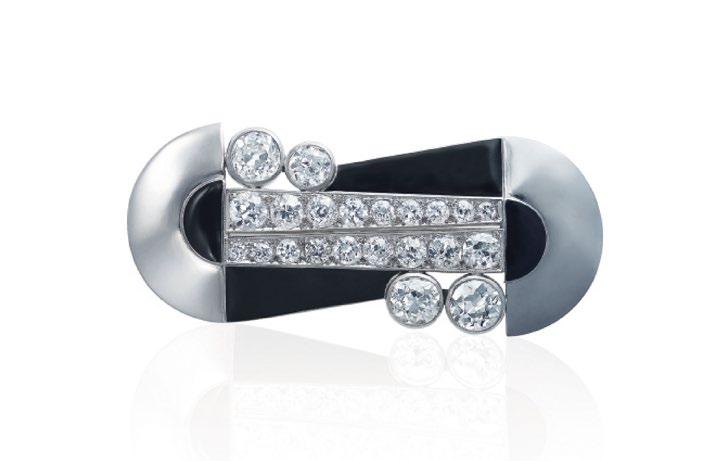
The end of the First World War announced a rebellion against the profusions of the Edwardian and Belle Epoque eras. The First World War had devastated European cultural hubs, women filled industrial jobs left vacant by men who had gone to the front, and the nobility’s wealth had been severely eroded. In this rapidly changing climate, the Art Deco design movement emerged.
Art Deco was not actually used to describe the movement until many years after it ended. However, the many and varied styles involved had a common thread which was not necessarily visible to the artists who were producing the works at the time they were working.
Many arts and crafts can be considered Art Deco: from fashion, furniture, architecture and home accessories to cars, theatres and, perhaps most notably, jewellery. Great examples of Art Deco architecture include, for example, Miami’s South Beach – a veritable Art Deco architectural treasure – and the Empire State Building in New York City.
Underlying the design style across all these disciplines was an acute awareness of modernity; the world was evolving rapidly, and the disciples of Art Deco were eager to celebrate everything new, futuristic and international. To be labelled as ‘Art Deco’ between the late 1920s and 1930s meant to be considered luxurious, glamorous and optimistic about a future filled with innovations in transport, machinery and accomplishments of human engineering.
Today one accepts that Art Deco officially started with the “Exposition Internationale des Arts Décoratifs et Industriels Modernes” in Paris in 1925. The world had been without war for more than six years, and it bolstered a new era of artisans, visionaries and decision-makers.
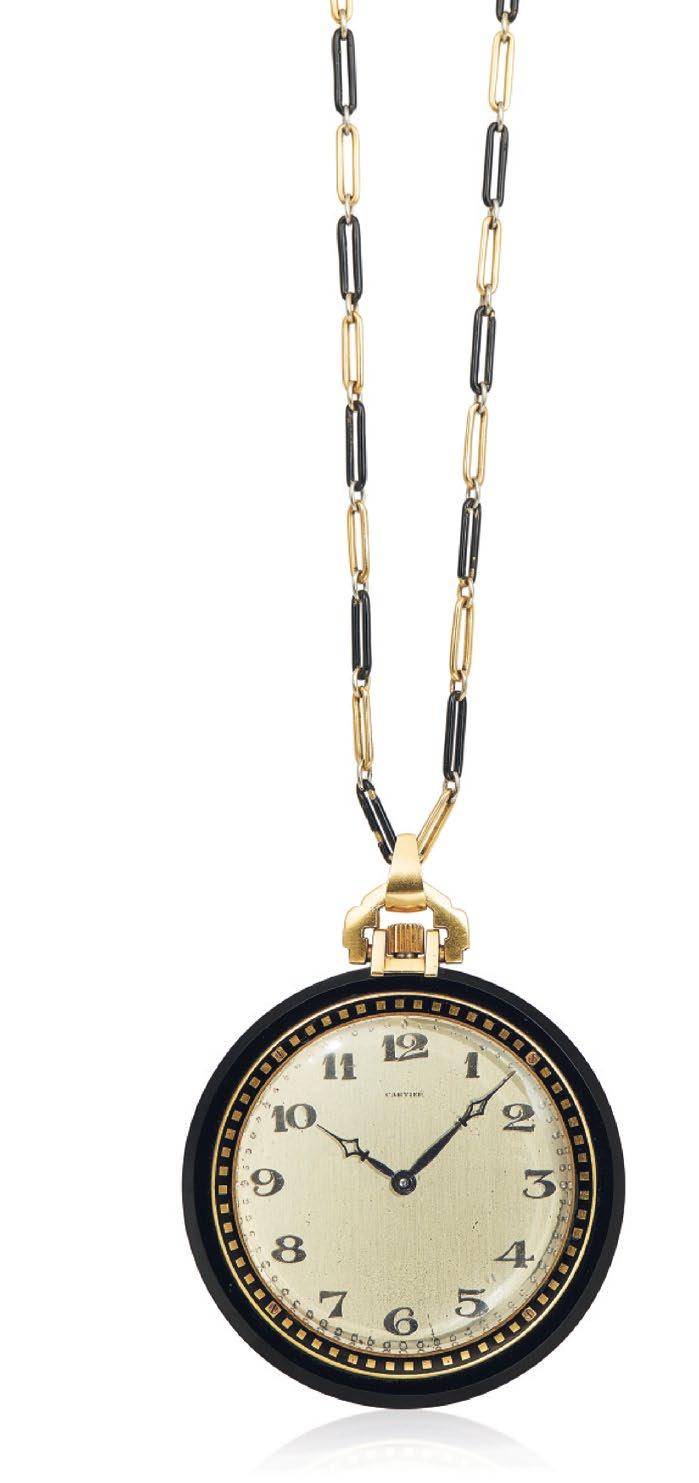
Art Deco reacted to the previous Art Nouveau style’s inconsistent, almost mystical aesthetics. Instead, it took inspiration from Cubism, with geometric shapes and bold colour combinations paired with industrial themes and contemporary crafting techniques.
It wasn’t unusual to see abstract and rigid forms alongside designs inspired by Ancient Egypt
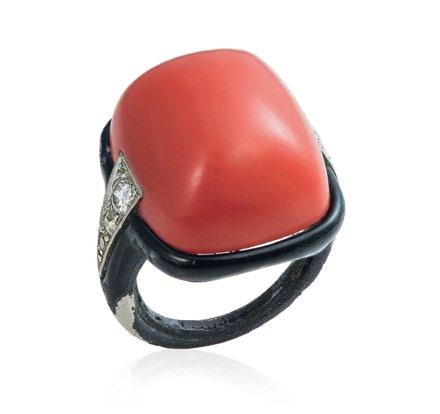
and the Far East, especially as advances in transport and archaeological excavations made the world feel smaller and more accessible. For example, in 1922, King Tutankhamun’s tomb was discovered for the first time, sparking an obsession with Ancient Egyptian motifs for Art Deco designers.
Despite the Great Depression of 1929, the world’s wealthy could still afford to invest in Art Deco fine jewellery from Cartier, Van Cleef & Arpels, Jean Fouquet, Jeanne Bovin, Boucheron, Chaumet and Lalique. Specific design themes emerged, from monochromatic combinations of ebony, ivory, onyx and rock crystal to boldly proportioned cabochons of jade, coral, rubies and emeralds.
The inter-war period also saw significant advances in diamond cutting; geometric baguette and emerald cuts were prominent, as were pave-set wraps of diamonds that created sparkling surfaces. Van Cleef & Arpels, for example, patented its ‘mystery’ diamond-setting style in 1933 at the height of Art Deco.

Art Deco jewellery quickly responded to the
changing fashions of the era, allowing women to decorate bare arms and add drama to long, drop-waisted shift dresses.
In the late 1920s, bracelet designs centred on narrow geometric links set with diamonds and coloured gemstones in a repeating pattern. Later, cuff designs in gold, silver and platinum emerged that told stories of ancient cultures through symbols, carved gemstones and enamel. As the scale of jewellery increased into the 1930s, so did the amount worn. Layers of bracelets on the wrist and wrapped around the upper arm reflected the era’s desire for fun, as did the revival of charm bracelets with elements that jingled as the wearer moved.
Cigarette cases and vanity boxes also skyrocketed in popularity, with many fine jewellery houses using lacquer, enamel and carved gemstones, such as carnelian, lapis lazuli and turquoise, to create scenes inspired by the cultures of China, Japan and India.
Long sautoirs are perhaps the most iconic jewellery style from the 1920s and 1930s, often adorned with a beaded tassel or oversized

geometric pendant. Strands of carved beads and pearls were knotted around the neck or left to flow down the front and back of dresses to add drama. In contrast, unique bib necklaces offered pops of colour (emeralds, rubies and sapphires) in diamond-set, geometric designs that framed the face, often accompanied by clip earrings.
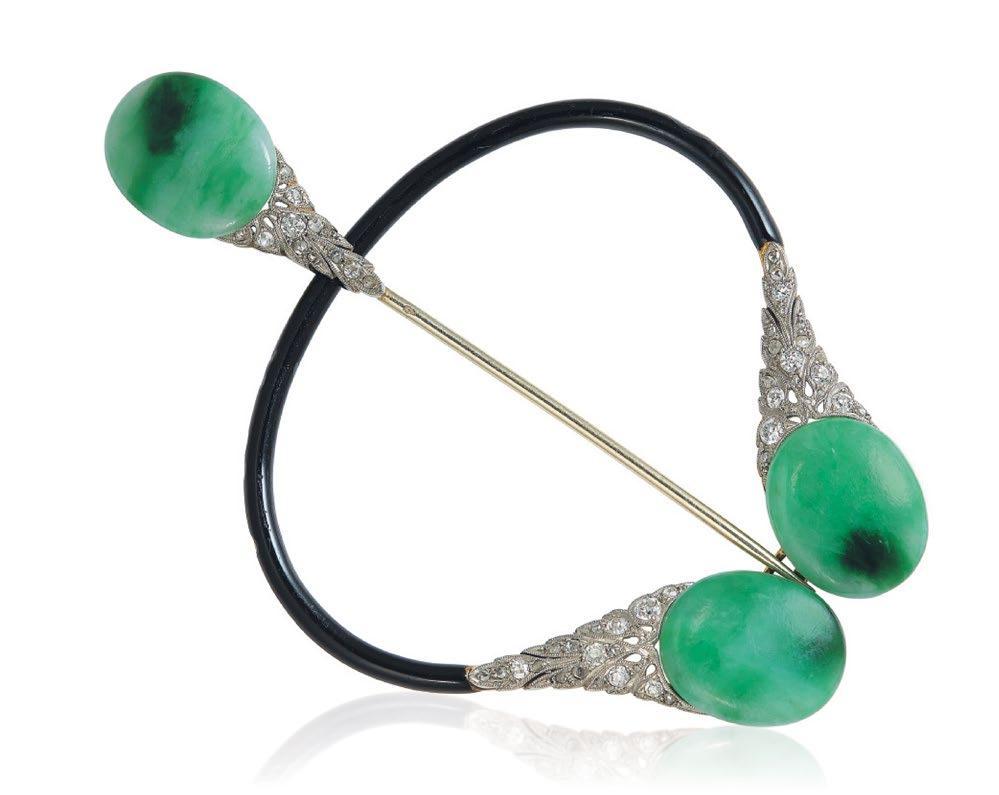
Art Deco jewellery of the late 1920s and 1930s is both unique to the Art Deco design aesthetics and unique to the time in which it was created. As a result, each surviving creation is a piece of art history, design history and social history, all wrapped up in diamonds, gemstones and precious metals.
All this makes Art Deco jewels timeless, which is why they are coveted by collectors worldwide today.


 Art Deco sapphire, diamond, enamel ring, by Raymond Templier.
Art Deco diamond and onyx ring, by Georges Fouquet.
Art Deco diamond ring.
Art Deco sapphire, diamond, enamel ring, by Raymond Templier.
Art Deco diamond and onyx ring, by Georges Fouquet.
Art Deco diamond ring.
Owner and creative soul of his eponymous brand, in this book published by Giunti Editore, Giovanni Raspini speaks of his passion for the world of precious objects and explains his vision of jewellery art. On Jewels was written in collaboration with Francesco Maria Rossi and it is a professional reading on the world of jewellery while at the same time being accessible to simple enthusiasts. The author touches on issues such as design, craftsmanship, alloys, stones, and the market alongside the history and production of the great fashion houses, enriching the narrative with personal anecdotes and memories, his most beautiful creations, and his favourite jewellers. According to Giovanni Raspini,“in contemporary jewellery, precious and non-precious are now categories of the past: what matters is the brand’s identity, the concept and the jewellery designer’s creative project. Compared to the past, ‘fashion jewellery’ now thrives on new but equally important values, both from aesthetic and commercial points of view”.
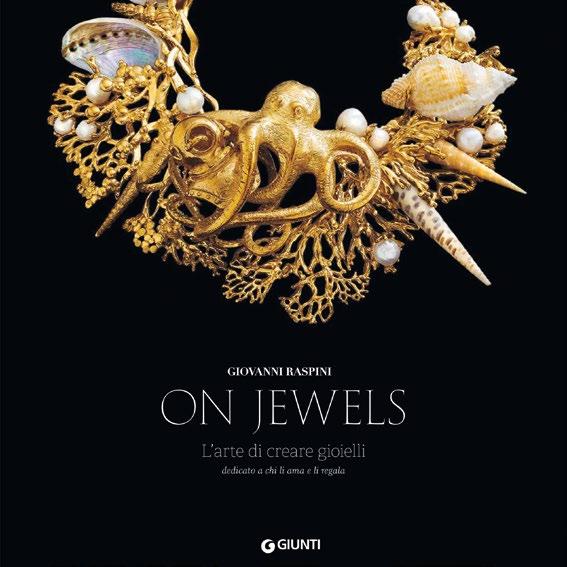
Produced by Skira in collaboration with the Center for Creative Photography and the Richard Avedon Foundation, this beautiful book celebrates the genius of Richard Avedon. It is a comprehensive tribute to the celebrated fashion and portrait photographer, highlighting his sensitive eye and innovative edge through over one hundred photographs that trace the costume, culture and history of the twentieth century.
A collaborator of legendary magazines such as Harper’s Bazaar, Vogue and The New Yorker, Avedon has disrupted fashion photography since 1945 by doing away with static poses and instead putting models in real-life settings. His shots featured the most famous models of his time, such as Verushka, Dovima or Linda Evangelista but also, and not infrequently, prominent personalities in cultural scene and politicians of the last century, such as Andy Warhol, Truman Capote, Michelangelo Antonioni, Humphrey Bogart and Marilyn Monroe, Jimmy Carter, George Bush, Malcolm X and Kofi Annan, Bob Dylan, John Lennon and Paul McCartney. The exhibition “Richard Avedon. Relationships” will remain open until 29 January 2023 at the Palazzo Reale in Milan.


Opening page_ Anniversary100: white
with
and
of synthetic material. MONCLER COLLECTION. This page_ Rose gold earrings with pink sapphires, emerald and white diamonds. Rose gold double ring with pink sapphires, white diamonds and emerald. Rose gold necklace with emeralds and pink sapphires. Essenza collection. GISMONDI 1754. Alpaca and mohair jacket. MONCLER COLLECTION. Mascherina sunglasses. MONCLER LUNETTES. Page alongside_ Harem Garden collection: white, rose and yellow gold necklace, white, yellow, brown, rustic and black diamonds, mixed stones, fresh water pearls. White, rose and yellow gold ring, white and black diamonds, mixed stones, fresh water pearls. ALESSIO BOSCHI. Alpaca and Mohair dress and hat. 2 MONCLER 1952 WOMAN. Tricot muffs. MONCLER COLLECTION.
 gold band ring
diamonds
infinitive element design. White gold earrings with diamond pavé. ANTONINI MILANO. Wool turtleneck and hat made
gold band ring
diamonds
infinitive element design. White gold earrings with diamond pavé. ANTONINI MILANO. Wool turtleneck and hat made
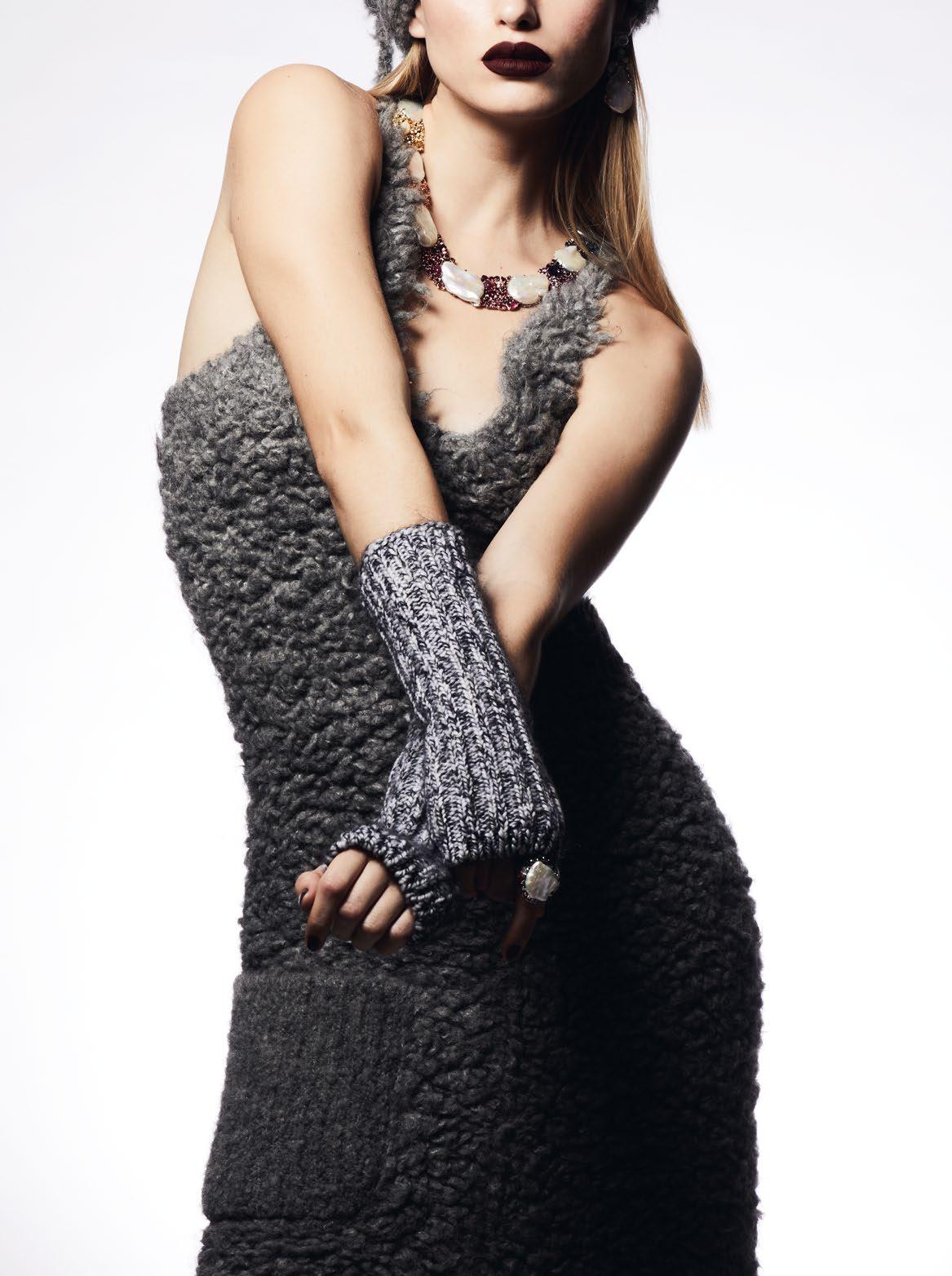
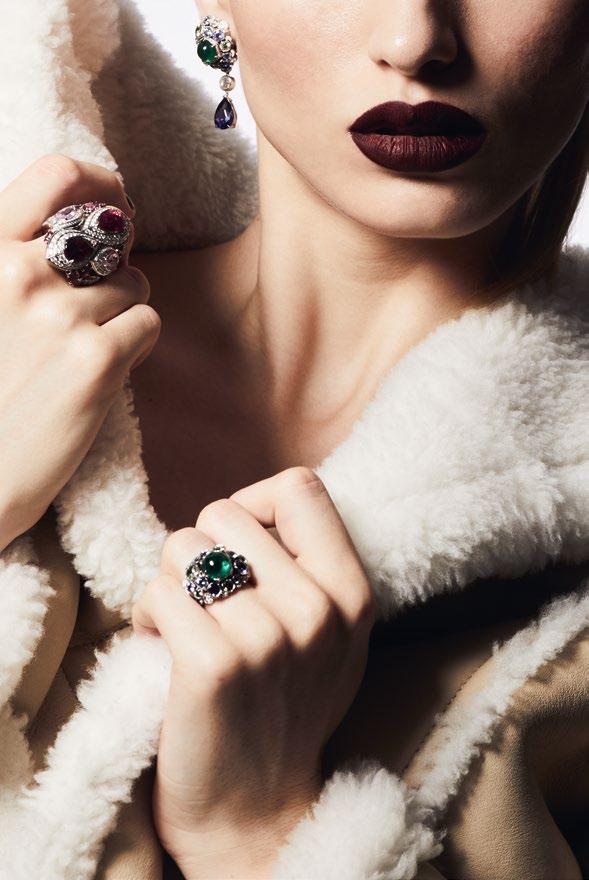 This page_Hexagon earrings and Cabochon ring with emeralds, sapphires and diamonds. Peacock Eyes ring, pear shaped Brazilian rubellites, pink sapphires, rubies, diamonds. RUBEUS MILANO. Nylon and synthetic material jacket. MONCLER COLLECTION. Page alongside_Gold ring with diamonds and kunzite; gold ring with diamonds, sapphire, ruby and Australian pearl. HELEN YARMAK. Wool sweater. 2 MONCLER 1952 WOMAN. Synthetic material hat. MONCLER COLLECTION.
This page_Hexagon earrings and Cabochon ring with emeralds, sapphires and diamonds. Peacock Eyes ring, pear shaped Brazilian rubellites, pink sapphires, rubies, diamonds. RUBEUS MILANO. Nylon and synthetic material jacket. MONCLER COLLECTION. Page alongside_Gold ring with diamonds and kunzite; gold ring with diamonds, sapphire, ruby and Australian pearl. HELEN YARMAK. Wool sweater. 2 MONCLER 1952 WOMAN. Synthetic material hat. MONCLER COLLECTION.
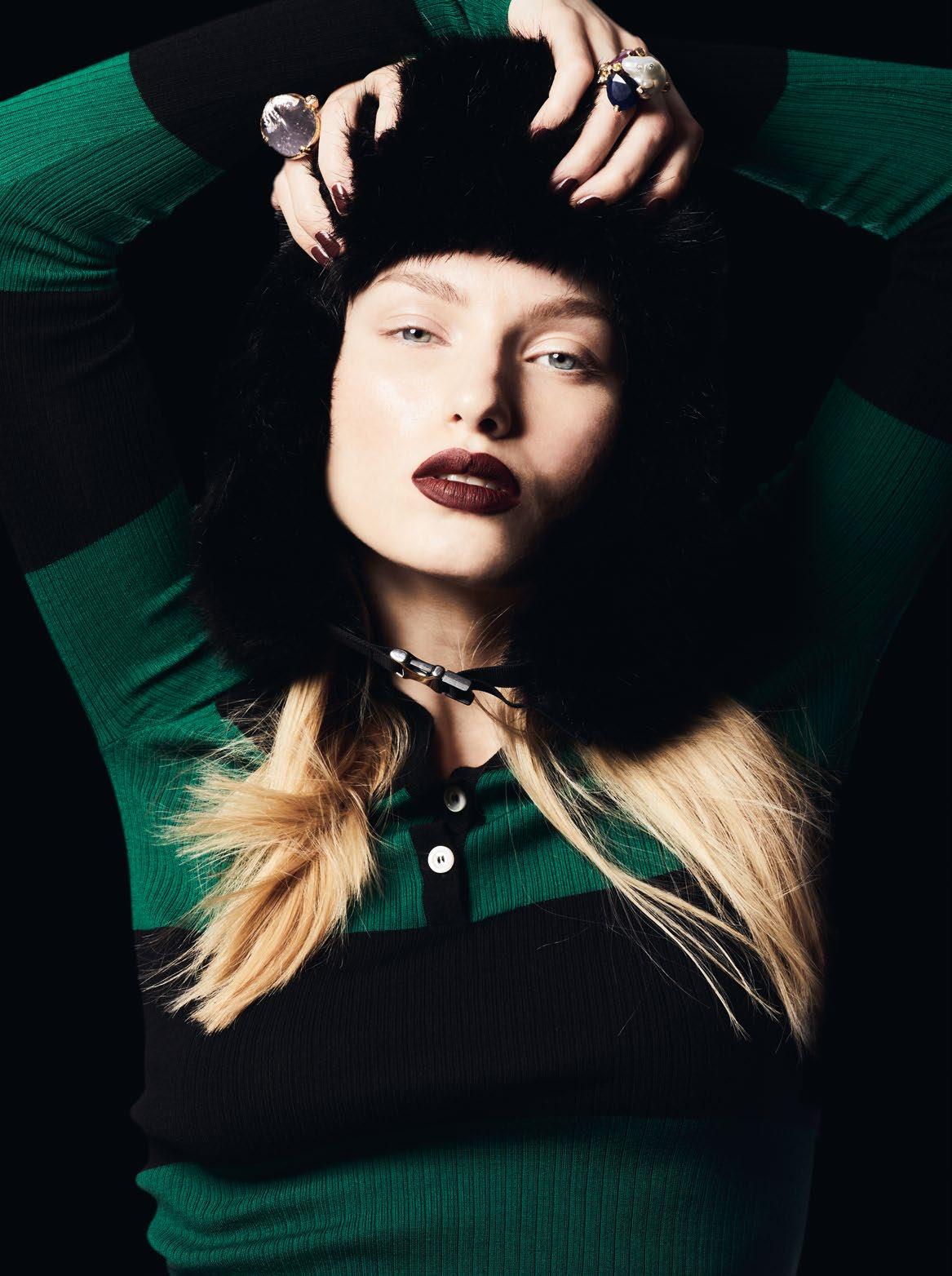

 Page alongside_Earrings, pendants and rings in white gold with central emerald and brilliant cut diamonds. Bogotà collection. CRIERI. Alpaca and mohair jacket. 2 MONCLER 1952 WOMAN. This page_Giardini Segreti: rose gold ring, black diamonds. White gold ring, black and white diamonds. Rose and white gold ring, black and white diamonds. Rose and white gold necklace, black and white diamonds. Aleluià: rose gold ear cuff. PASQUALE BRUNI. Tricot muffs. MONCLER COLLECTION. Jacket in jacquard velvet with floral pattern. 2 MONCLER 1952 WOMAN.
Page alongside_Earrings, pendants and rings in white gold with central emerald and brilliant cut diamonds. Bogotà collection. CRIERI. Alpaca and mohair jacket. 2 MONCLER 1952 WOMAN. This page_Giardini Segreti: rose gold ring, black diamonds. White gold ring, black and white diamonds. Rose and white gold ring, black and white diamonds. Rose and white gold necklace, black and white diamonds. Aleluià: rose gold ear cuff. PASQUALE BRUNI. Tricot muffs. MONCLER COLLECTION. Jacket in jacquard velvet with floral pattern. 2 MONCLER 1952 WOMAN.
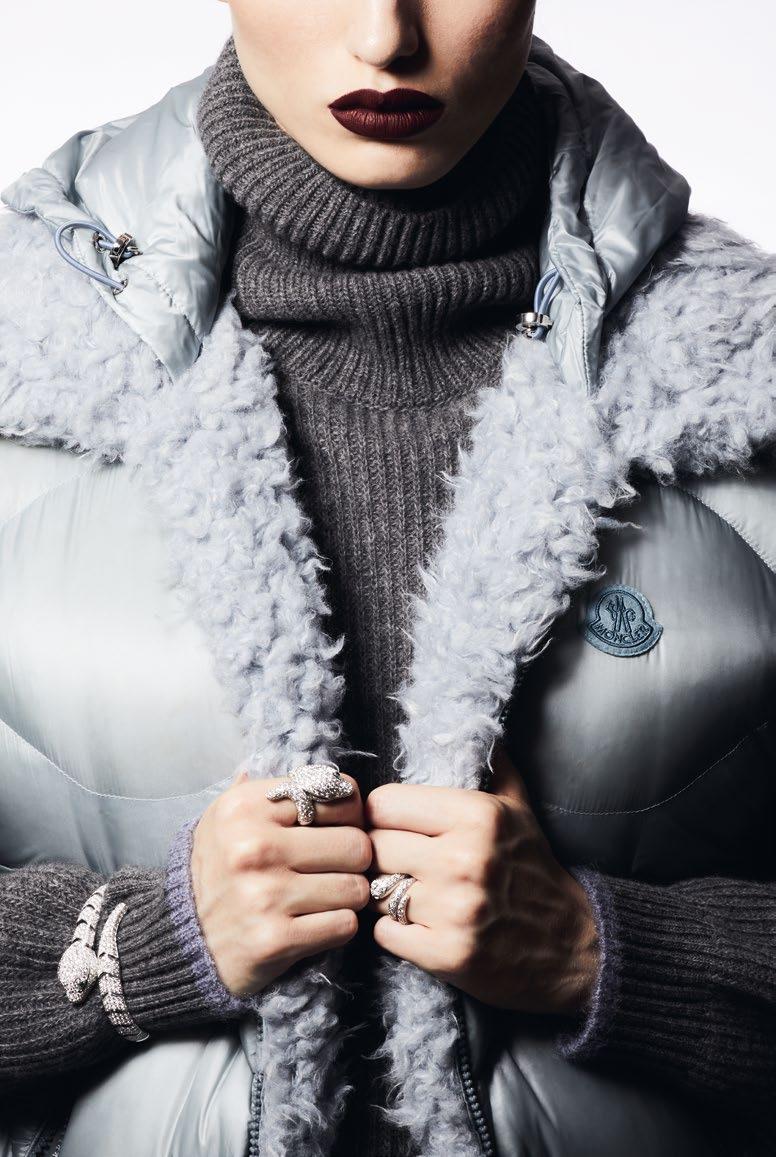 This page_White gold rings with brilliant cut diamonds; white gold bracelet with round cut emeralds and brilliant cut diamonds. Animalia collection. LEO PIZZO. Page alongside_Necklace and earrings in white and yellow gold with yellow and black diamonds. Giulia Collection. MASSIMO RAITERI. Down vest in nylon satin, trousers in Alpaca and Mohair wool. 2 MONCLER 1952 WOMAN. Synthetic material gloves. MONCLER COLLECTION.
This page_White gold rings with brilliant cut diamonds; white gold bracelet with round cut emeralds and brilliant cut diamonds. Animalia collection. LEO PIZZO. Page alongside_Necklace and earrings in white and yellow gold with yellow and black diamonds. Giulia Collection. MASSIMO RAITERI. Down vest in nylon satin, trousers in Alpaca and Mohair wool. 2 MONCLER 1952 WOMAN. Synthetic material gloves. MONCLER COLLECTION.
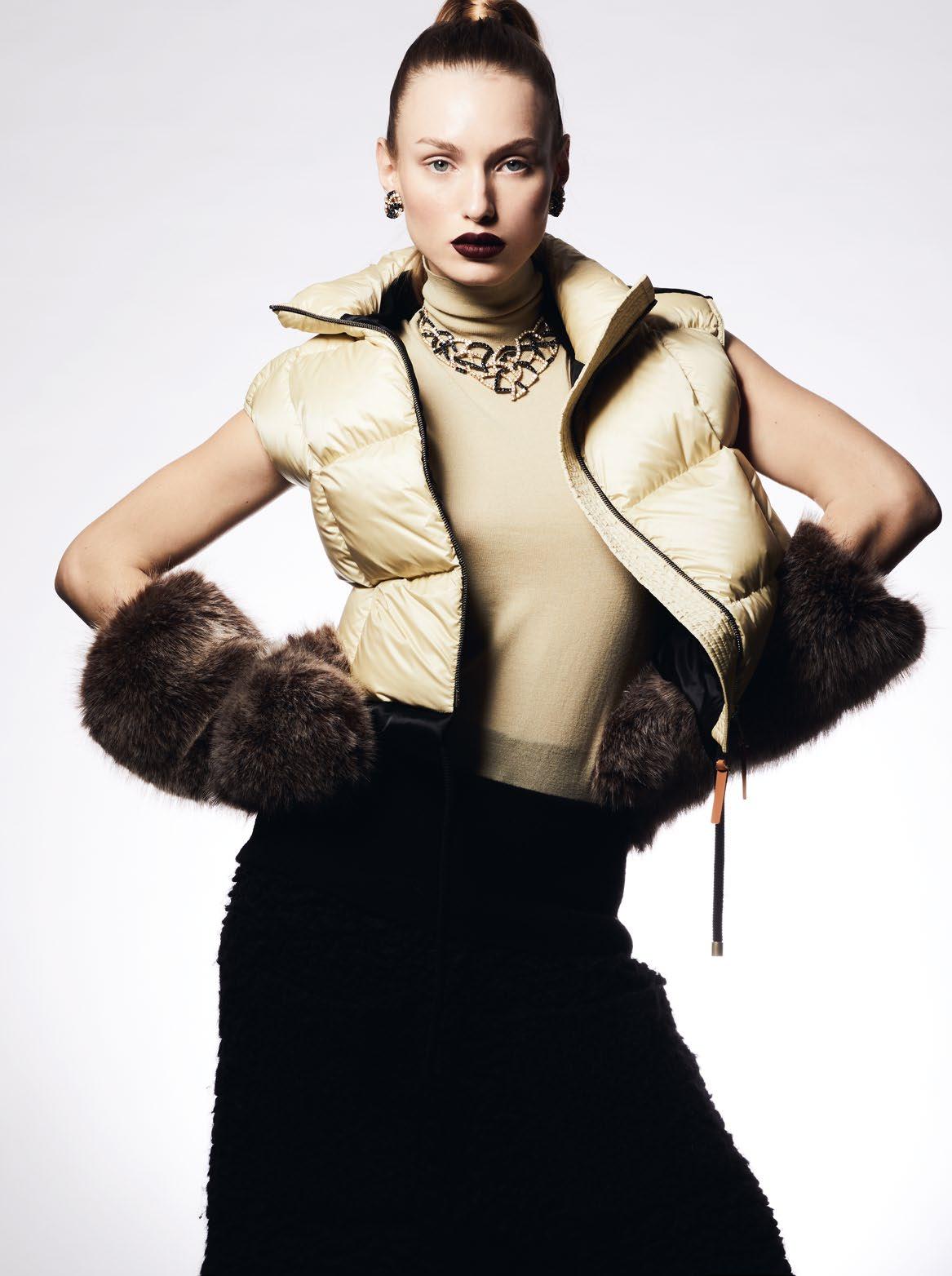

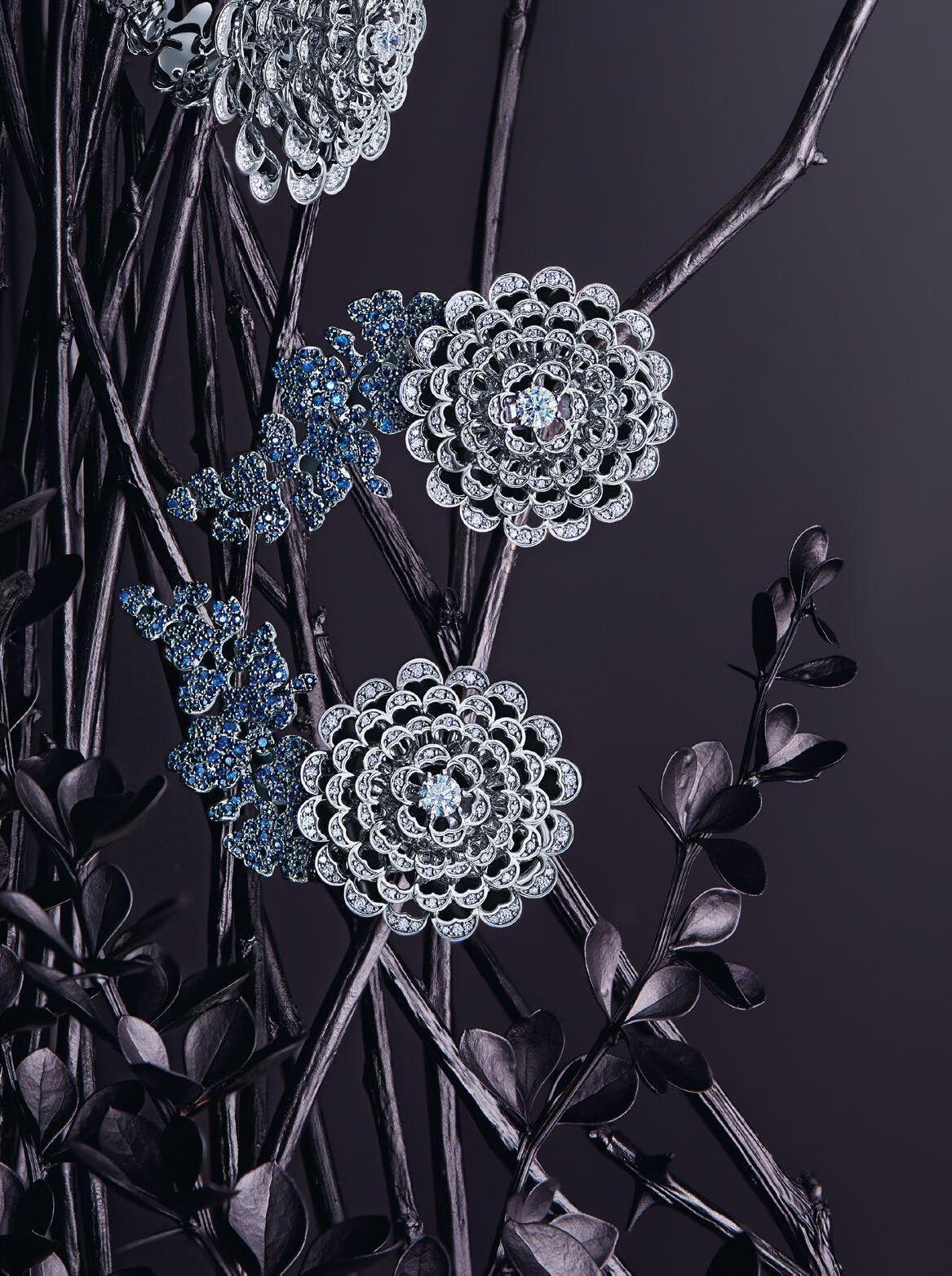
The Milano Jewelry Week, at its second edition, took place last October from 20th to 23rd and made the city center shine with jewelry creations by over 750 exhibitors coming from 40 different countries.

The MJW was inaugurated with the theme cocktail party “Crown Your Icon” organized together with Sotheby’s at the auction house Milanese headquarter, in the majestic building of Palazzo Serbelloni. The first appointment in the rich calendar, which counted more than
A one-of-its-kind event founded by Prodes Italia, that highlighted Milan, after fashion and Sponsored by the Municipality of Milan, Club degli Orafi and C.N.A. Federmoda, the event celebrated the cultural and artistic value, but also developed new business opportunities, by attracting an international audience of jewelry operators, collectors, media, influencers and From Porta Venezia to Brera, the Duomo to the 5 Vie, passing through Montenapoleone and the whole Quadrilatero della Moda, the Milano Jewelry Week created a fil rouge - or, better, a gold thread - between tradition and innovation of the fascinating jewelry universe. Among the 5 main exhibitions hosted in 4 key locations,


each with its own specific focus and target, it was possible to enjoy immersive events such as workshops, exhibitions, talks, live performances and cocktail parties throughout the city center. Historic workshops, goldsmith workshops, boutiques, academies and brand showrooms have opened their doors and organized events, breaking down barriers and allowing the international public to discover all the facets of such a fascinating yet unknown world.

The Scavia boutique, in the heart of the Quadrilatero, was the setting for the “Sublime Beauty” event, during which Fulvio and Alessandro Scavia designed and donated the jewelry sketches inspired by the visitors themselves, demonstrating their creativity and savoir-faire of master jewelers dedicated to excellence for generations. A few steps away, in Montenapoleone, Ippolita designer welcomed visitors to the showroom inaugurated this year, the first opened in Italy by the international brand. Antonini Milano, on the other hand, celebrated the jewelry event with a fancy cocktail party animated with sparkling wine offered by the sponsor of the Milano Jewelry Week, Valdo.
Jewelry also has a glamorous side, which was perfectly represented through the workshop at the Pepper Chocolate boutique in Brera: visitors were able to participate in Armocromia sessions with a consultant, who identified and suggested the most suitable clothes and above all the jewels to enhance their look.
Furthermore, Milano Jewelry Week was also the perfect occasion to experience the jewel creation process in person, thanks to the numerous workshops organized, such as the one hosted by Cosmonique Gioielli, which allowed participants to try out the ancient technique of lost wax casting, or those of Scuola Galdus, partner of MJW. Galdus has proposed a rich calendar of talks and events dedicated to relevant aspects and techniques: from miniatures and enamels to filigree, but also engraving, restoration and gemology, valuation and history of jewelry. Galdus headquarter hosted the event dedicated to students of international jewelry academies and school, The Talent show. A wide scenario addressed to the youngest generation, who could explore and approach the field. A relevant and valuable initiative, especially considering that nowadays the jewelry industry lacks new professionals and goldsmiths in order to manage the increasing requests of precious items.
Another key exhibition has been The Jewelry HUB. The event was dedicated to both B2B and B2C trade, and it was hosted in the spaces of La Pelota, in Brera district, with a presence of over 110 international brands of High, Fine, Fashion and Vintage Jewelry. The initiative was born with the aim of highlighting companies among the public, operators and media, creating new business connections. The Jewelry HUB was a success and fascinated visitors with the presence of curated variety of players from more than 30 different countries: from Australia to Mexico, from the Middle East to the USA passing through Northern Europe. Among the participants, there were worldwide recognized names of the high jewelry field such as Leo Pizzo, Alessio Boschi, Rubeus Milano but also brands that approached the Italian market for the first time like Metal Couture, Wicken Jewellery and CMR Diamonds. Captivating designs, accurate craftsmanship, high quality gemstones and diamonds together with deep meanings were the key factors of one-ofa-kind creations and collections exhibited. Therefore, the public and trade visitors had the opportunity to discover niche brands and emerging labels, learn insights and talk directly with the designers who let them perceive the high emotional value of each jewelry piece.

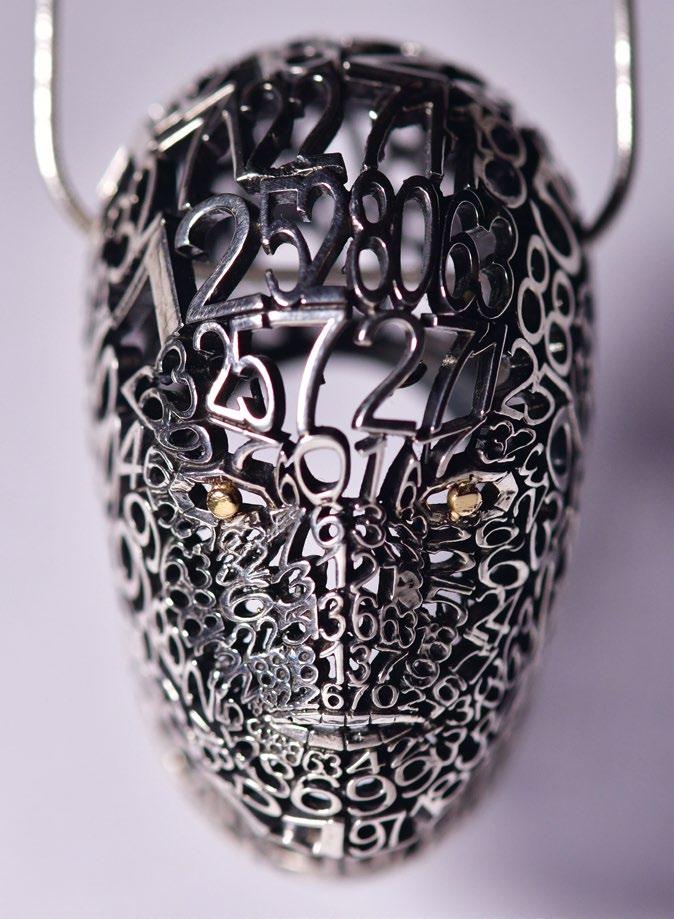

Visitors could also admire - and buy - vintage jewels thanks to the refined selection of companies present: Rheinfrank Antique Jewellery Berlin, I Santi Medici, Gold & Gifts and Micol. An additional value to the Jewelry HUB, the rich calendar of talks led by notable players as Gübelin, Christie’s and Assogemme, Assocoral, Istituto Gemmologico Italiano, ANTICO, which partnered the whole Milano Jewelry Week initiative giving their highlevel cultural contribution. The talk program included insights on trends and forecasts on the jewelry world along with an introduction on watches as a preview of the MJW 2023 edition. The proposals received the applause of the visitors, with a constant full house for each intervention.
The artistic jewelry world has been showcased through the consolidated Artistar Jewels project. In fact, at its eighth edition, the project became an international reference event dedicated to body ornaments and artistic jewelry. In the rooms of the splendid Palazzo Bovara in Porta Venezia, the creations of 230 international artists and designers were protagonists, who have given shape to the suggestions deriving from the contamination between sectors (above all history, art and architecture) and from the expression of emotional states, particularly significant after the years just passed. Among the participants, Andreia Gabriela Popescu, designer, manufacturer, and also teacher of contemporary jewelry. Andreia creates outstanding pieces, characterized by daring volumes and new surface finishes; their apparent wearability difficulty turns out to be complex and atypical of jewels that become a concrete expression of art and emotion.

Emotion and art also take inspiration from the beauty of nature, Sergey Izmestiev - Russian jewelry designer - gives life to masterpieces which remind the Japanese Garden. His jewels are distinguished by complexity and detail, like the “Wind in the garden. Sakura” brooch: every petal conveys the brevity of flowering and symbolizes the fragility of nature, making you appreciate the moment, because the following time sakuras bloom would be only once in a year. The concept of quality time is also strongly expressed in Matteo Vitali’s creations. The Babilonia collection is the pure reflection of how we are currently used to spending most of our time to fulfill the duties and demands of today’s world. Conditions that often erode valuable individual differences, flattening the contours of the self and, consequently translate into the skin as entropically placed numbers, transforming us, becoming structural and thereby undermining our own humanity. Other two key exhibitions were the ones held in the prestigious building of Palazzo Giureconsulti, in the very heart of Milano, a
few steps from Duomo: The FaB and Jewelry Drops. The FaB exhibition highlighted the creations of 150 international artists and designers, moved from different inspirations, for example a childhood memory, the power of nature, the extraordinary beauty of the imperfect, and experimentation. Those included in four scenarios – water, earth, fire and air – which were a guiding thread of the visitor’s experiential path and will be celebrated through the special paper catalogue. A common denominator of all creations is the author’s need to tell a story, themes that include bees and their hives and the delicate balance of nature and the effects of climate change like Dana Mihai Jewelry’s creations. Such relevant and actual topics were presented also through the Jewelry Drops exhibition, at the first floor of Palazzo Giureconsulti. There were around 500 Jewels showcased, mainly one-of-a-kind or limited series, made of unusual and, in some cases, recycled materials. Among them Eden Lennox who considers reuse, the upcycling ethos, and the visual aesthetics seated

The little things New York
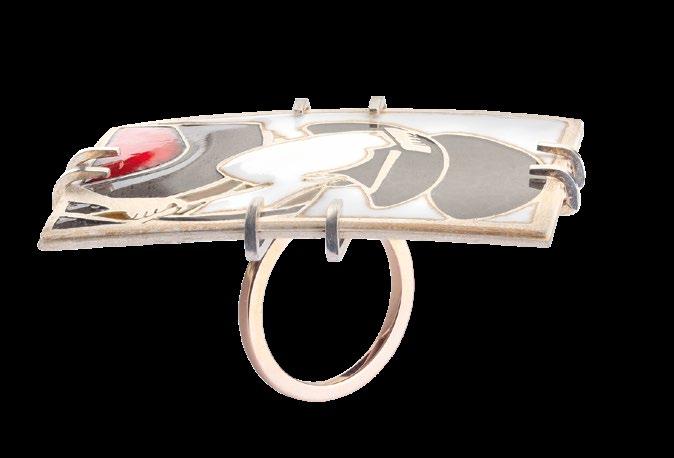
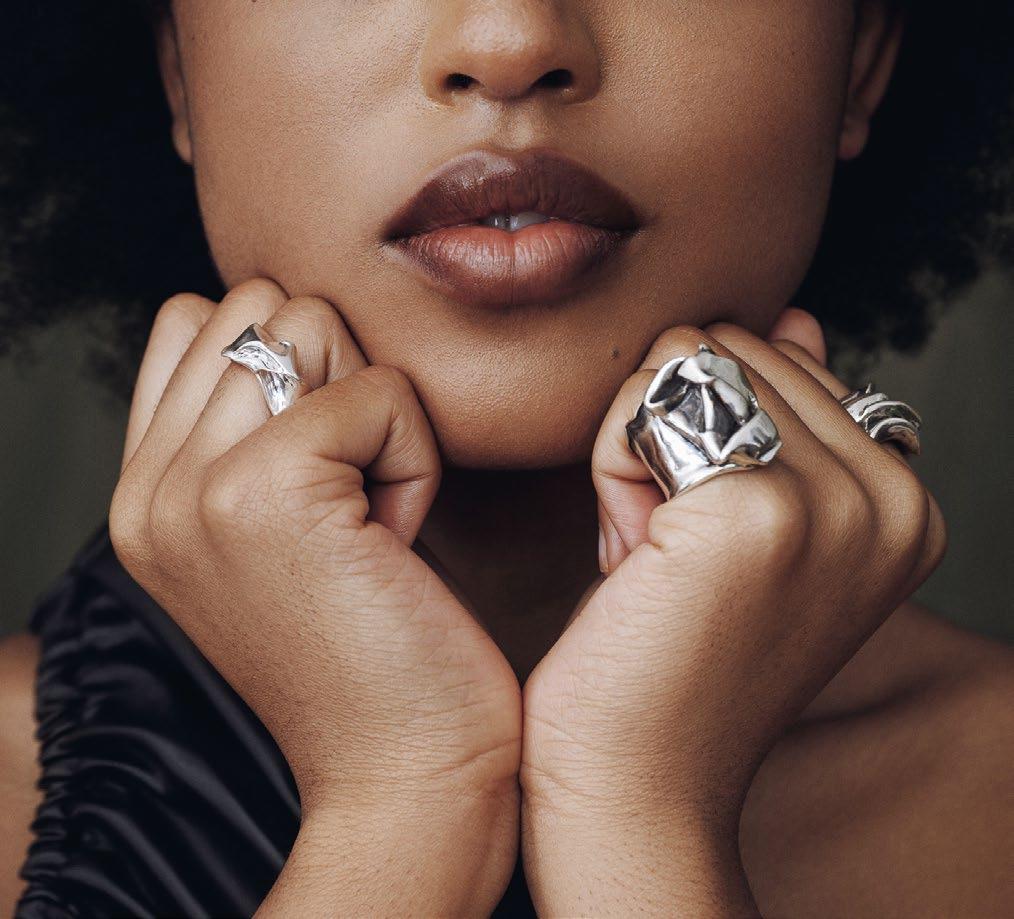
in punk to challenge conventions associated with jewelry objects - via material subversion. In fact the main themes of the exhibition were sustainability, the reference to nature, ethics, the meeting between different sectors and the exchange between tradition and innovation. Jewelry Drops format cut the barriers of distance with its multimedia exhibition with videos that illustrated the stories of the international designers and their fascinating workings.
The MJW Awarding Night took place on Saturday evening at the sumptuous Odeon Theater. A glimmering and sharing moment to celebrate all the Milano Jewelry Week participants, with the presence of 900 attendees and a jury of experts. During the evening the winners of the MJW Awards 2022 were revealed, chosen from among the wide range of talents of the week.
Artistar Jewels, as per tradition, had 3 winners announced by a jury made up of Donatella Zappieri, Guido Solari and Lucia Massei. They had in fact selected the creations of Andreia Gabriela Popescu, Moritz Ganzoni and Sergey Izmestiev.
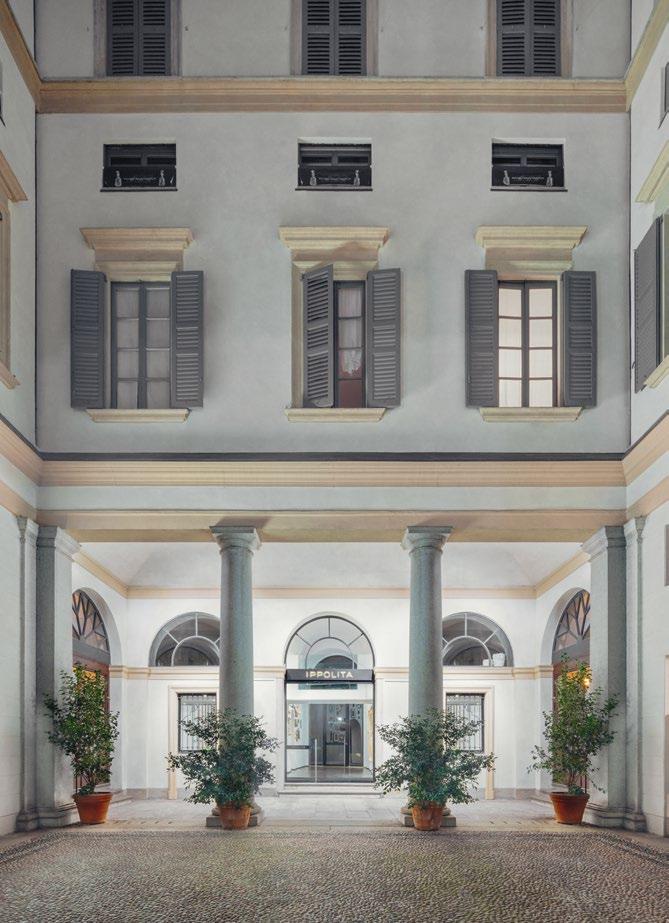
Thanks to a mutual synergy between the Milano Jewelry Week and the Romanian Jewelry Week, every year some of the participants are selected and can exhibit for free in the other week. In this edition 7 winners achieved the Assamblage Award and therefore will be able to take part in the Romanian Jewelry Week 2023. Finally, Artistar Jewels participants also had the opportunity to be included in the international galleries, partner of the MJW: Alice Floriano Gallery, Sculpture to wear Gallery, Esh Gallery and Babs Art Gallery. Within The Fab participants, 2 winners were selected by the project’s Ambassador Alessio Boschi: Arturo Sanfelix and Studicult by Yuliya Veligurskaya, as the creations that best interpreted their own reference theme between Air, Water, Fire and Earth. In addition to these, Alessio Boschi assigned a special mention plate to Carolyn Landale’s Freefold Studio brand, which creates evocative paper jewels, whose folds recall a spectrum of ideas with the patterns and rhythms of the whole natural world.

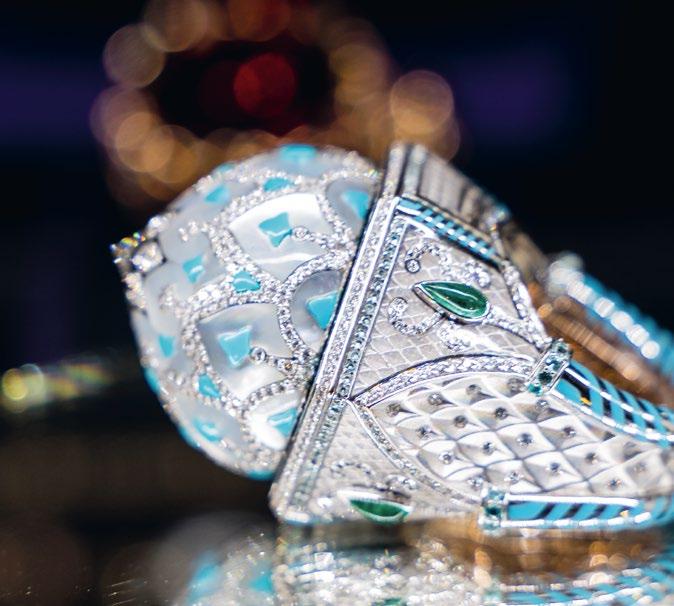


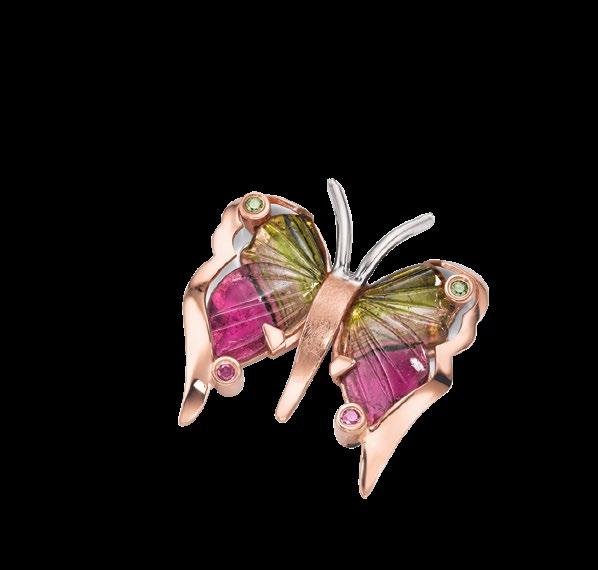
New additions were the “Best in” awards, each of them aimed to highlight a specific facet and assigned by notable professionals.
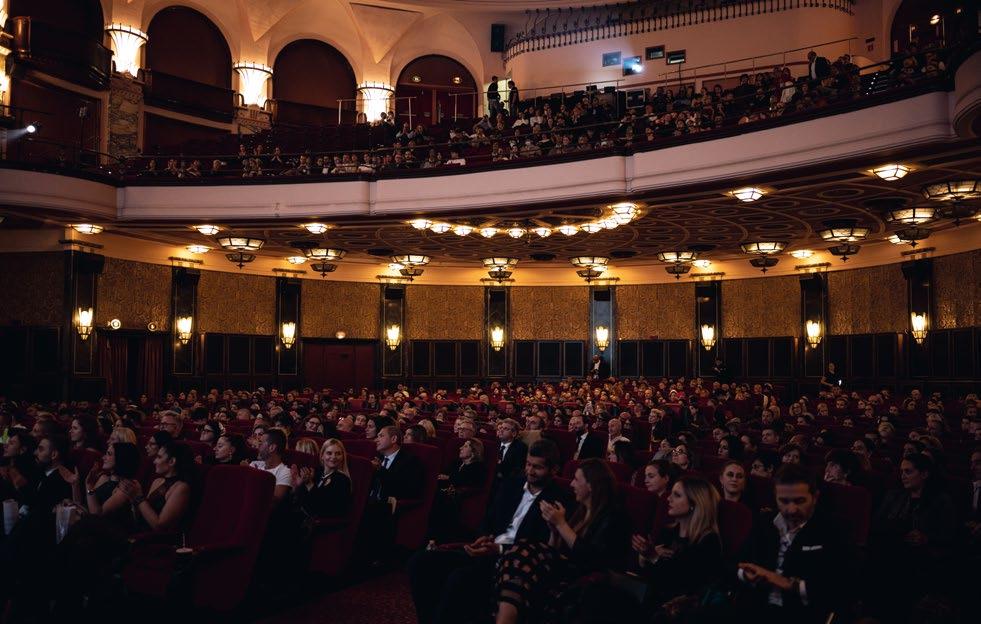
MJW Best in Awards winners: Best in Diamond - Judge: Alberto CasbelliDelegate of Borsa Diamanti d’Italia - Winner: Lenti SRL.

Best in Gemstone - Judge: Paolo CesariAssogemme President - Winner: Alessio Boschi.
Best in Innovation - Judge: Donatella Zappieri - Jewelry Business Consultant - Winner: The Little Things NYC by Nathalie Rollandin.
Best in Technique - Judge: Guido SolariDirector of Scuola Orafa Ambrosiana and of SOA Lab & Factory - Winner: Christine Faulhaber.
Best in Creativity & Design - Judge: Azzurra Cesari - Project Manager & Product Development of Cesari & Rinaldi - Winner: MAD Joaillerie.
Best in Contemporary - Judge: Lucia MasseiCreative Director of Alchimia Contemporary Jewellery School in Florence - Winner: Bitácora.
Best in Future Jewelry Design - Judge: Formlessness - Winner: Studiocult by Yuliya Veligurskaya.
Valdo Award, special Valdo Spumanti sponsor’s prize - Winner: Ippolita.
During the ceremony the judge Azzurra Cesari, project manager & product development manager of Cesari & Rinaldi, who chose as
the winner of the Best in Creativity & Design award Mad Joaillerie said: “The rough man’s ring is a perfect balance of lines in the respect and exaltation of the rough indicolites, which transcend time. It is precisely this harmony, delicate and powerful, between stone and metal that represents a discreet and timeless innovation: the indicolites, in nature, develop into perfect crystals, and the rational geometry of gold is able, in its essence, to enhance the very nature of the gems. The heart of this jewel is the color, the choice of which is unusual and sophisticated, so well calibrated that it can be the genderless piece par excellence”.
Gianni De Benedittis, founder and creative director of the futuroRemoto brand, assigned the Best Talent award - reserved for one of the students of the Talent Show - to the student Francesco Coda of the Alchimia school, and the special Calibro d’Oro award to Matteo Vitali Design. A special evening that wanted to crown the entire project created by Prodes Italia, which through the conception of the Milano Jewelry Week, celebrates the multifaceted universe of jewelry by revealing in all its shades.
See you in the shining Milan next October!
Through integrations of existing lines and the launch of new collections, Amen prepares in grand style for end of year celebrations, ready to surprise the public of end consumers with jewels that combine spirituality and the deepest feelings - the north star of the company production - with an original design, with an eye to fashion and party nights, taking inspiration by high jewellery and the brightness of precious stones. Restyling is carried out through the introduction of new typologies, colors, manufacturing and details impeccably executed.

Croce, Natura, Fiore della Vita, Tennis, Cocktail and Chiama Angeli are the new leading Autumn Winter collections of the company: they are made of silver and gold plated silver with white and colored zircons. Amen proposal is wide, complete and able to meet the most diverse needs and expectations. Last but not
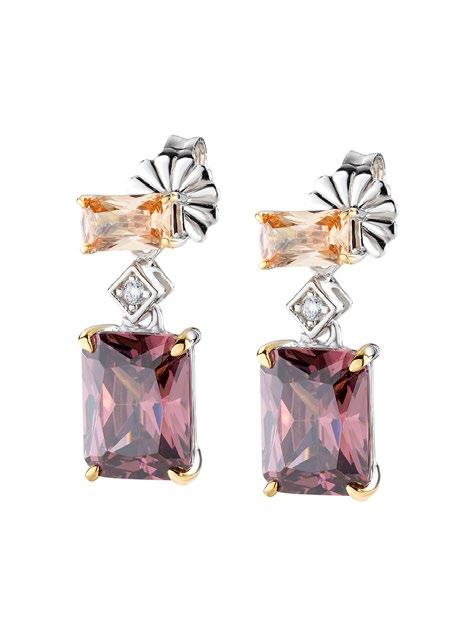
least, its quality-price ratio is really interesting, and its fashion jewellery is accessible to everyone, perfect also for the younger generations. Not by chance Amen is meeting with great success at an international level: in 2021 the company generated a turnover of 15 milion Euros, reaching a total of 740,000 sold pieces and increasing its sales by 44% compared to 2020. The same trend is confirmed for 2022, the tenth anniversary of the brand, with an increase of 17,91% compared to 30 June 2021.
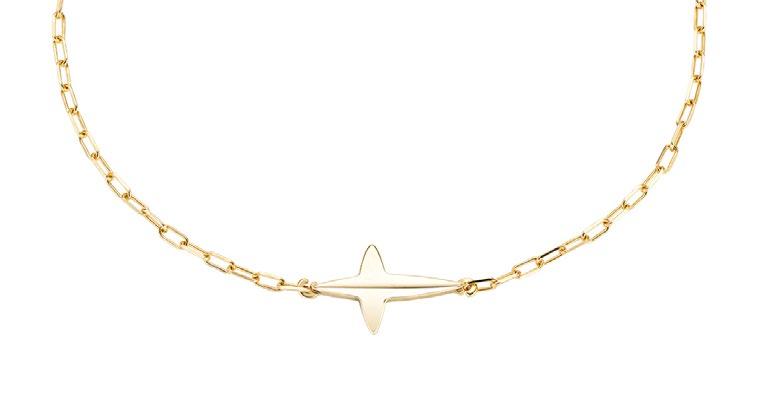
The new proposals of the Arezzo based company meet the most diverse needs and expectations
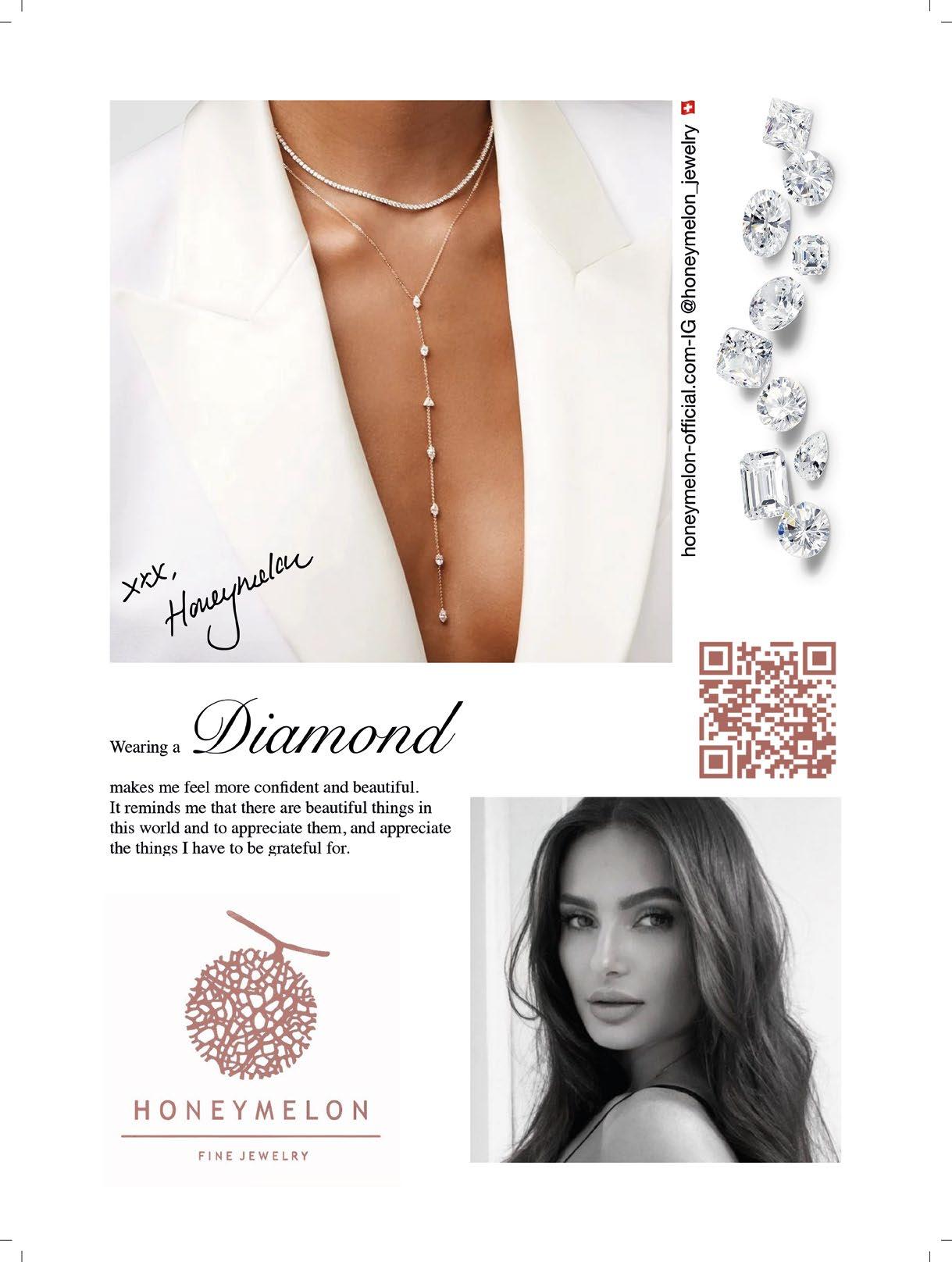
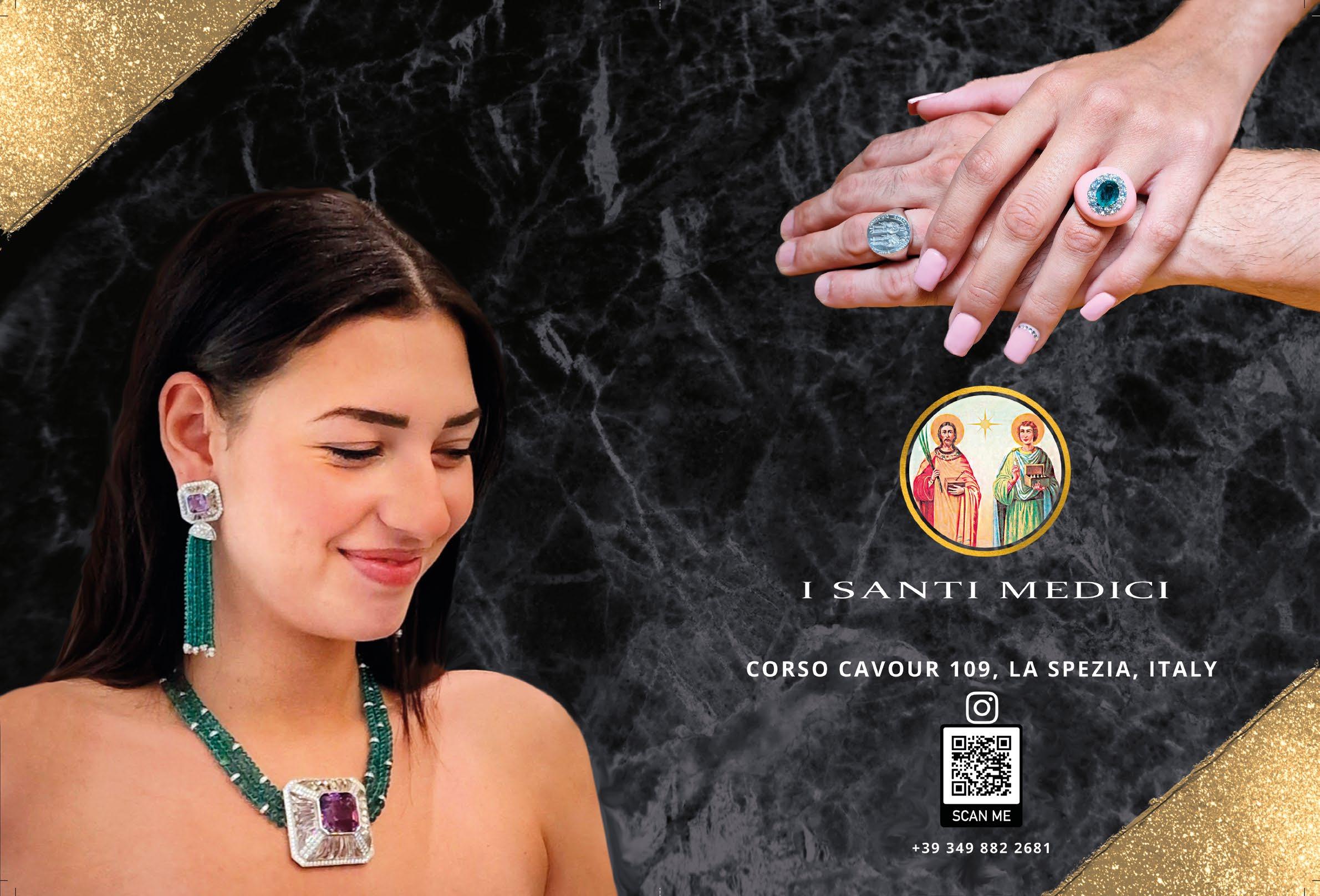

During Milano Jewelry Week the creations of the Russian designer and gemologist Olga Shatrova met with great success and were much admired by visitors and professionals

Olga, can you tell us about your creative path?
Well, it started while studying at Moscow Mining University in 2012, where I was taught gemology and I began to try my hand at jewelry design. I visited all the available exhibitions of classic and modern jewelry, which inspired me to come up with my own designs. As I was experimenting with a combination of different metals and stones, new ideas for my collections surfaced. I am still constantly improving. My clients appreciate jewelry with a history, as they like to learn about the origin of stones. I also participate in scientific gemological expeditions every year and even make films about it, which clients watch with great interest and professors even use as teaching aids.
What rare stones do you prefer to use in your work?
I find it fascinating to work with spinel. Good specimens boast an incredible display of
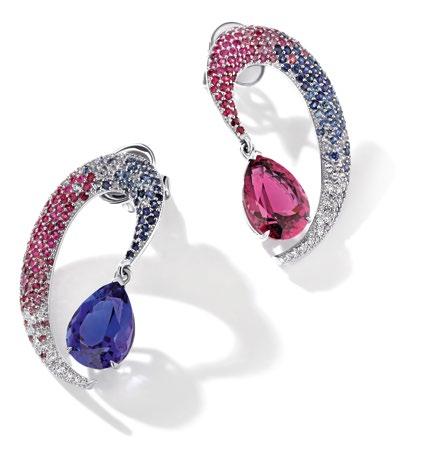
brilliance and color. I also love tourmalines, they can be found in almost all colors and shades. Some more favourites are of the garnet category: spessartine, indigolite, demantoid, tsavorite, color-changing garnet and many others. In addition, I really love trapiche emeralds for their unique quality of the graphite pattern found in each stone. I use a wide variety of stones in my work, but those are some of my favourites.
How interesting. Could you tell us more about your jewelry brand?
Our brand bears my name - “OLGA SHATROVA jewelry”. I design everything personally. I oversee each and every step from the start to the finish of the creation process. It begins with a sketch, then I convert my sketches into a 3D computerized design to refine and customize every detail. My team and I design and produce designer jewelry that is undoubtedly unique and one of a kind. One of our brand missions is to feature and promote colored gemstones, as most people have only heard of the more commonly well-known stones such as diamonds, sapphires, emeralds and rubies, etc. Of course, there are an incredible number of gems, and each gem, like the client, is unique.
I saw your jewelry-transformers. Could you tell us more about them?
Transformers are my passion. I have several collections with earrings made from long strands which can be easily turned into rings. One of my latest collections “IGNIS” - with said transformable earrings, were recognized as the best pieces of jewelry in the “Original idea” nomination at the most prestigious Russian jewelry competition “RUSSIA XXI CENTURY”. In my collections, you can also find jewelry with elements which come to life in motion, which are especially appreciated by the majority of my clients.
 by Antonella Garello
by Antonella Garello
You launched Packaging Première in 2017 at an already complicated time for traditional trade fairs. A challenging decision...
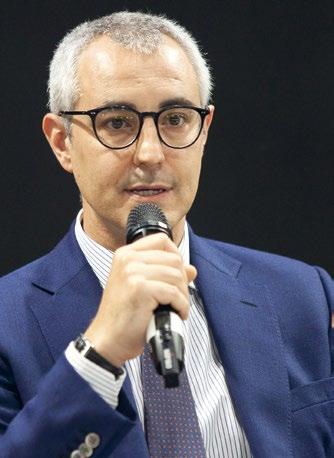
We were already organising trade fairs in other sectors, related to printing and the promotional sector, and we realised that Italian packaging companies were leaders in Europe but there was no exhibition dedicated to their sector in Italy. The problem also concerned the many companies in the world of luxury based in Milan and beyond, which needed high-quality packaging. So we thought of bringing supply and demand together “at home” and it received a warm response straightway, in particular from manufacturers of boxes, bags, and in general companies specialising in printing and the supply and finishing of paper. The predominant presence of which somewhat distinguished Packaging Première: at PCD Paris the opposite happened, with the focus on perfumery and cosmetics.
How did the following editions go?
The event immediately attracted high-calibre companies and visitors. Then, just before Covid, we entered into a partnership with Easyfairs, which organises PCD Paris, and we agreed to launch the Parisian edition of Packaging Première and the Milan edition of PCD. Packaging Première has benefited from PCD Paris with regard to the primary packaging sector, in particular for the world of cosmetics, and for its part has introduced secondary packaging to PCD Paris: an exchange of know-how and expertise that has done well at both events. Unexpected sectors also became involved: some of the most prestigious paper mills taking part, for example, also attracted operators from the furniture world, and luxury in general, who did not come to the fair in search of packaging, but the very best paper for prestigious catalogues or unique invitation and communication cards.
What has changed with the pandemic?
The end of the pandemic left us longing to come together, especially with trade fairs such as Packaging Première, where the product is a feast for
Pier Paolo Ponchia, founder and manager of Packaging Première, meeting space dedicated to luxury packaging, showcases the event’s strengths and reveals what’s new in the 2023 edition.
the eyes and fingers. On the other hand, we have also kept the technology we got used to with Covid: for example, we have introduced smart badges whose readers let visitors share information with exhibitors without having to meet: this virtual exchange of information can continue throughout the year, leading to further interactions.
Do you plan on keeping the same formula in 2023?
Yes, but with a few tweaks. We are definitely going to welcome back Avant-Garde, the contest that promotes innovation in packaging: a jury of experts will select the best projects from the exhibiting companies taking part that will be exhibited and showcased in a special area. We are also going to repeat the spin-off of Pentawards, the most important packaging design award in the world, with internationally renowned designers taking part; the conference program will touch on the most important issues. And the event “is going to be even bigger”: Packaging Première
and PCD Milan will be hosted in two separate pavilions. Spaces are already running out.
Do you see trends that affect the packaging world in general?

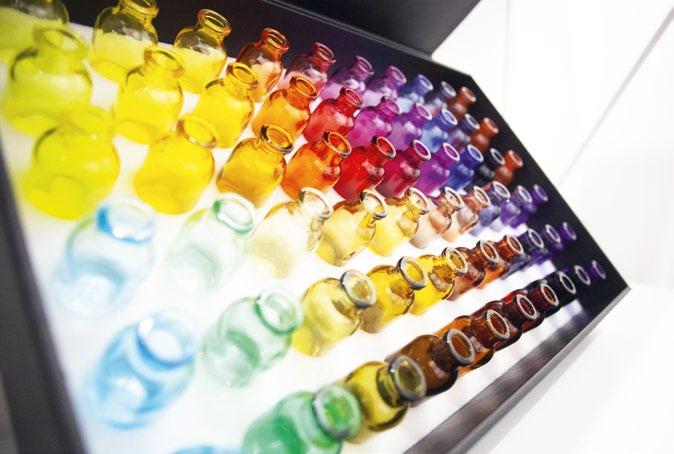
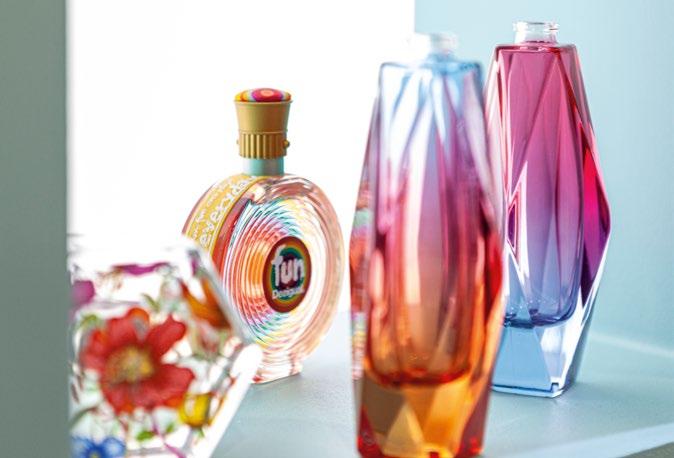
A common feature is the focus on sustainability, especially regarding the carbon footprint, the impact on the environment throughout the packaging production process, up to its disposal. In many sectors, the aim is to reduce materials - by reducing thicknesses or quantities - and to reuse: a strong commitment, which can make the end user more responsible. New ways to reuse packaging returned or waste products such as office paper or waste from customer production are being experimented with. A cutting-edge paper mill like Favini makes eco paper with citrus fruit, coconut, and dried fruit waste... It is a very creative moment, new materials and technologies are rapidly changing the world of luxury.

After a master’s degree in Furniture Design in Helsinki, she worked in lighting (as an art director at Nemo Lighting, she took care, among other things, of all the re-editions of Le Corbusier and Charlotte Perriand lighting products). She has been working in the world of packaging for years: since 2013, she has created all Venchi packaging lines in collaboration with Margherita Pareali. As the art director of Icma Sartorial Paper, she creates paper collections for the world of luxury packaging and she is also involved in communication.
How can packaging communicate a brand’s values?
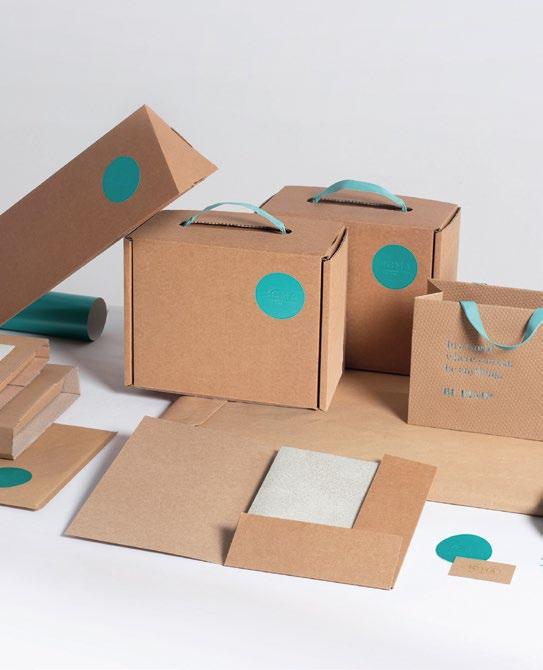
On the one hand, luxury packaging is increasingly a corporate element aligned with the brand and must represent its values and communication codes, such as colours or materials. Corporate codes repeating themselves over time can become true icons, symbols of tradition and lasting values. On the other hand, packaging can also be short-lived, for example, when it’s meant to convey the spirit of a particular collection or capsule, and in that case, it can dare to have more of a “pop” look. Thanks to technology, we are now spoilt for choice in materials, boxes, and prints.
What are the consumer’s expectations about packaging?
Thanks to social media, we realised that the unboxing ritual is always essential, which is why it is being analysed more and more. In this sense, packaging is integral to the
Co-founder of the UNA works studio with Margherita Paleari, Valentina Folli has always been involved in design in all its forms.
relationship between products and buyers. It communicates values but also creates the initial wow moment. In addition, it can also represent symbolic values: for example, when it comes to a luxury object, such as a jewellery piece, it can be passed on to future generations.
What has changed with the boom of online orders during and after the pandemic?
An item ordered online must communicate by itself: there is no one there to pack my purchase and hand it to me. So, on the one hand, communication methods have expanded, with cards or more or less specific messages inside the package; on the other, as I said, the opening moment is crucial. We must also remember that even the secondary packaging has acquired its own dignity. Whoever buys a luxury product from a company website expects care and quality in the secondary packaging, too. Moreover, since it is a product that people will throw away, it instantly shows how much attention the brand pays to sustainability, a theme that is particularly dear
to me. With ICMA we have created a singlematerial, entirely recyclable packaging for shipments, which was an immense satisfaction for us.
Sustainability and reuse are two topical themes.

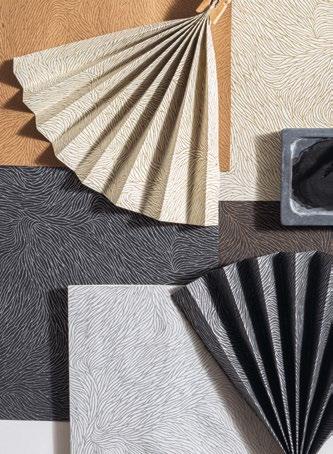
A critical aspect is people’s sensitivity to these issues. Packaging can play an important role because it can convey collective images and modify aesthetic sensibility, leading people to appreciate sustainable, new-generation materials. The issue is complex because packaging can be sustainable or not, depending on its life cycle or how it is then recycled. Even 100% recycled paper no longer necessarily translates into cheap brown cardboard: we have some beautiful paper that perfectly meets customers’ expectations and is also sustainable. However, sustainability should be assessed on a case-by-case basis. Products with a very expensive life cycle should be protected in the most appropriate way, even with plastics, rather than wasting their value. The same goes for reuse: if packaging can last over time, it may not be 100% recyclable, and it’s okay. In this case, the brand can also give customers ideas, for example, through social media, on how to reuse the packaging, which this way provides additional value.
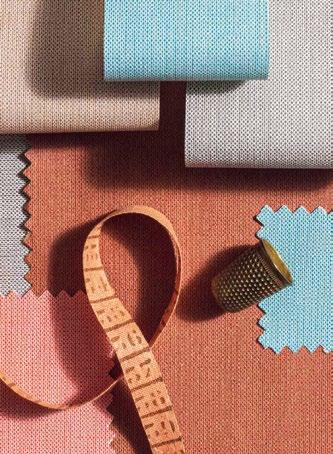
German silversmith Philip Wolf expressed himself this way almost two centuries ago, realising that his silver objects sold more if presented in attractive boxes and cases. When his boxes began to be more sought-after than their contents, Wolf reacted accordingly by starting to produce boxes not only aesthetically perfect in terms of design and materials, but meticulously studied so as to truly safeguard the treasures contained inside. Ever since way back in that 1834 generations of the Wolf family have handed over the reins - today we are at the fifth, represented by Simon Philip Wolf V - without ever betraying the innovative and entrepreneurial spirit of the founder. Jewellery boxes, watch cases, watch winders, safes: Wolf has continuously innovated them by investing in research, technology, design, colours, perfecting devices, security systems and hinges, patenting new solutions, winning global acclaim and making them sophisticated and perfect objects, sought after by the main jewellery and watch makers around the world. This year also marked Wolf’s debut in the world of luxury leather accessories: the Mimi by Wolf women’s collection calls to mind the Japanese Sagemonos and comprises small and handy pieces for storing everyday items such as EarPods, mobile phone, keys and credit cards. They can be worn alone or in a number, attached to the included leather wristlet. The Mimi Crossbody Bag can be worn over one’s shoulder or around the waist, with or without attachments. The men’s collections were showcased at Pitti Uomo, which include a range of accessories such as wallets, document holders, wash bags: W is made from sustainably sourced genuine leather, while Signature is a 95% sustainable, vegan collection made from recycled materials such as apple pulp and plastic bottles. Items can be purchased directly on the wolf1834.com website.
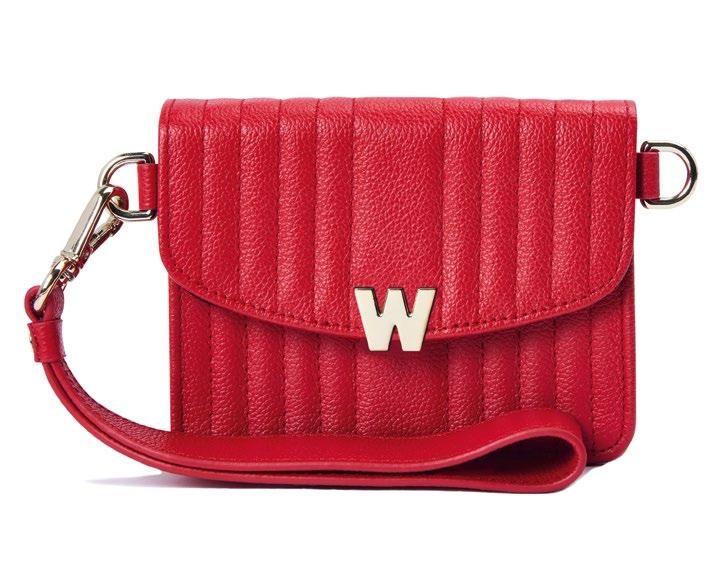
Wolf: “It is logical to protect one’s possessions by storing and safeguarding them in a fine quality case”.

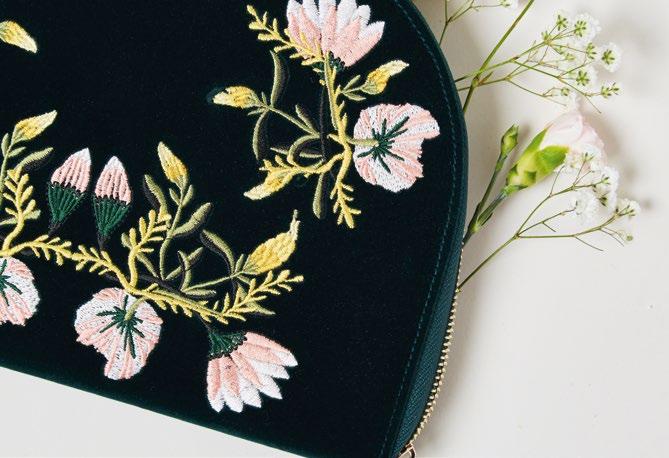
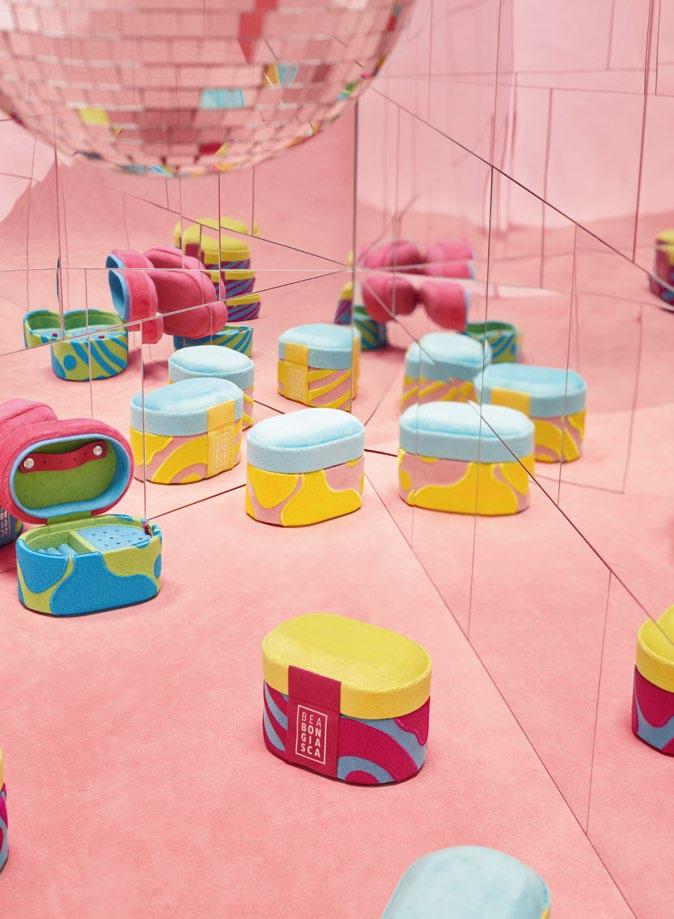
The data of the latest Luxe Pack Monaco, which took place in October in the Principality, confirm the vital and central role of the packaging industry: according to the data provided by the organisers, the eventfor luxury packaging professionals in various sectors, from cosmetics and perfumery to wines & spirits, delicatessens, and so on - attracted just under 10 thousand high-profile visitors, over half of which were foreigners, registering a +20% from 2021 and a +5% compared to 2019, i.e. the pre-Covid edition. A particularly positive sign is the return of international players from countries such as the USA, UK, Italy and the Middle East, who were practically absent last year. LUXE PACK Monaco confirmed its role as a critical event for the world of packaging: the three-day event was an opportunity for all supply chain players to take stock of news regarding materials, products, market trends and innovations, exchanging information on various issues through a rich schedule of conferences and workshops with over 100 qualified speakers. 13 meetings are available for replay on the luxepack.com website. Inevitably, the event spotlighted eco-design and sustainability, with hundreds of exhibitors proposing “green” solutions to reduce packaging and promote recycling and reuse. In this context, the success of the LUXE PACK in Green Awards, which received over 60 applications (for the record, the winning brands were ARJOWIGGINS and ALTUS COATING), proved just how many resources the sector is devoting to best practices to preserve the environment.
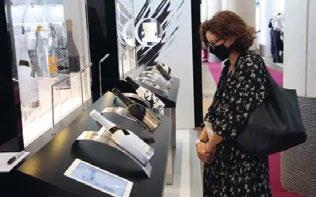
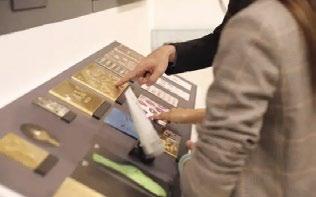
Glass - declared material of the year 2022 by the United Nations - was another highlight, with a capsule of the finest European glass-making companies specialising in beauty, perfumery or spirits. The next Luxe Pack Monaco is scheduled for October 2 to 4, 2023, again at the Grimaldi Forum in Monaco.
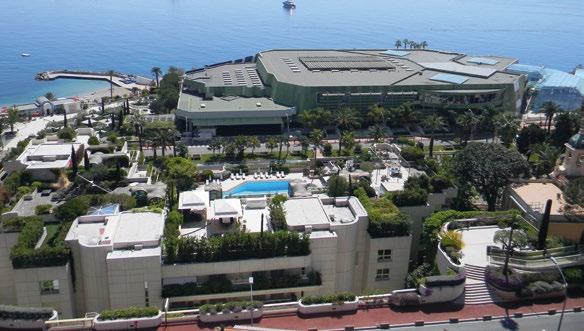
The last edition of Luxe Pack Monaco took place in October and saw the participation of premium packaging manufacturers from all over the world who presented their production to an international public. It was the occasion to take stock of the situation regarding materials, sustainability, market trends and innovations.


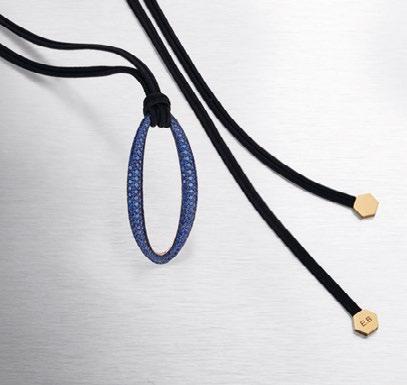
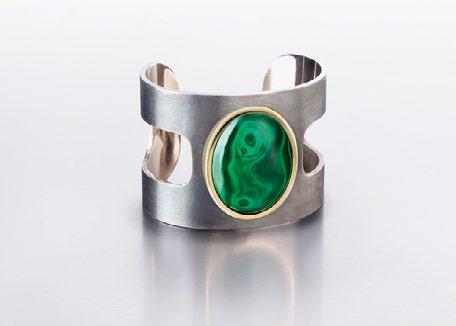

Exclusive and refined, EARTH BLUSH’s creations are the outcome of the exquisite taste of the founder and jewelry designer Elizabeth Azar. Born in Beirut and educated in Paris, after having lived in Tokyo for three years, Elizabeth decided to leave her job as a corporate lawyer and follow her passion for luminous gems. She has become a certified diamond grader and graduate gemologist from the ING - Institut National de Gemmologie in Paris and from the HRD - Hoge Raad voor Diamant in Antwerp. Thanks to her love for outstanding gemstones and for the excellent manufacture, she gives life to fabulous bespoke pieces of jewelry for a demanding clientele and to ravishing creations in limited editions.
“Excellent French know-how and attention to detail at every stage of crafting a jewel make definitely the difference”. She usually takes care of her clients and their requests in her Parisian ateliers with personal advices, turning their dreams - or their antique family pieces - into unique masterpieces with an audacious and contemporary twist. Elizabeth’s creations are mainly influenced by her numerous travels all over the world along with her multicultural roots, and definitely by her passion for architecture.
IIJS India International Jewellery Show
MUMBAI, 5/9 JANUARY 2023 • info: gjepc.org
International Jewellery Tokyo
TOKYO 11/14 JANUARY 2023 • info: ijt.jp
Maison et Objet
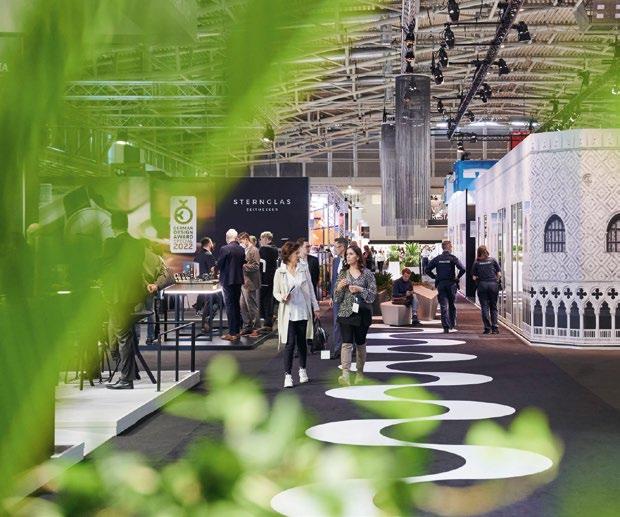
PARIS 19/23 JANUARY 2023 • info: maison-objet.com
VicenzaOro
VICENZA 20/24 JANUARY 2023 • info: vicenzaoro.com
Bijorhca Who’s Next
PARIS 21/23 JANUARY 2023 • info: whosnext.com
Madridjoya
MADRID, 2/5 FEBRUARY 2023 • info: ifema.es
JGT Jewellery Gem & Technology
DUBAI 12/14 FEBRUARY 2023 • info: jgtdubaijewelleryshow.com
Homi Fashion & Jewels
MILAN 17/20 FEBRUARY 2023 • info: homifashionjewels.com
Inhorgenta Munich
MUNICH 24/27 FEBRUARY 2023 • info: inhorgenta.com
White Milano
MILAN 24/27 FEBRUARY 2023 • info: whiteshow.com
HKTDC Hong Kong International Diamond, Gem & Pearl Show
HKTDC Hong Kong International Jewellery Show
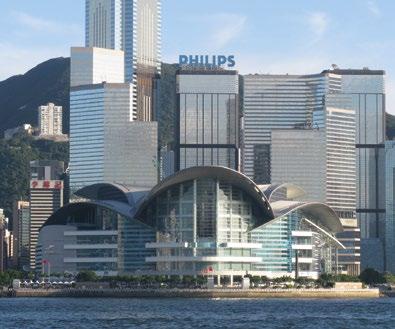
HONG KONG 1/5 MARCH 2023 • info: hktdc.com
Première Classe Who’s Next
PARIS - 3/6 MARCH 2023 • info: whosnext.com
Il Tarì - Open
MARCIANISE, 3/6 MARCH 2023 • info: tari.it
Istanbul Jewelry Show
ISTANBUL 16/19 MARCH 2023 • info: istanbuljewelryshow.com
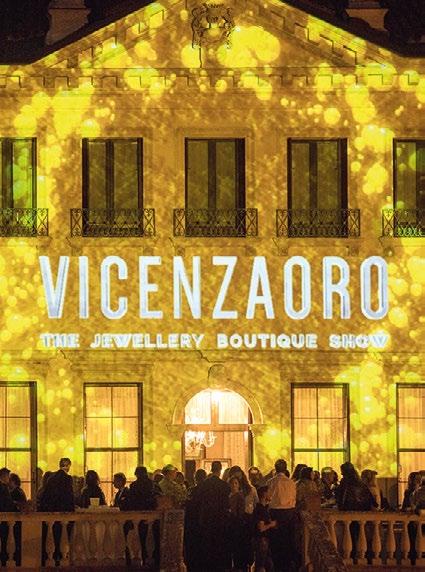
Amberif
GDANSK, 22/25 MARCH 2023 • info: amberif.pl
JIS Spring
MIAMI BEACH, 26/28 MARCH 2023
Watches & Wonders
GENEVA 27 MARCH - 2 APRIL 2023
*Event dates are subject to change or cancellation. Please check the status of your event in the website.
• info: jisshow.com
• info: watchesandwonders.com

Follow us on
February 24–27, 2023

Europe’s leading platform for jewelry, watches and gemstones
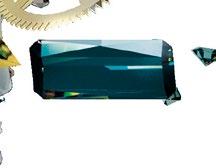
Get your ticket now: inhorgenta.com/ tickets
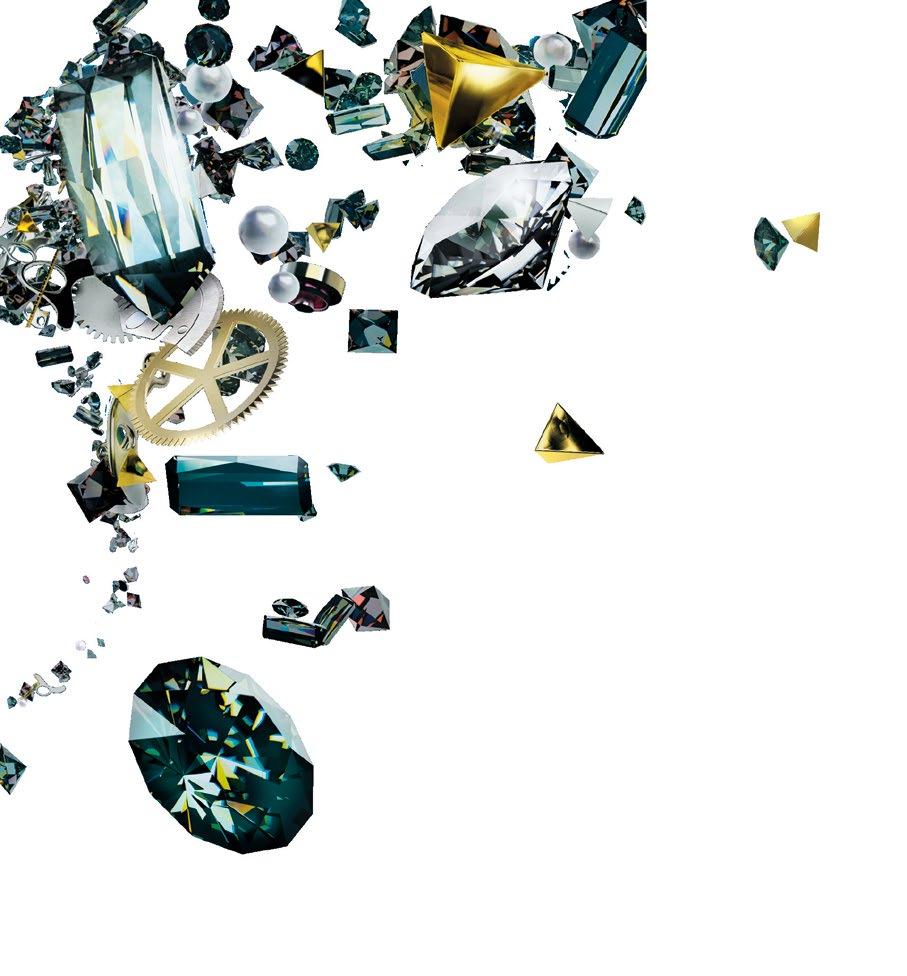
Albertina
Until 8 January 2023
Basquiat. The Retrospective albertina.at

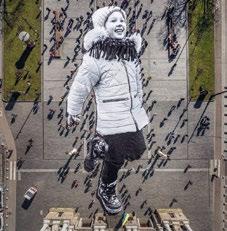
Musée des Arts
Décoratifs
Until 22 January 2023
Shocking! Les Mondes
Surréalistes d’Elsa Schiaparelli

madparis.fr

Kunsthalle
Until 15 January
Villa Medici
Until 15 January 2023 Collection - 150 photographs from the Bachelot collection villamedici.it

The National Gallery
Until 22 January 2023
The Credit Suisse Exhibition. Lucian Freud: New Perspectives nationalgallery.org.uk

JR: Chronicles kunsthalle-muc.de
Fundación María
Cristina Masaveu
Peterson
Until 22 January 2023
Masaveu Collection.
Spanish NineteenthCentury Painting.
From Goya to Modernism fundacioncristinamasaveu.com
Los Angeles County Museum of Art
Until 19 February 2023
The Space Between: The Modern in Korean Art lacma.org
Guggenheim Museum
Until 20 February 2023
Alex Katz: Gathering guggenheim.org
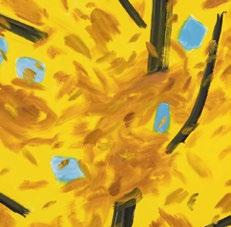
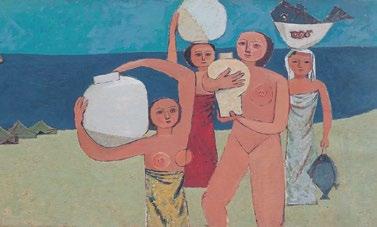
Museo Civico
Archeologico
Palazzo Reale
Until 26 February 2023
Max Ernst palazzorealemilano.it
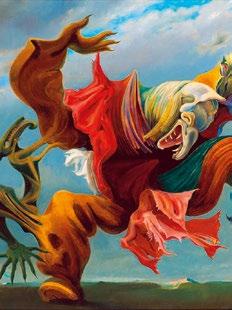
Fondation Louis
Vuitton
Until 27 February 2023
Claude Monet - Joan Mitchell, dialogue

fondationlouisvuitton.fr
Until 19 March 2023
The Painters of Pompeii museibologna.it
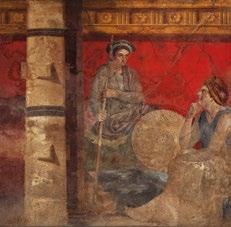
*Event dates are subject to change or cancellation. Please check the status of your event in the website.
Museo degli
Innocenti
Until 26 March 2023
Escher
museodeglinnocenti.it




